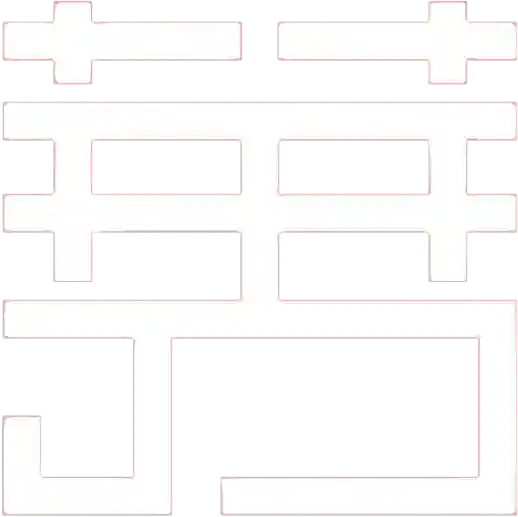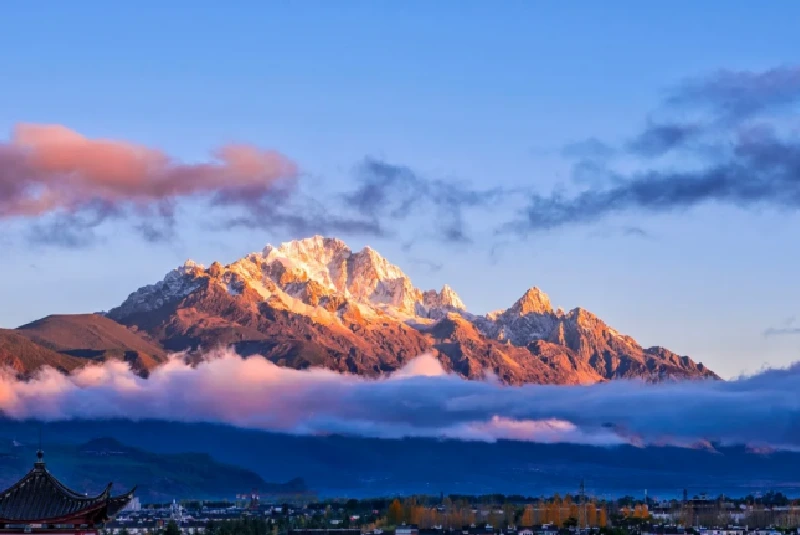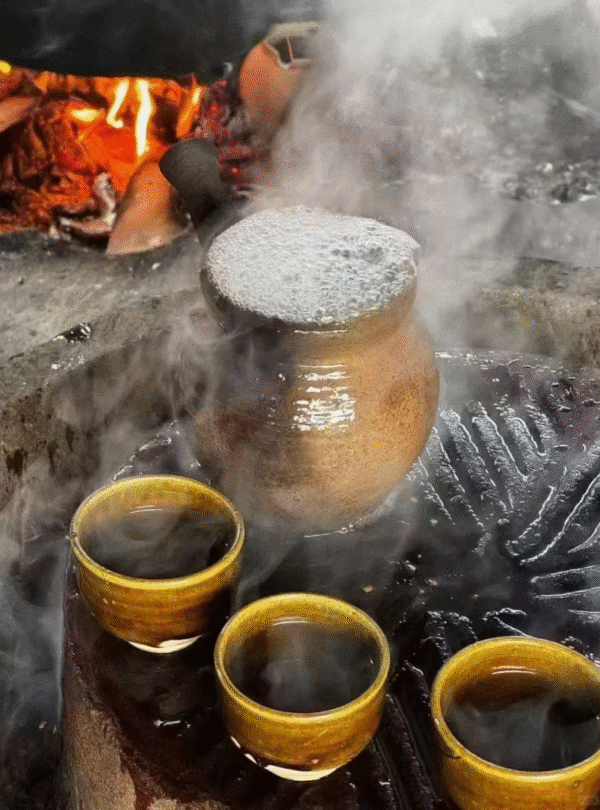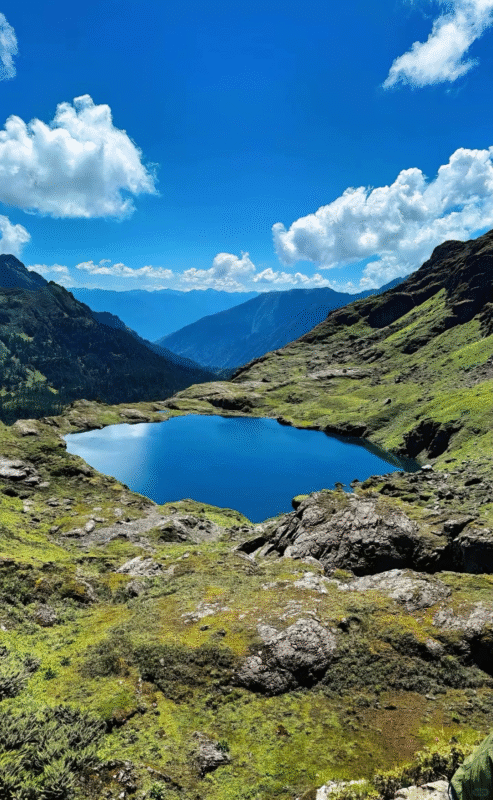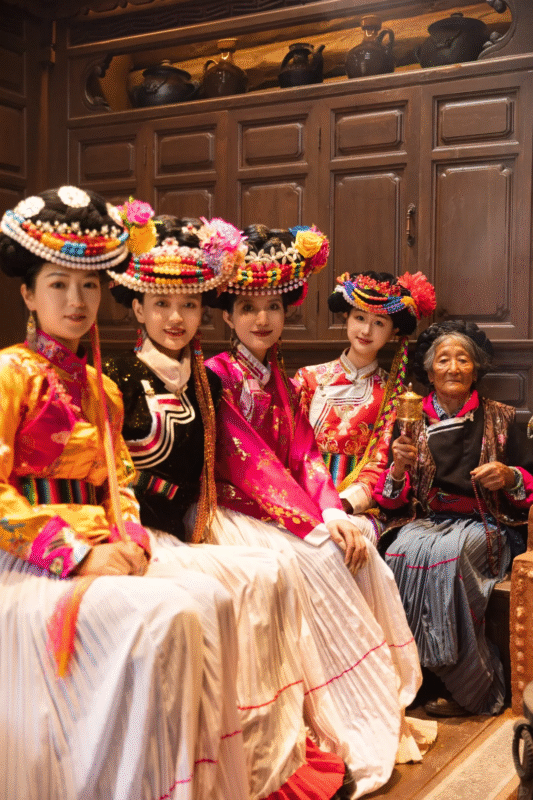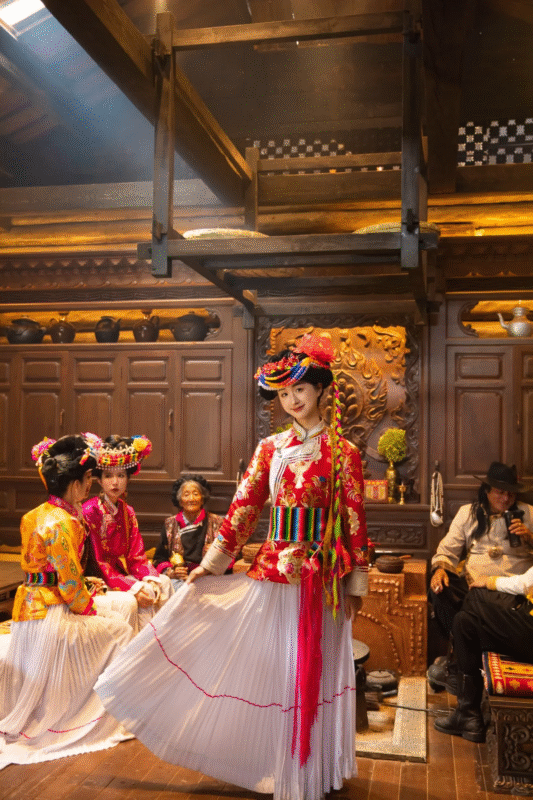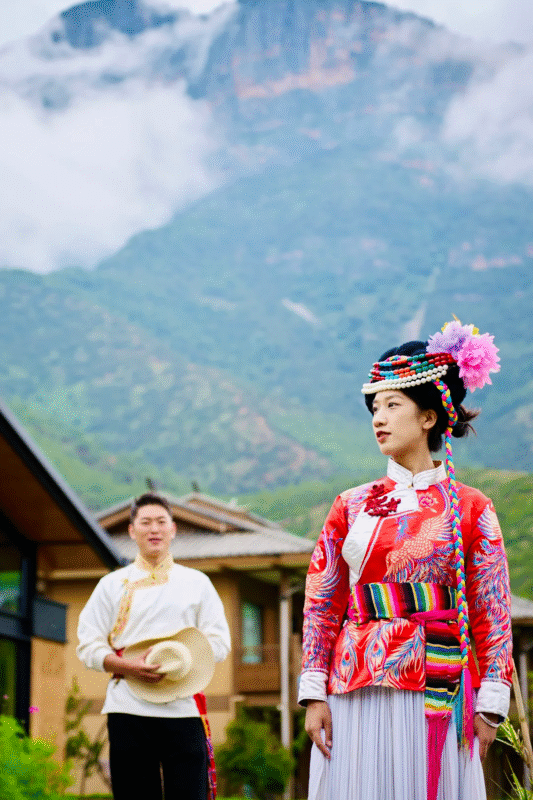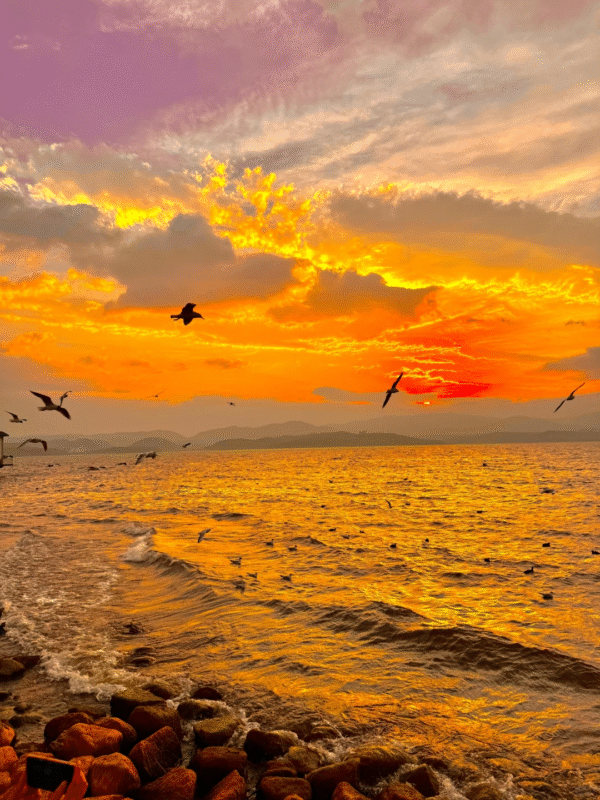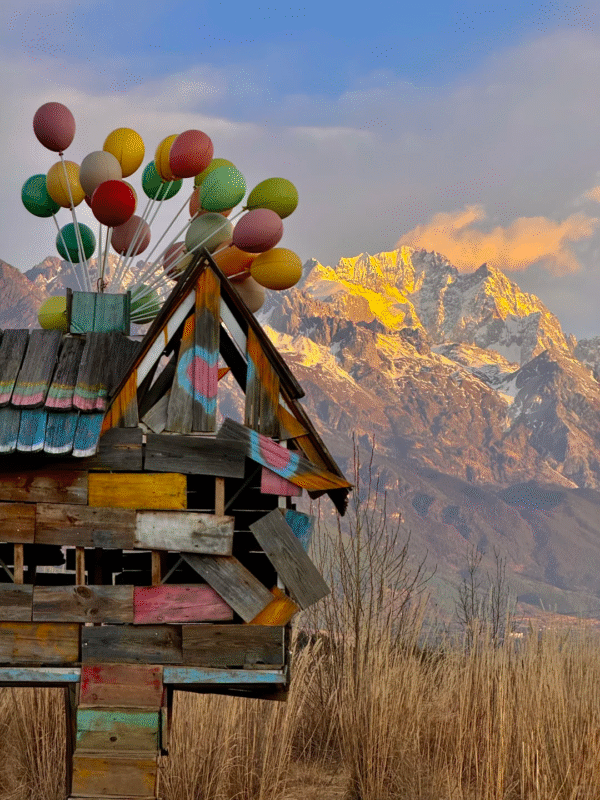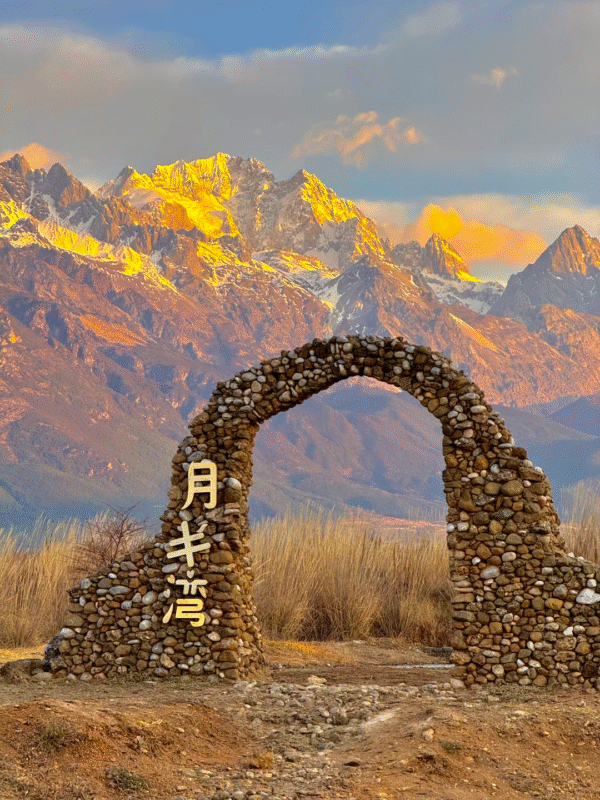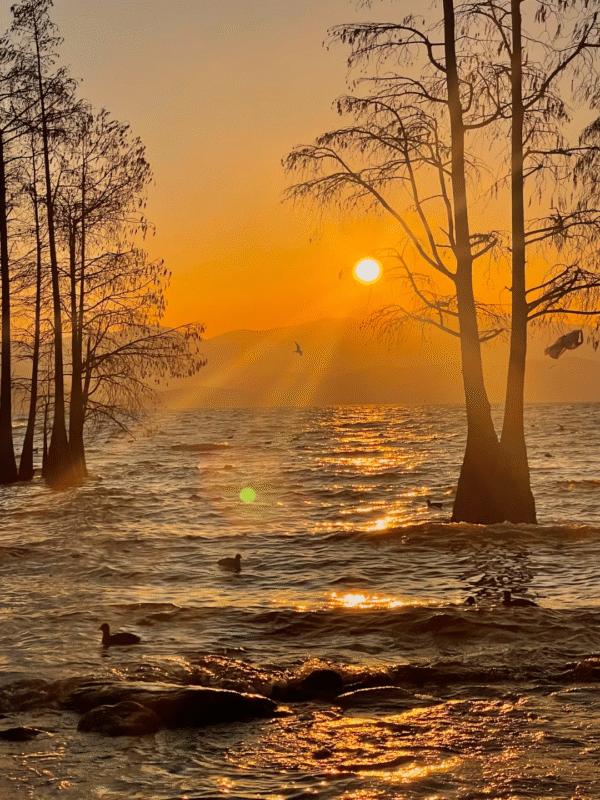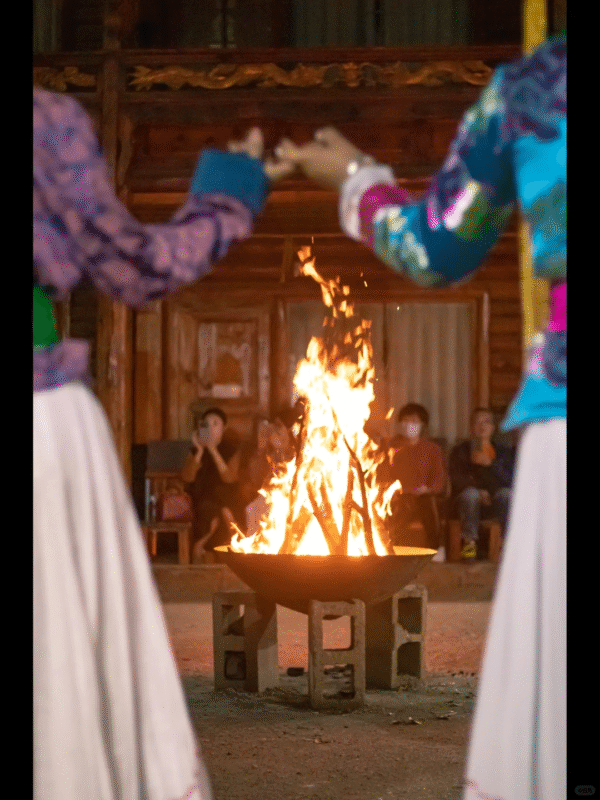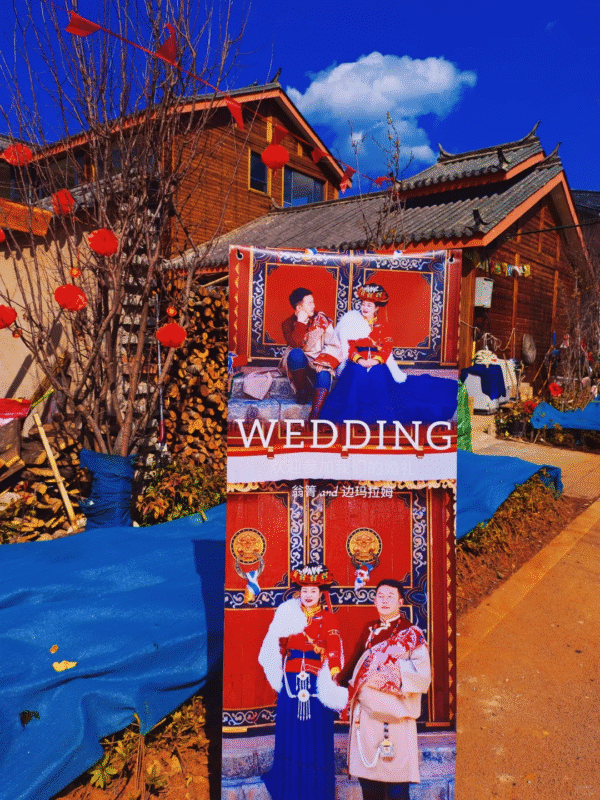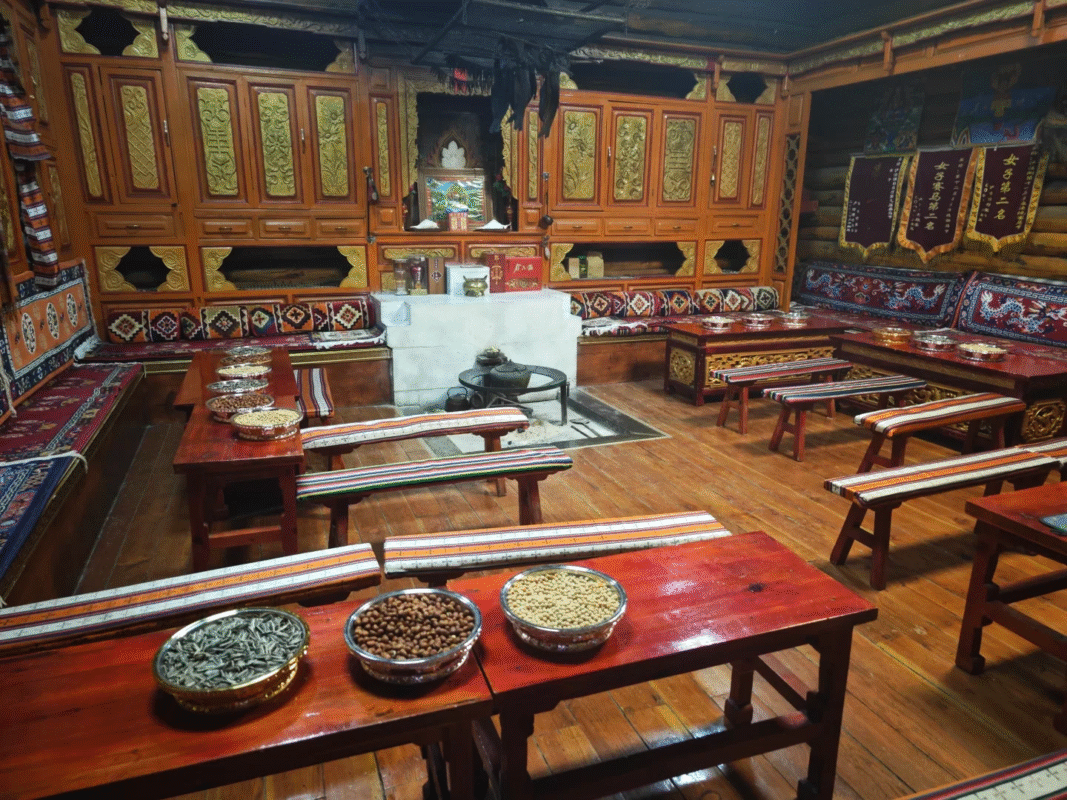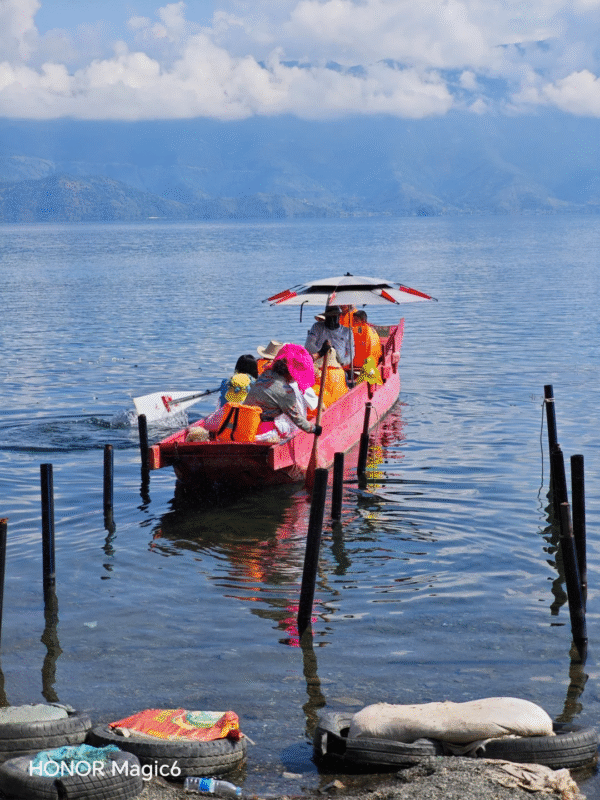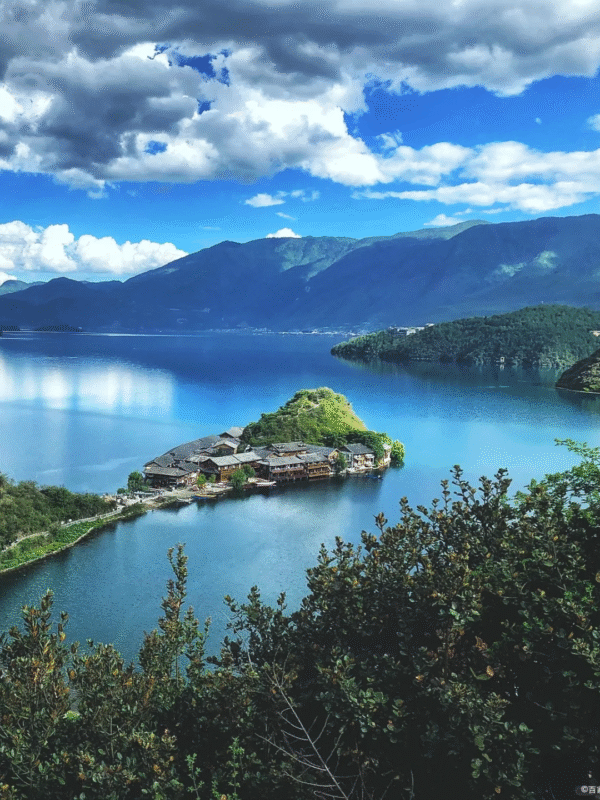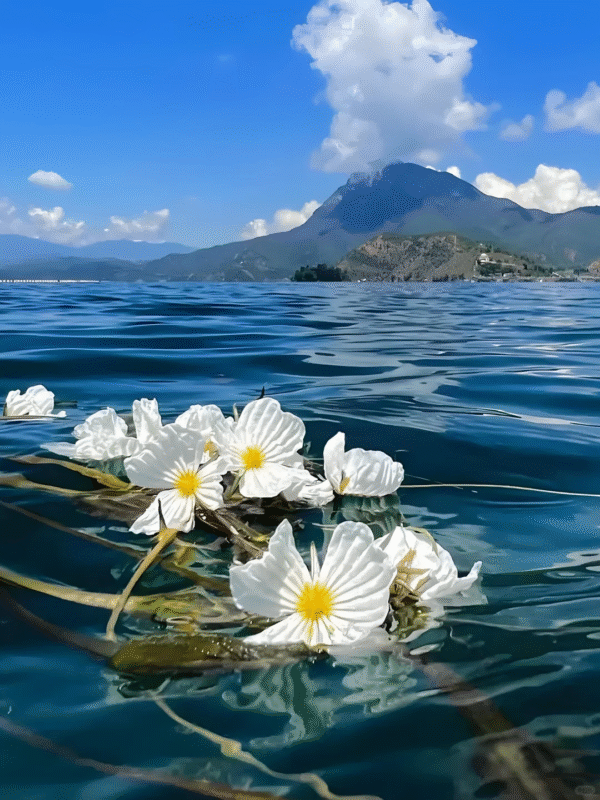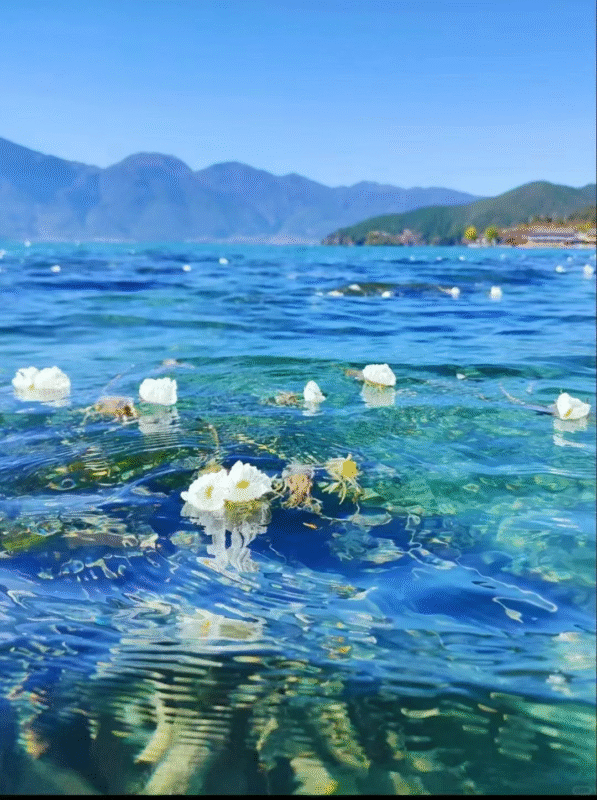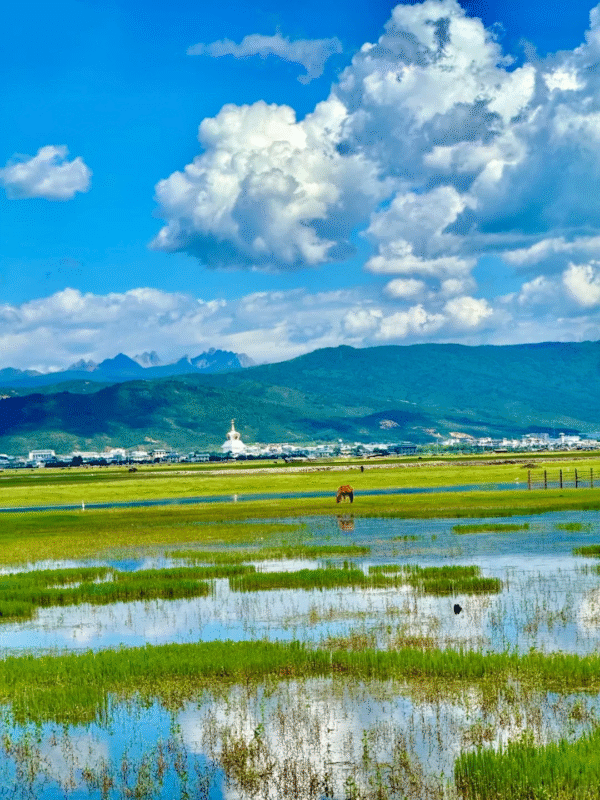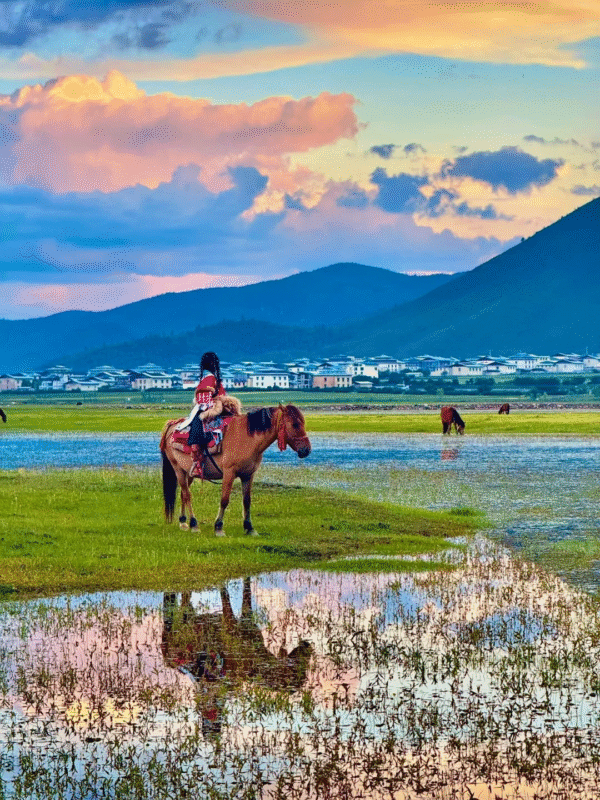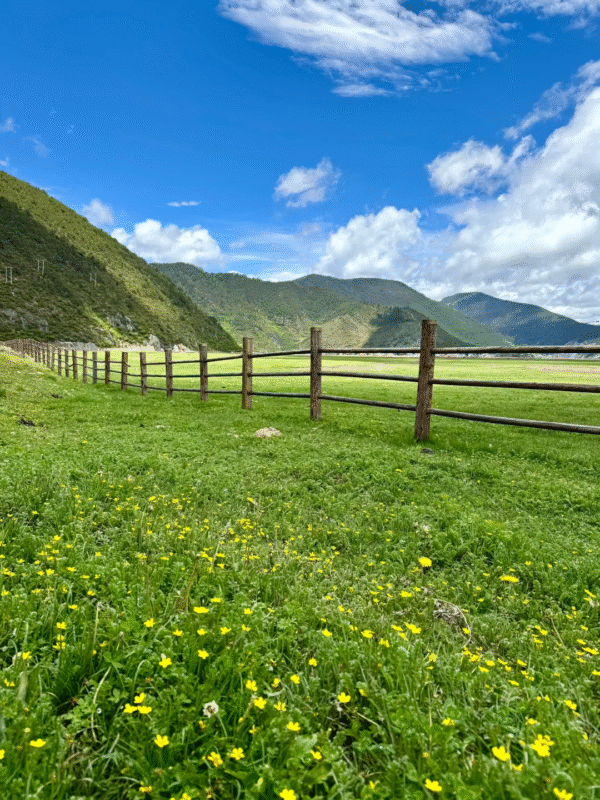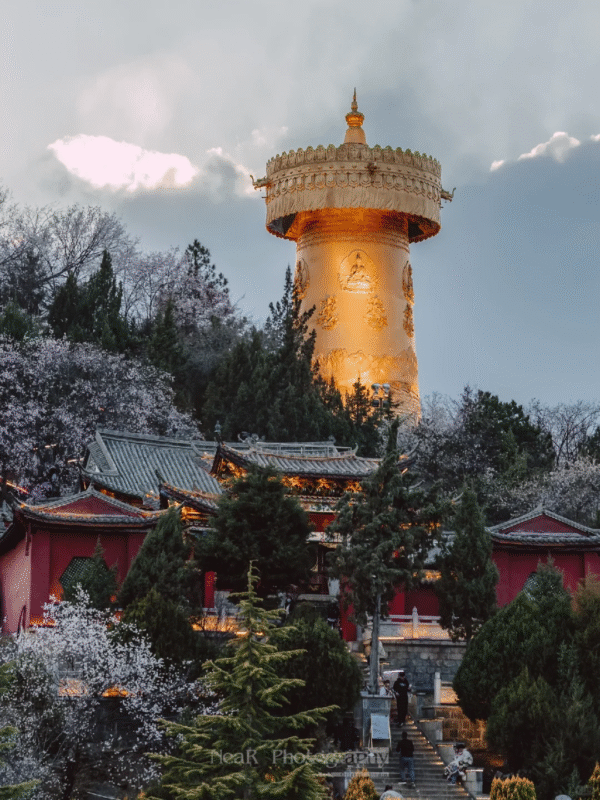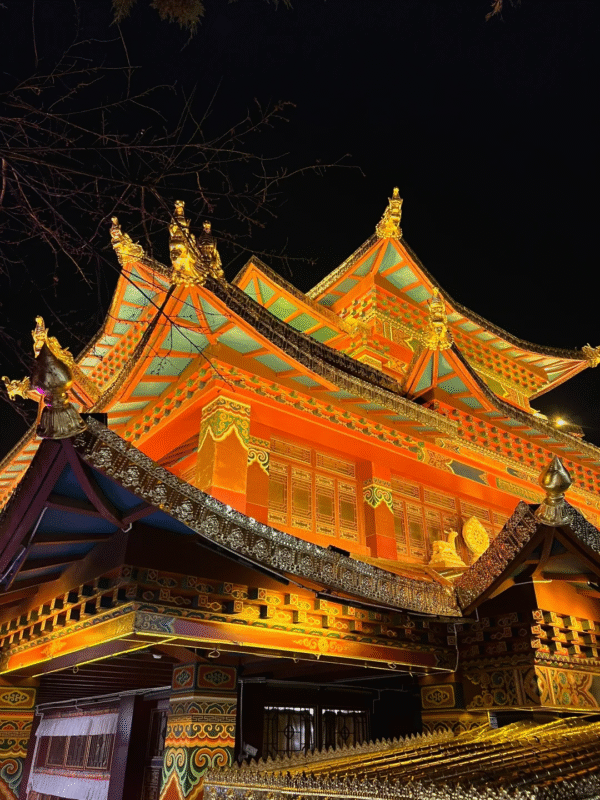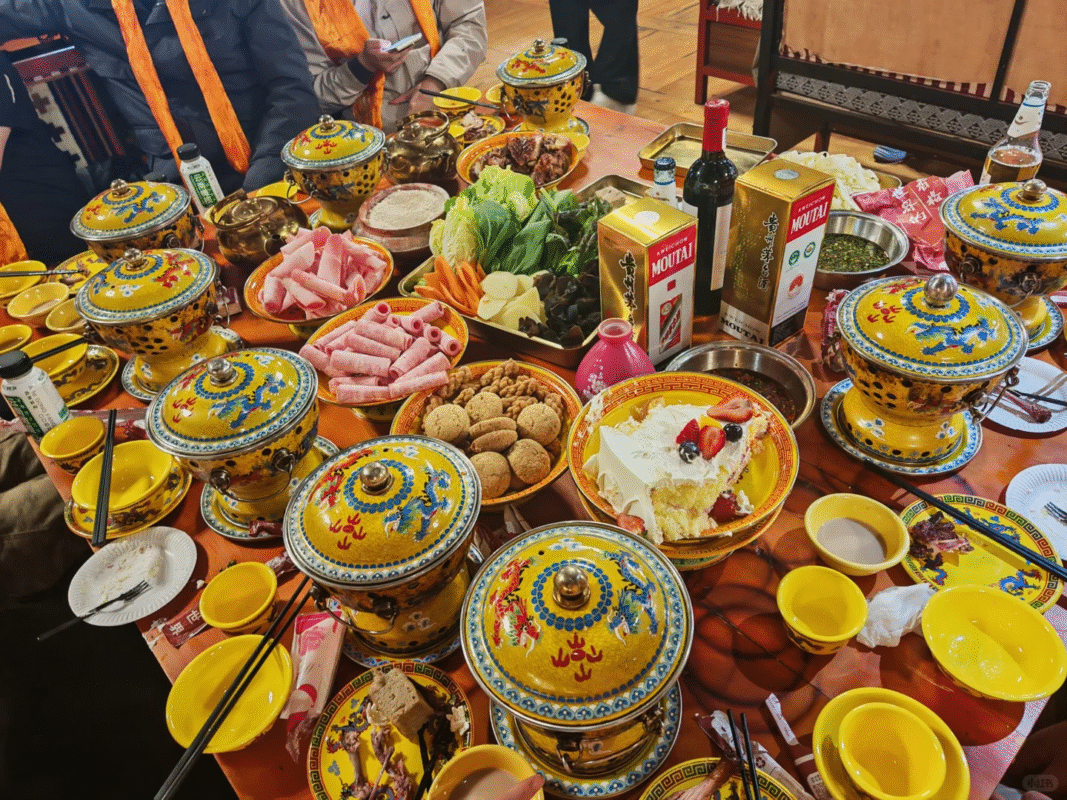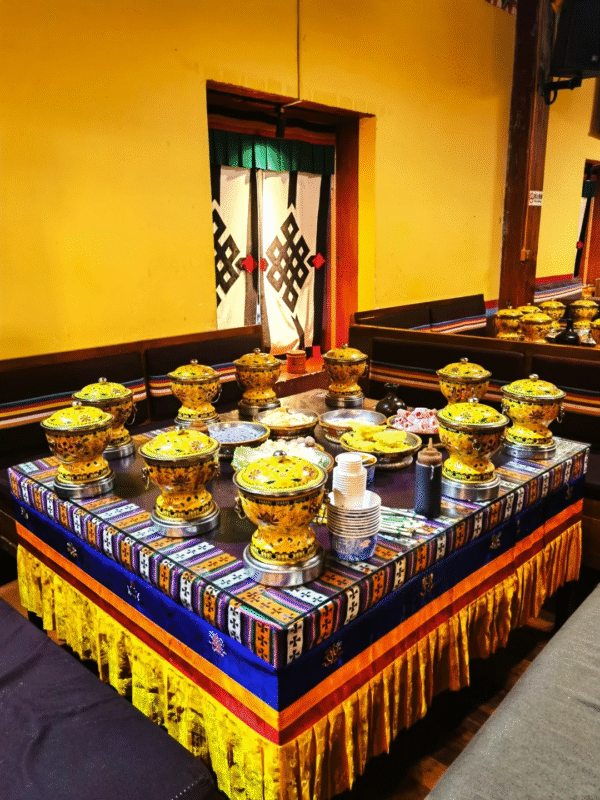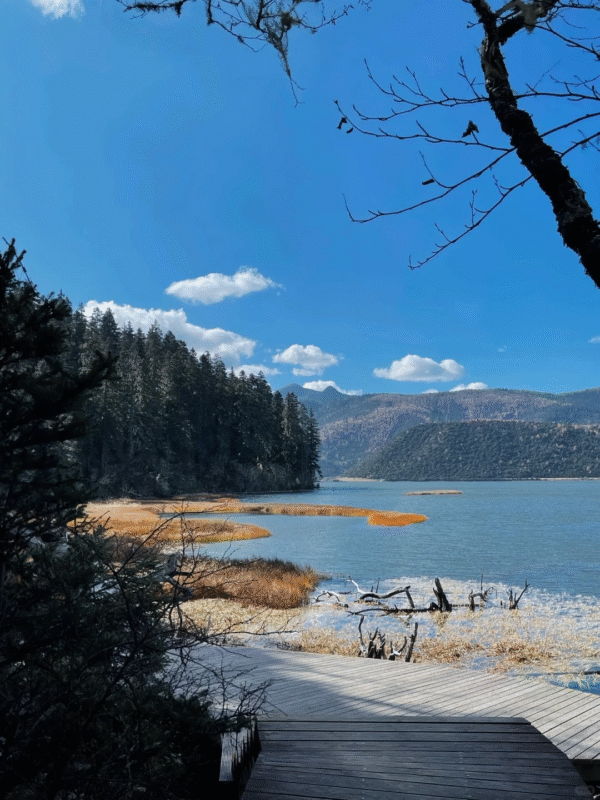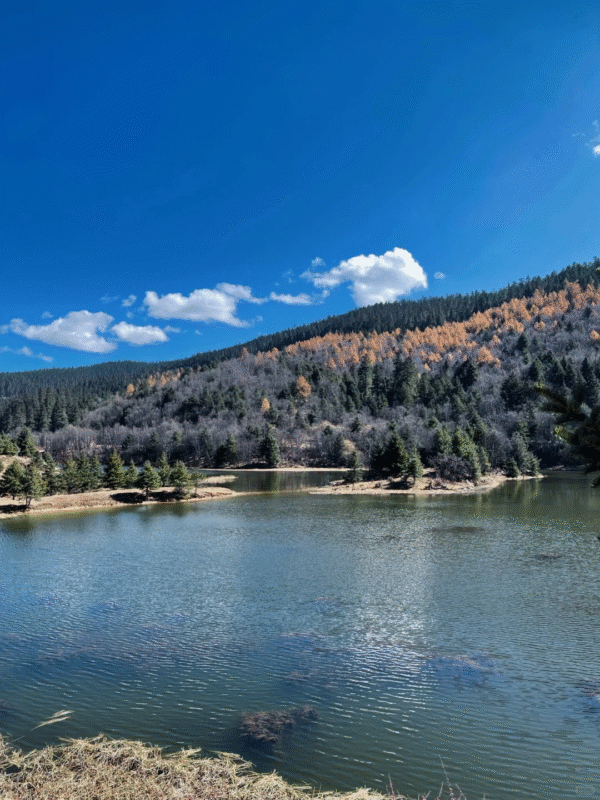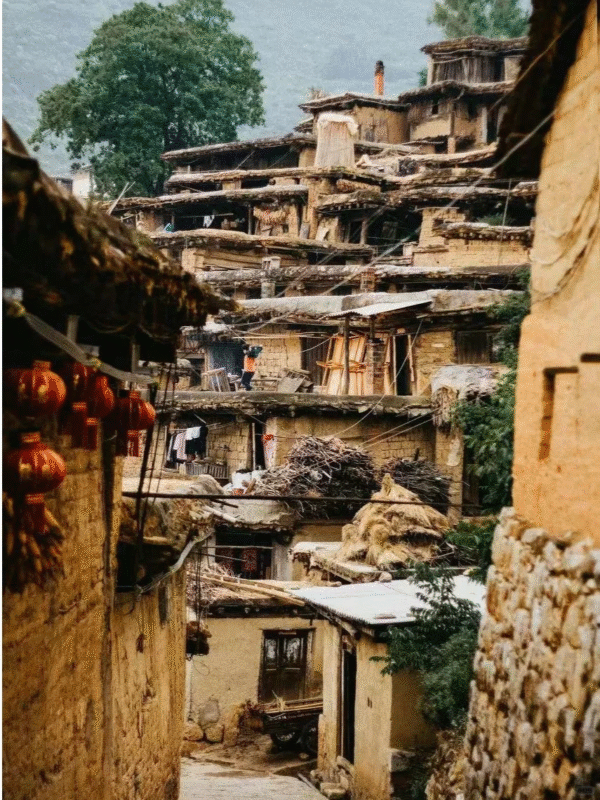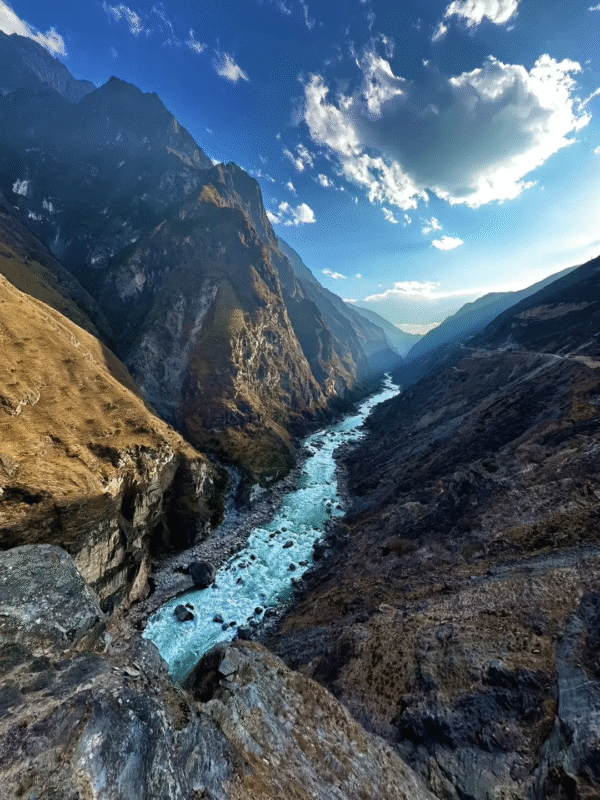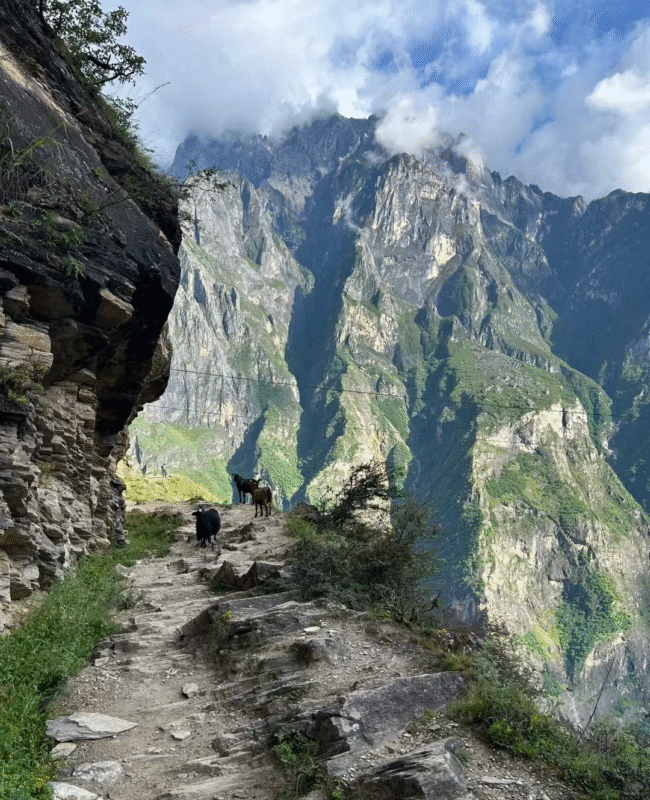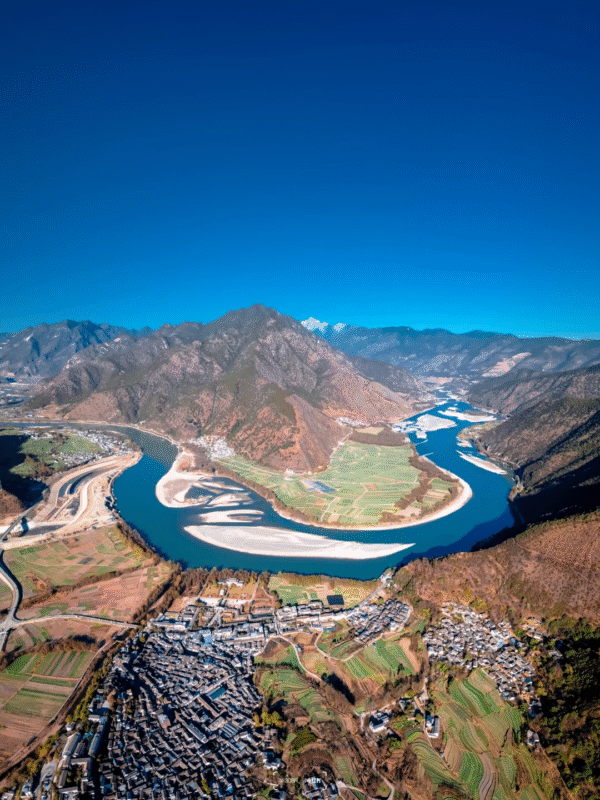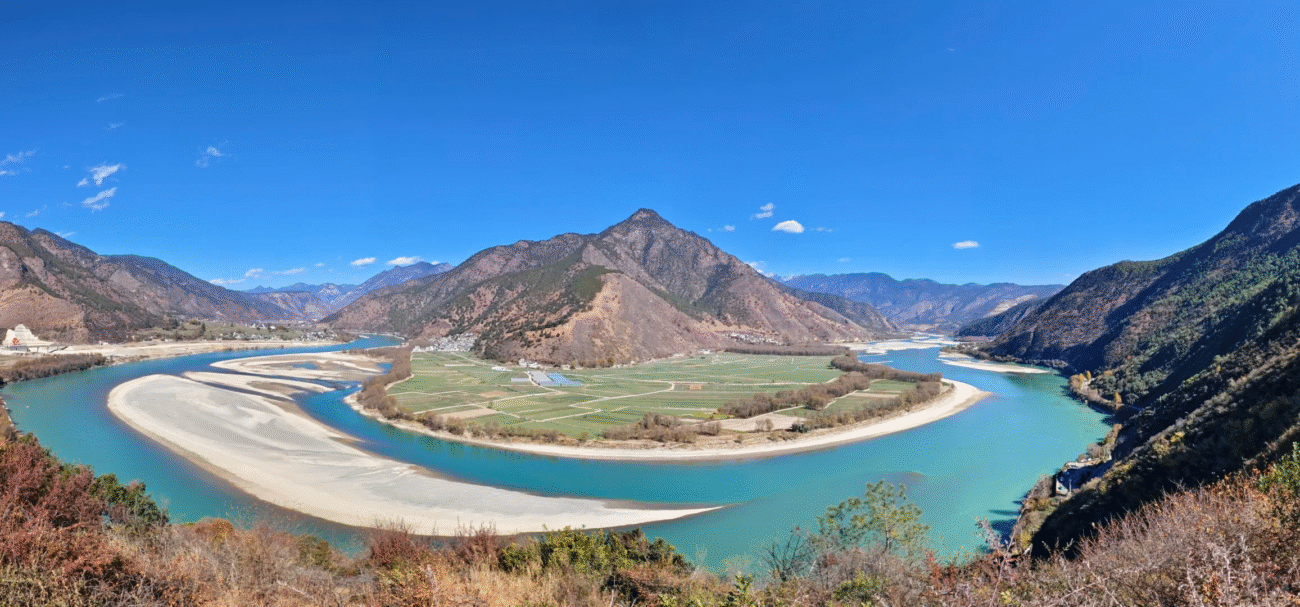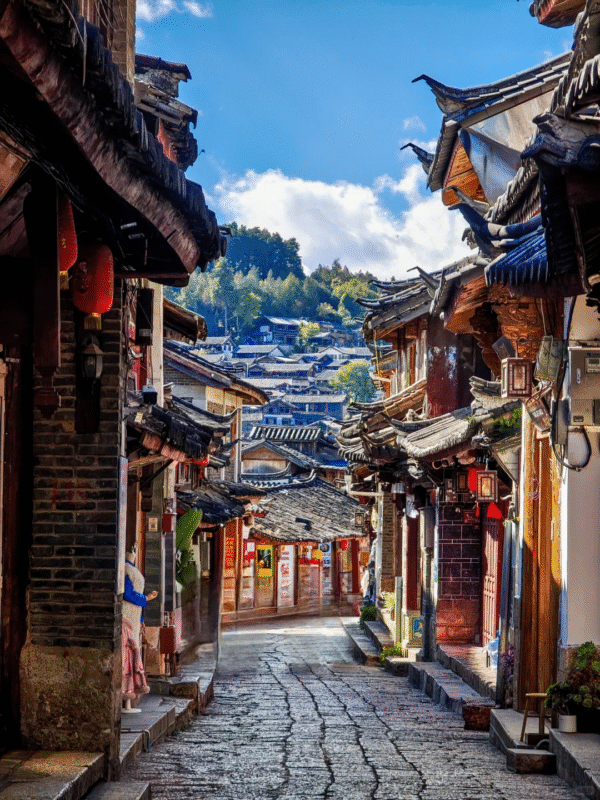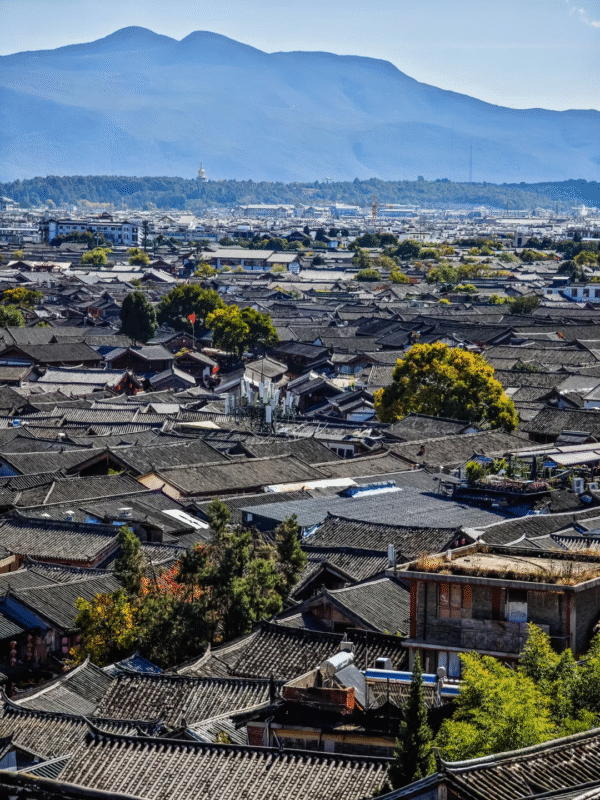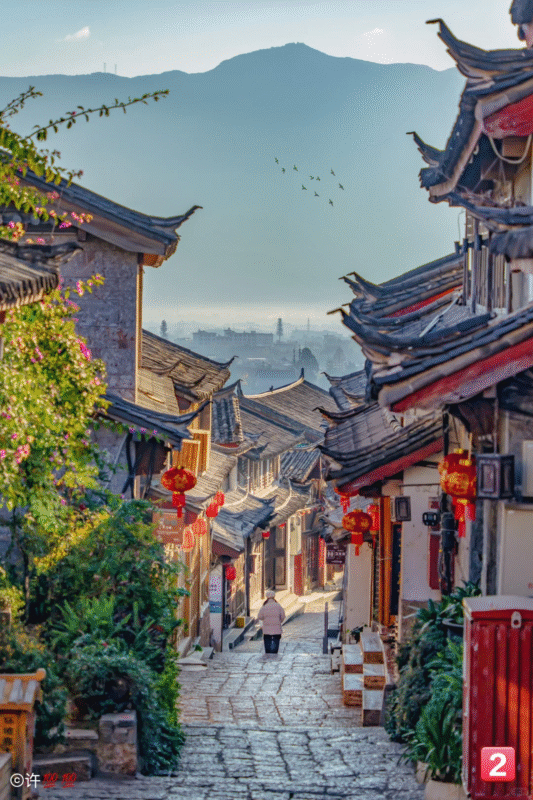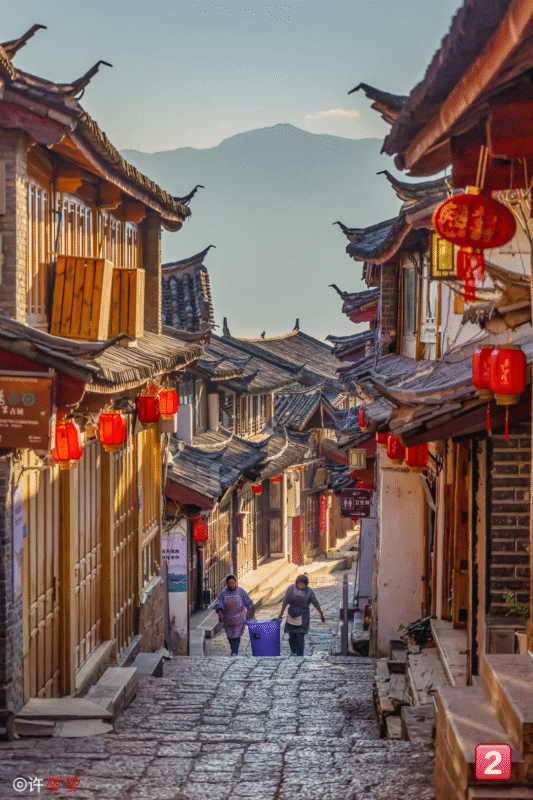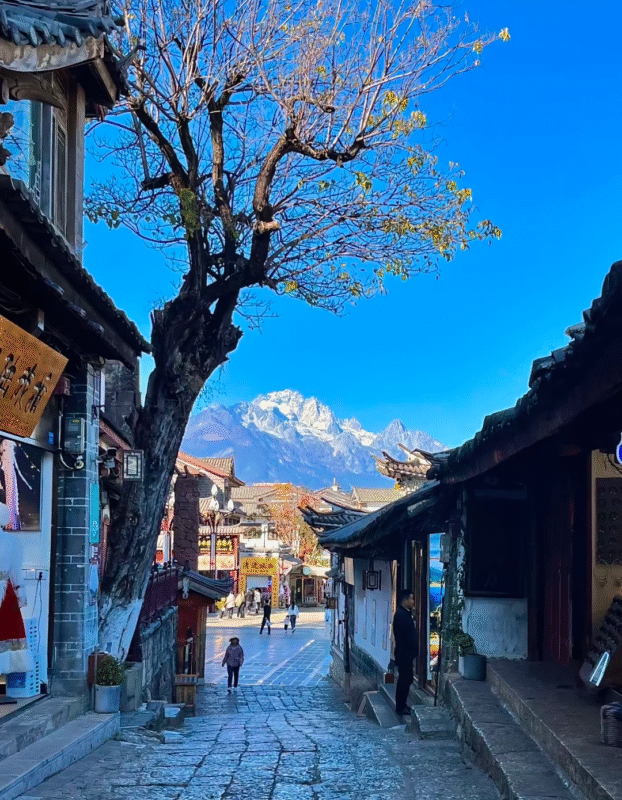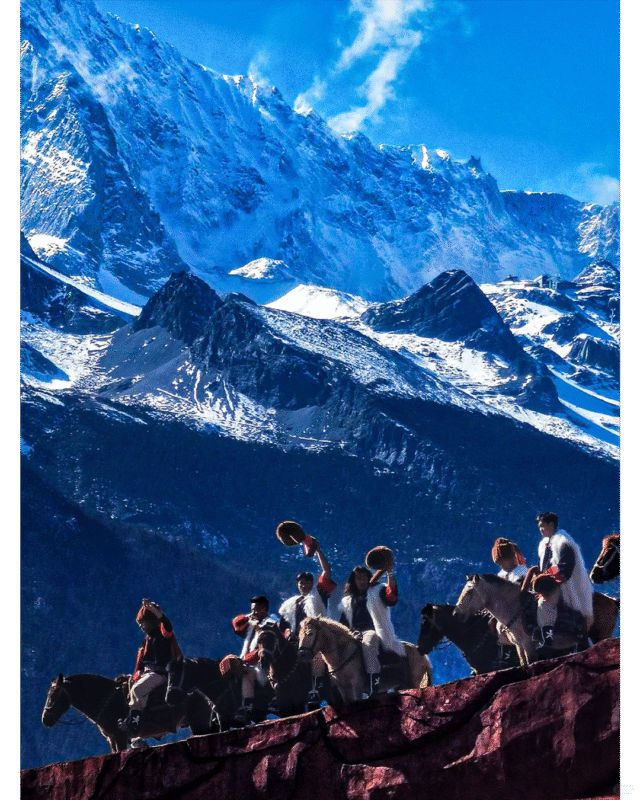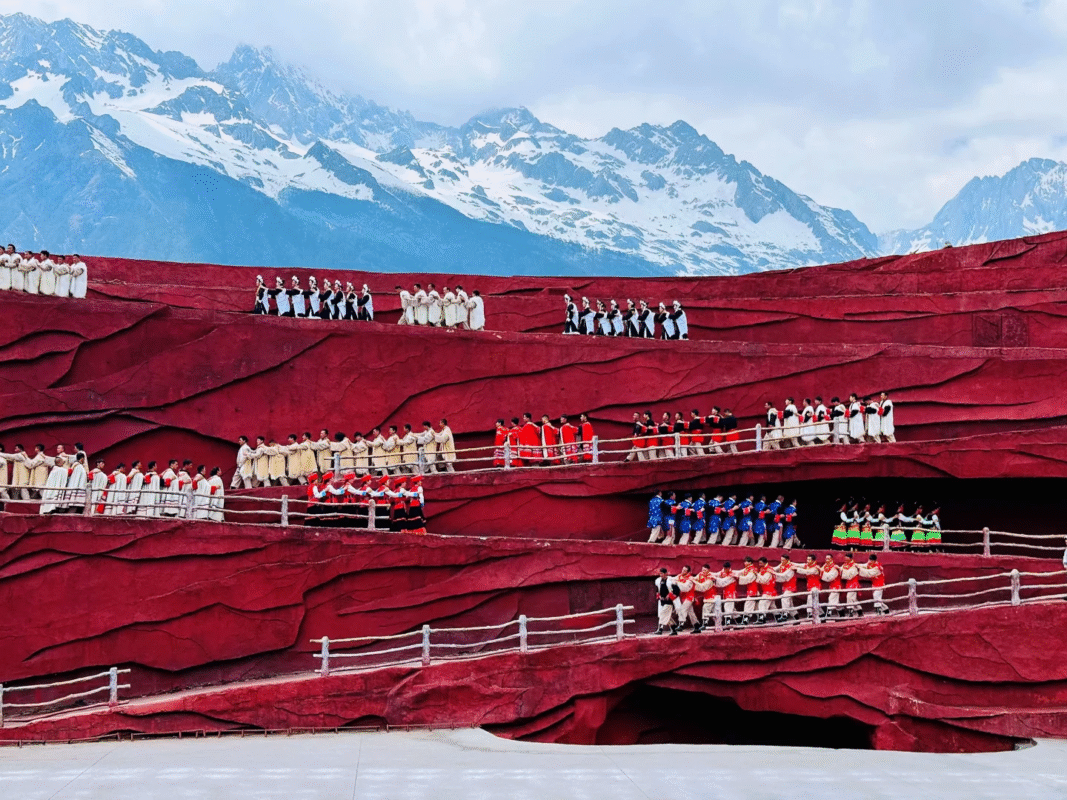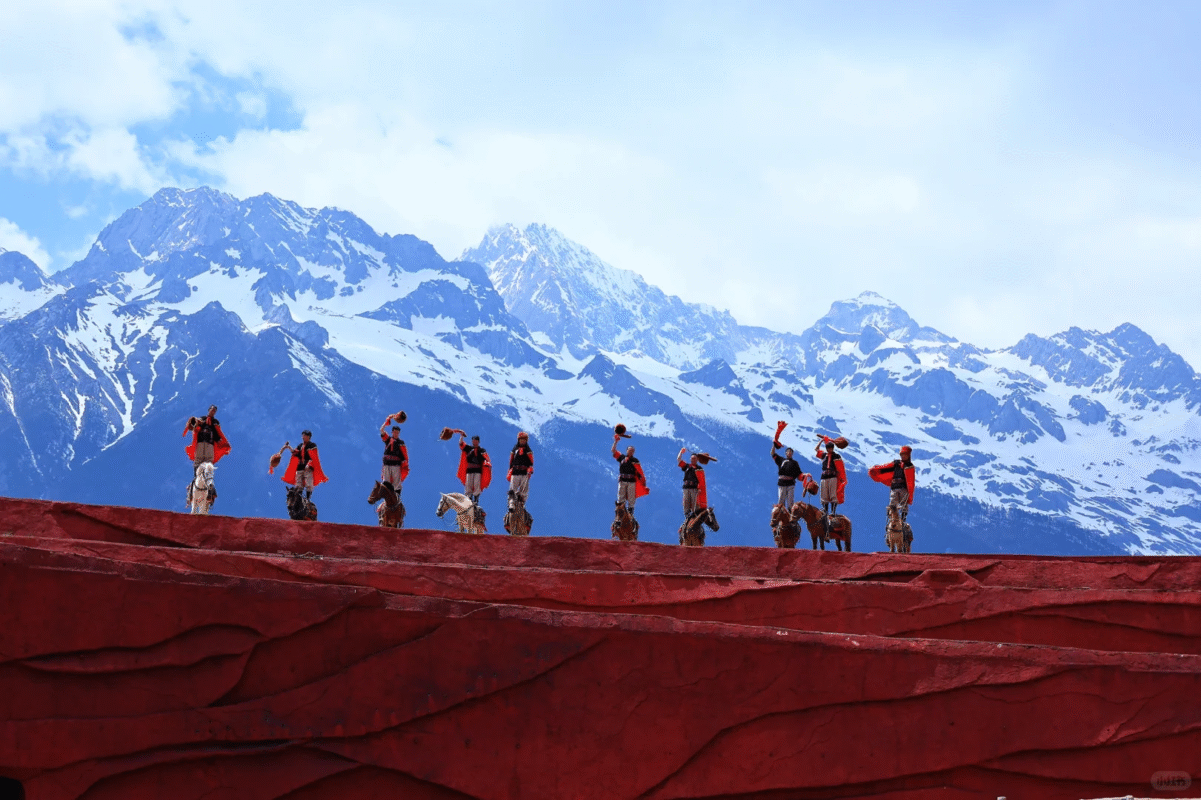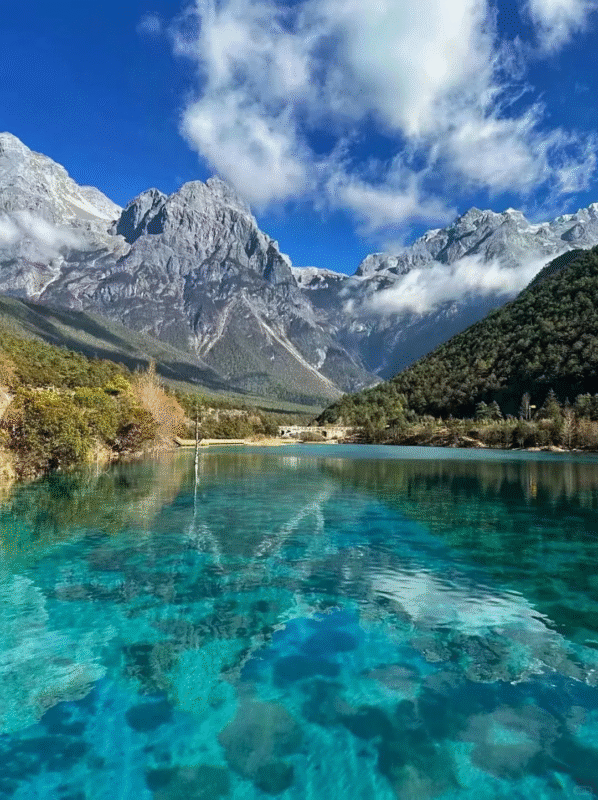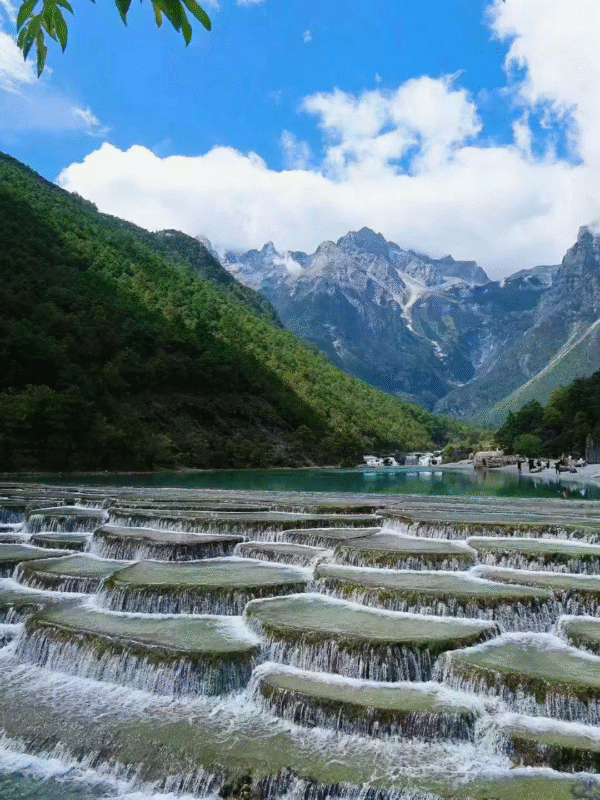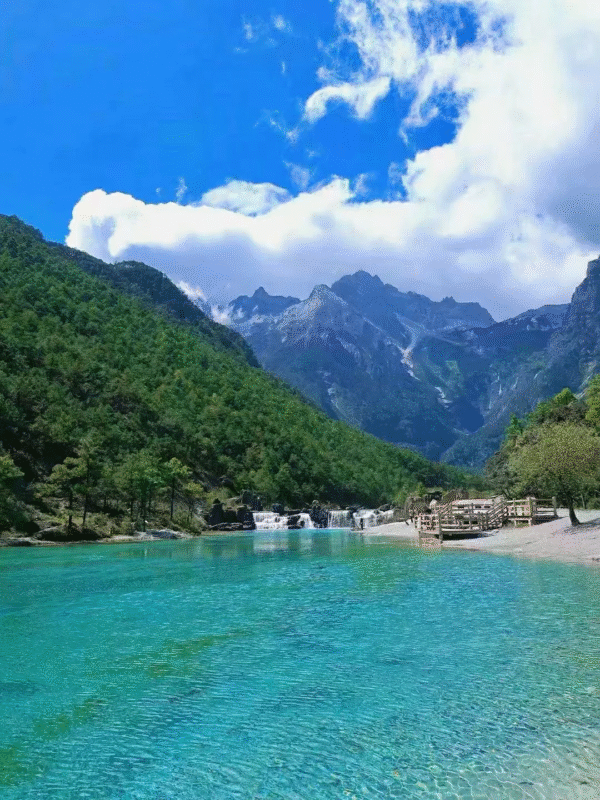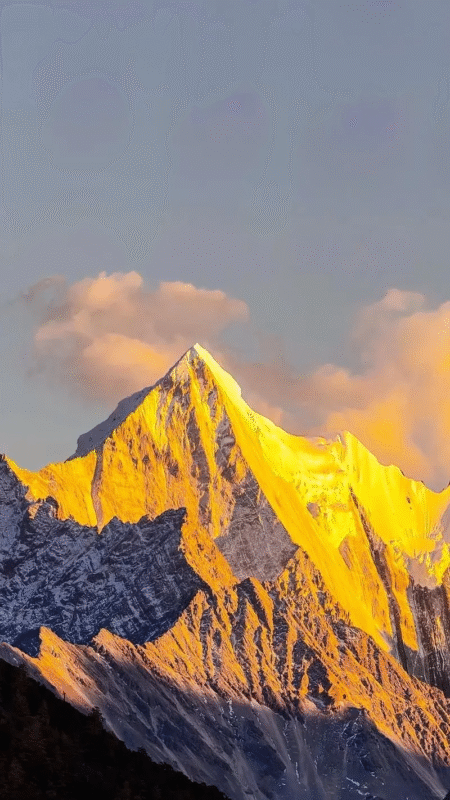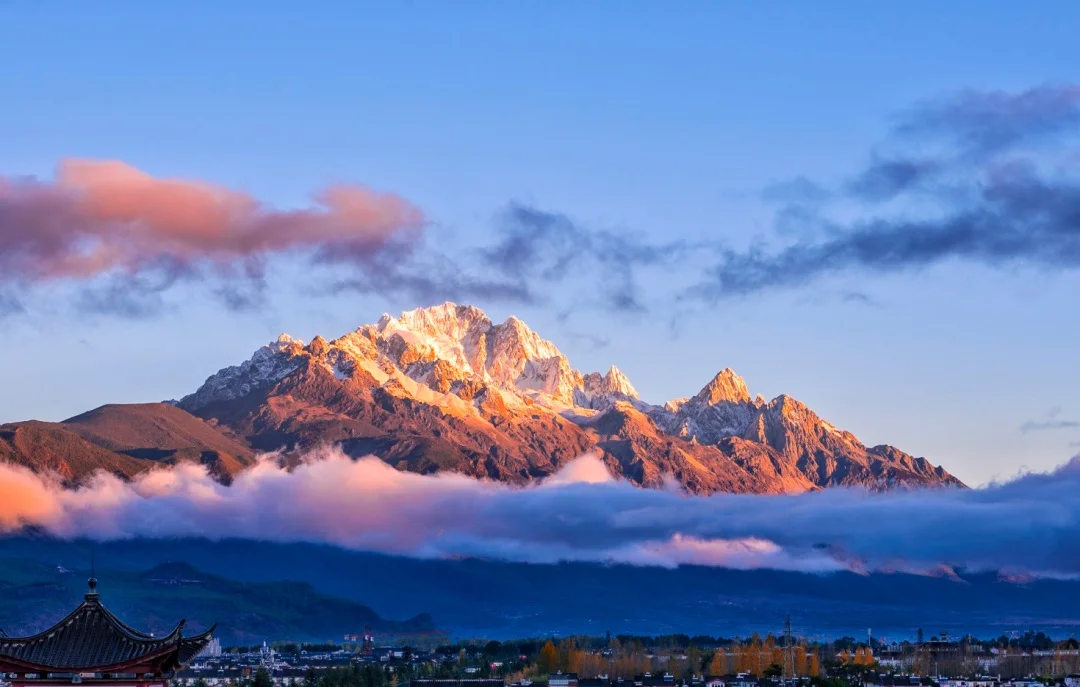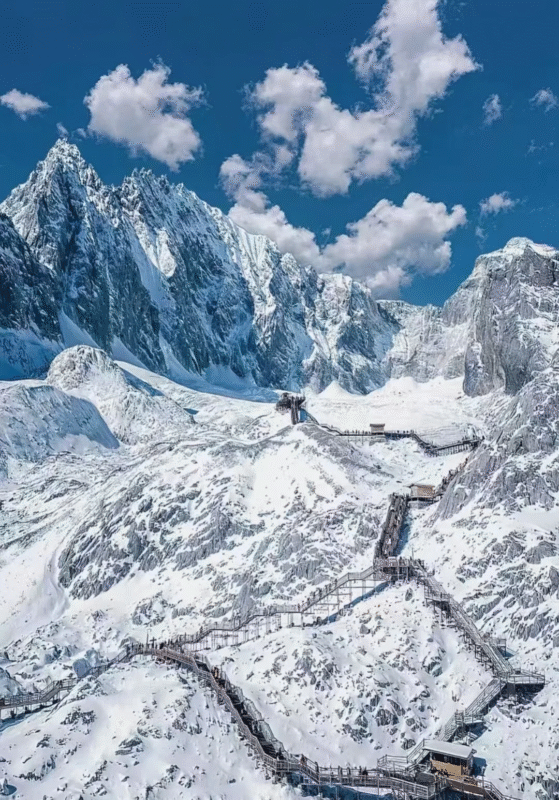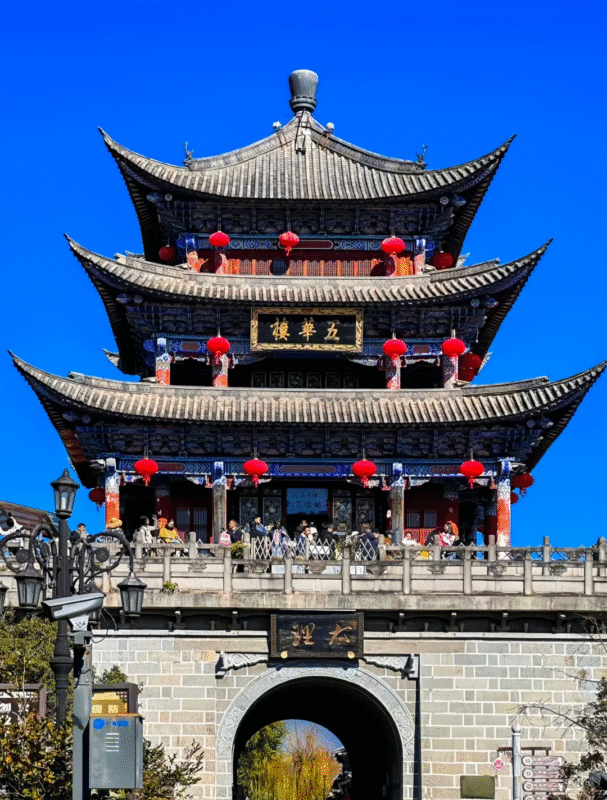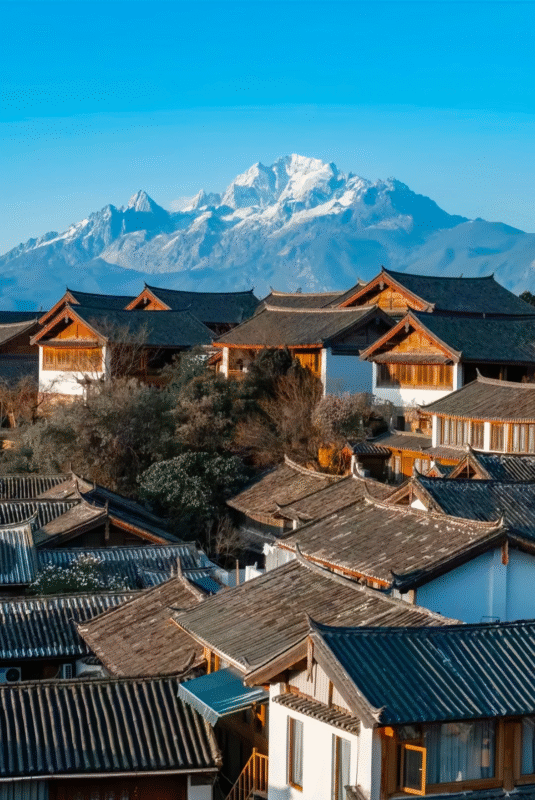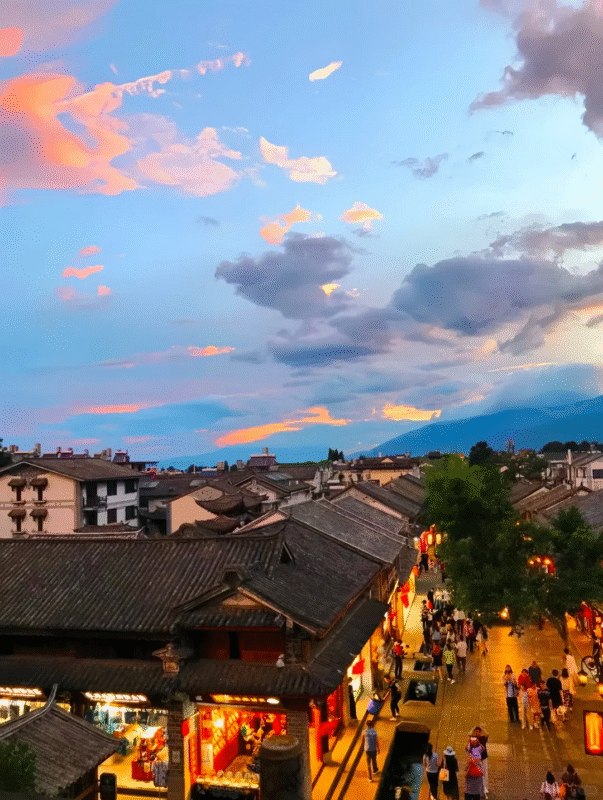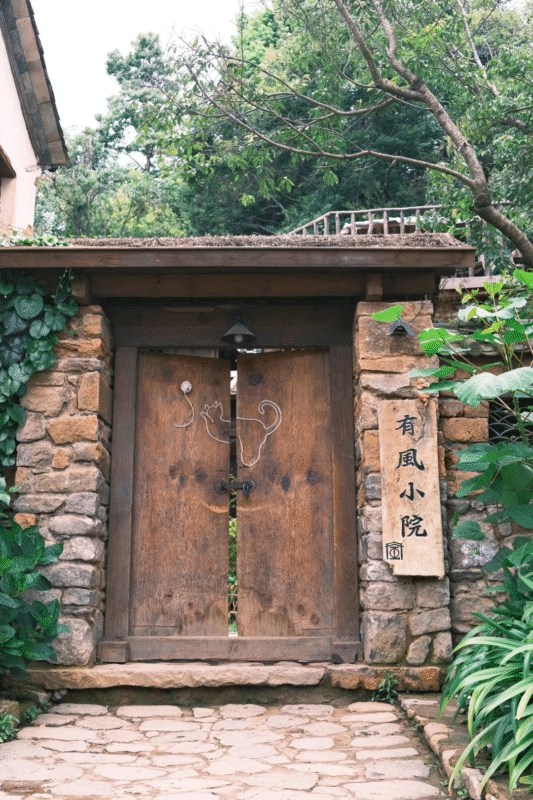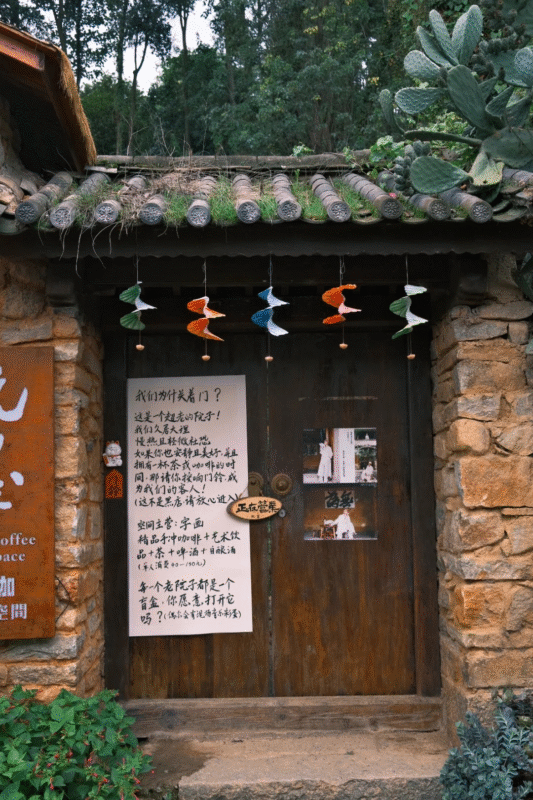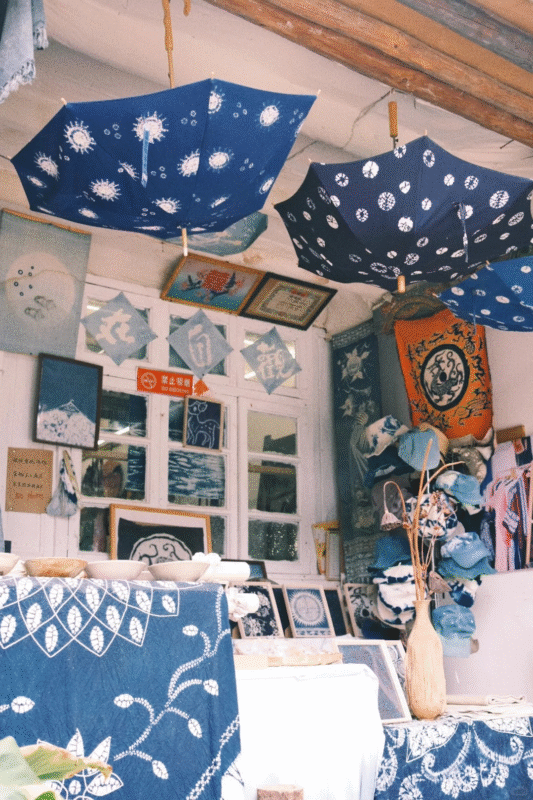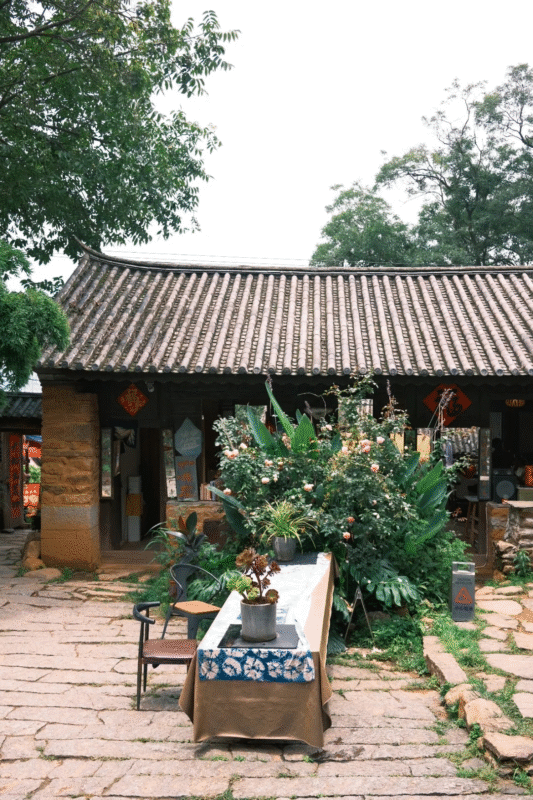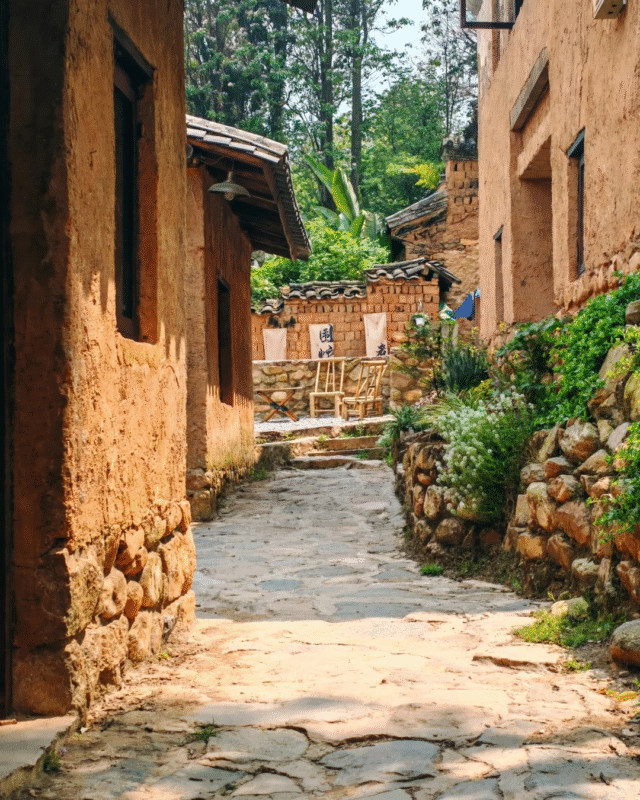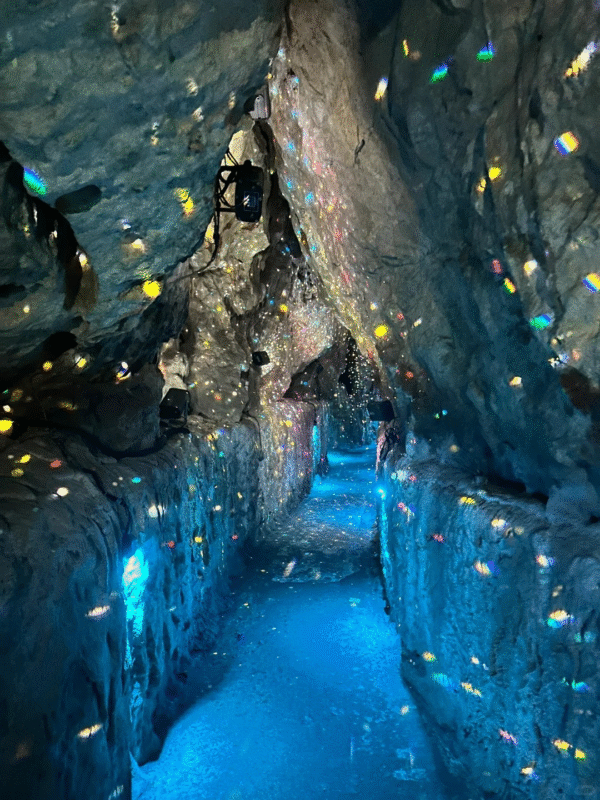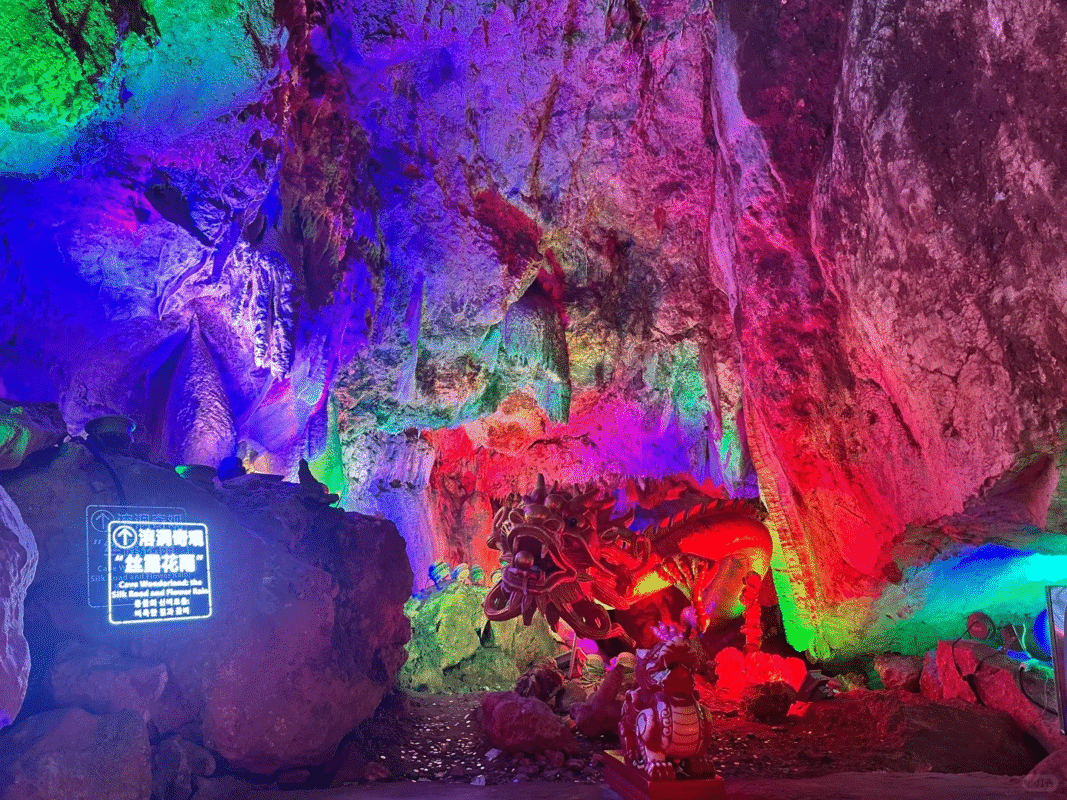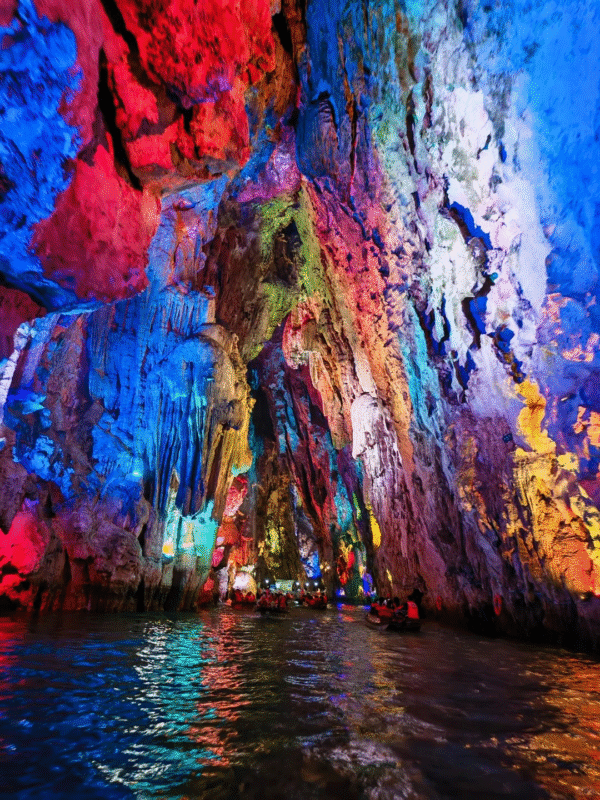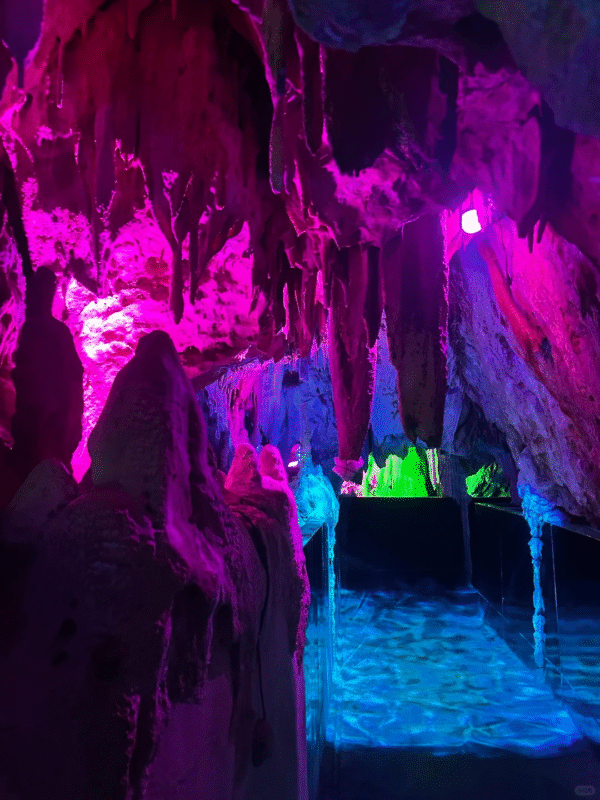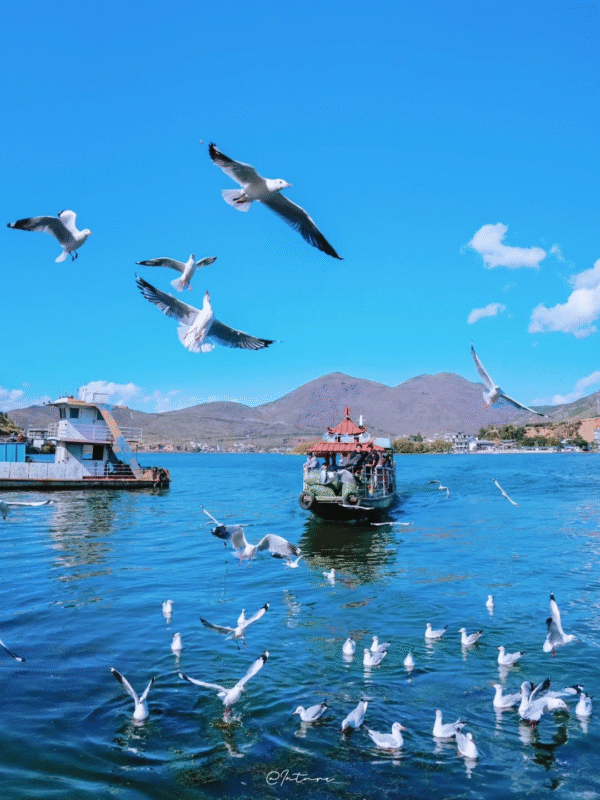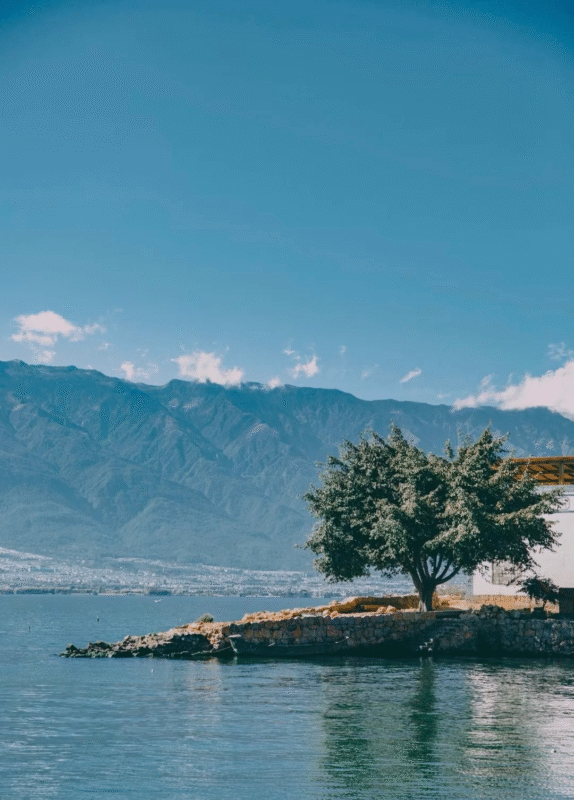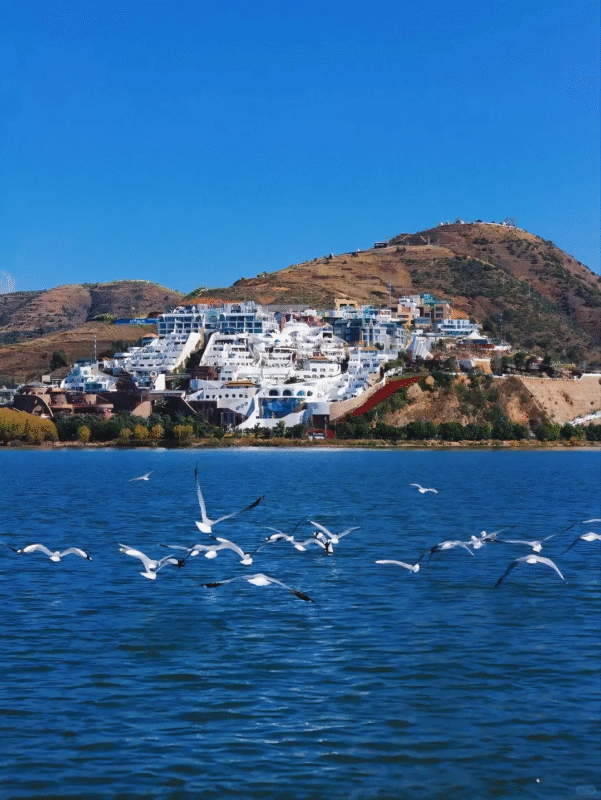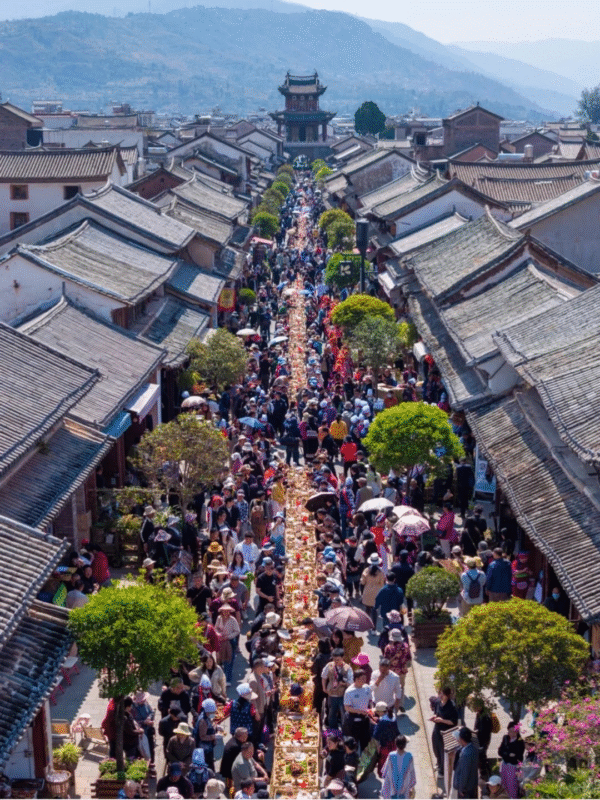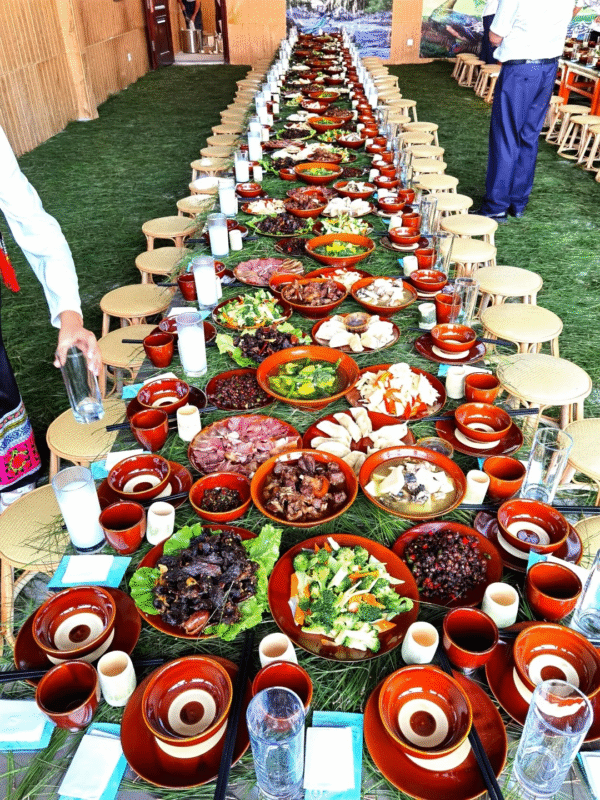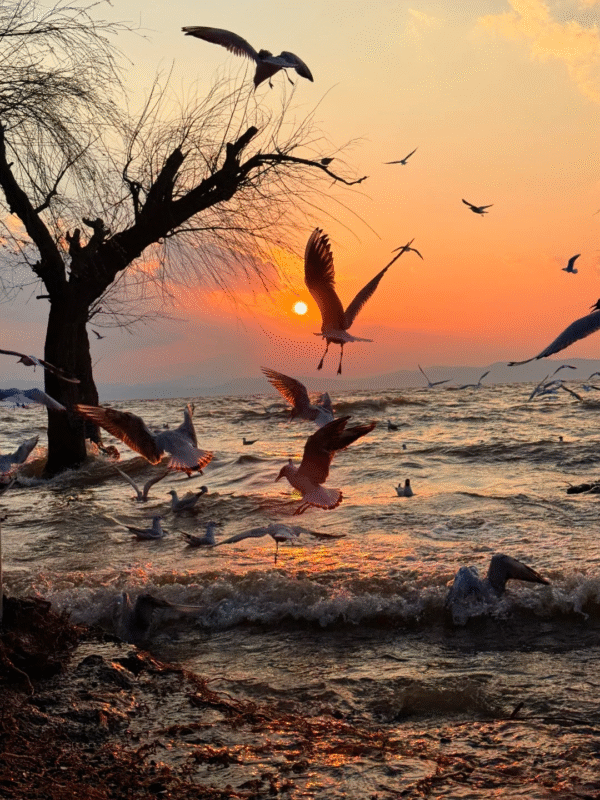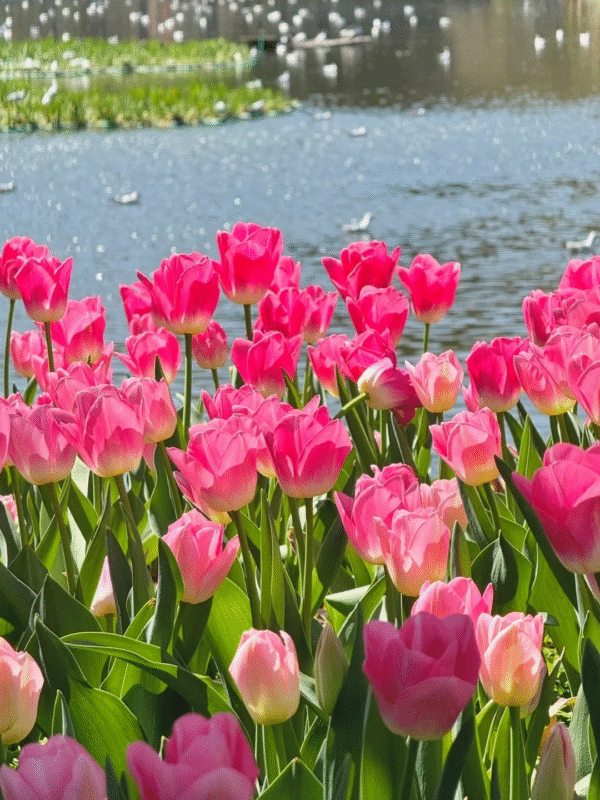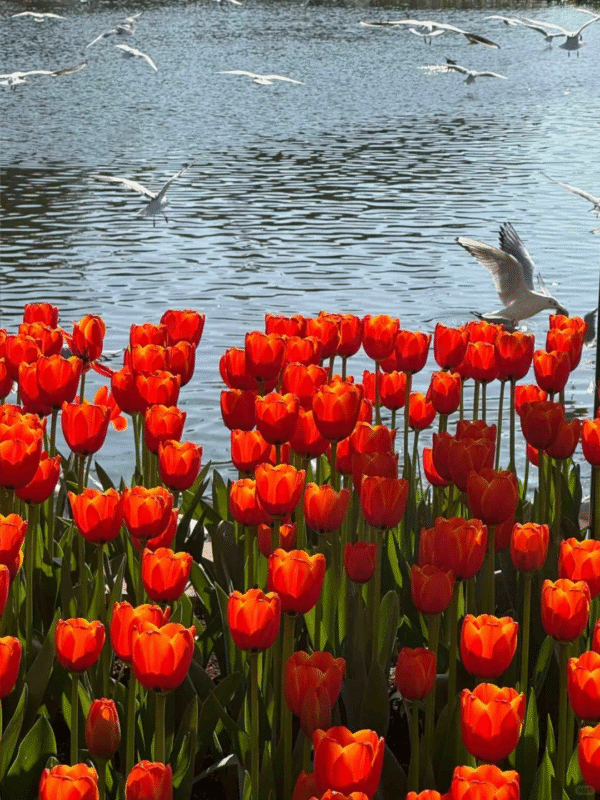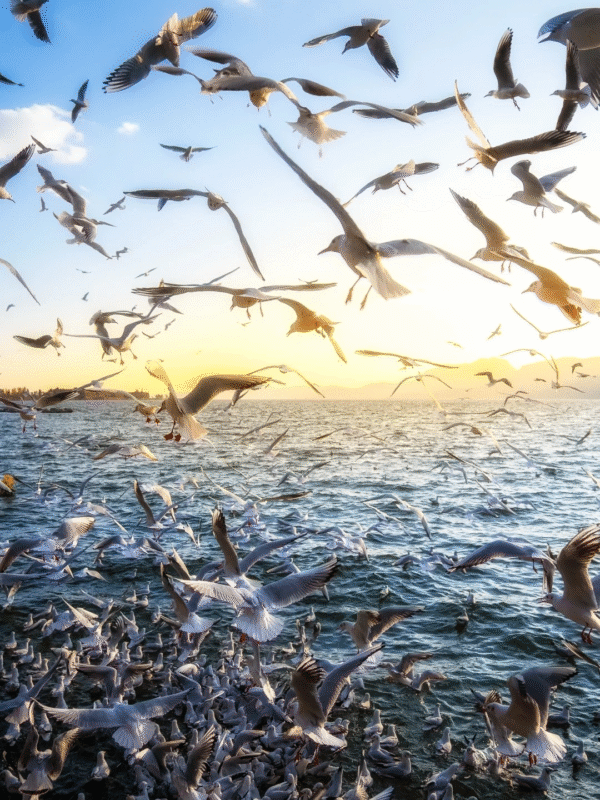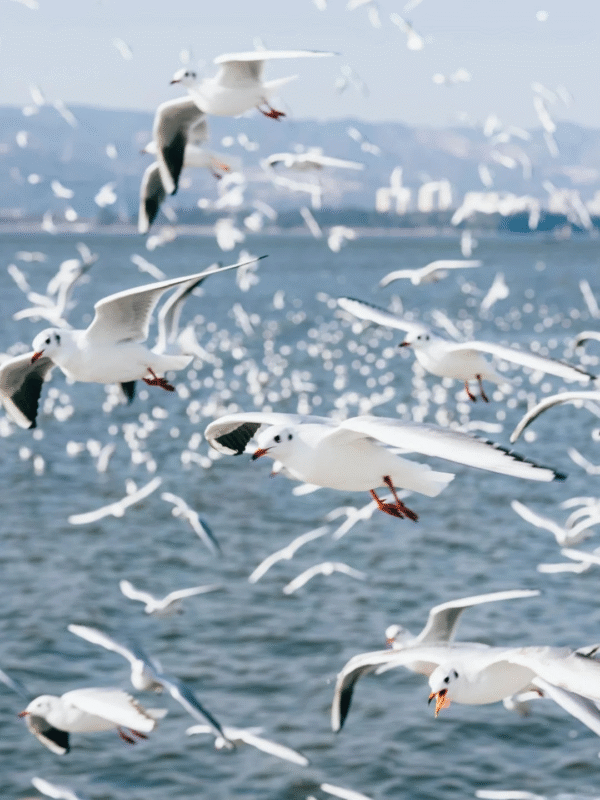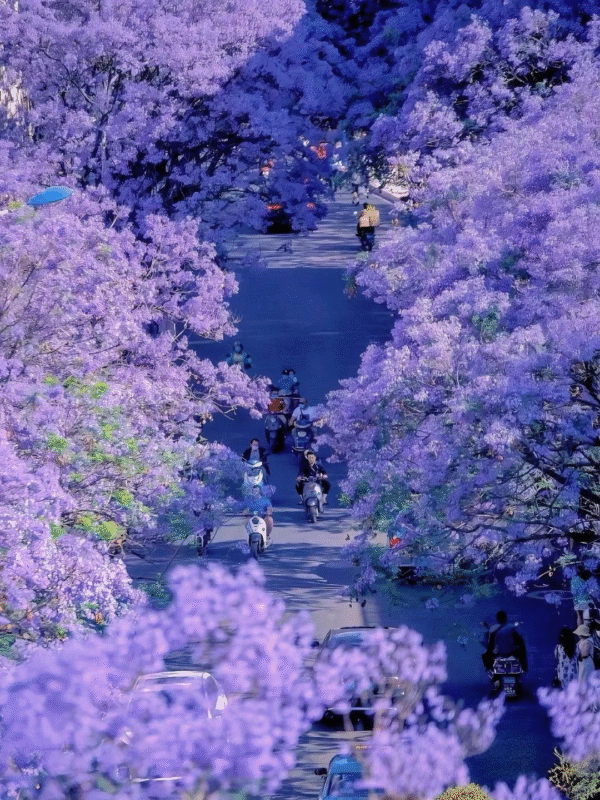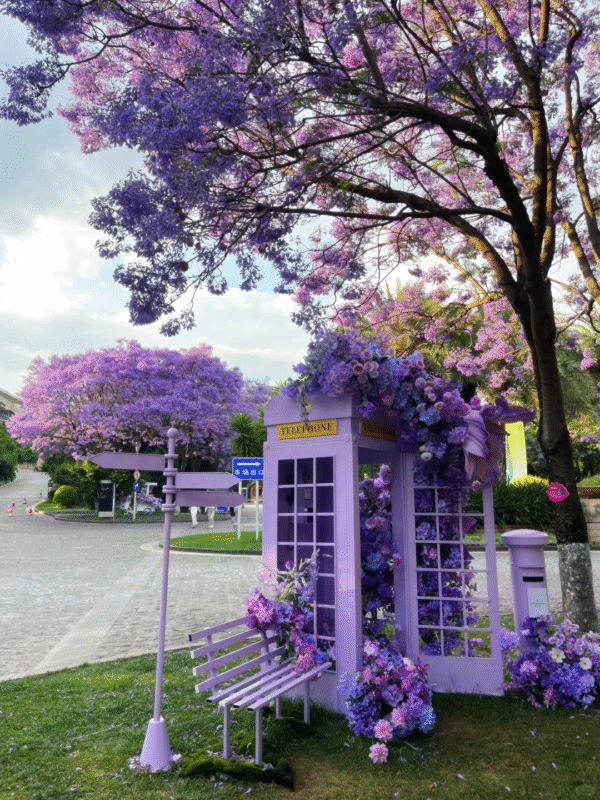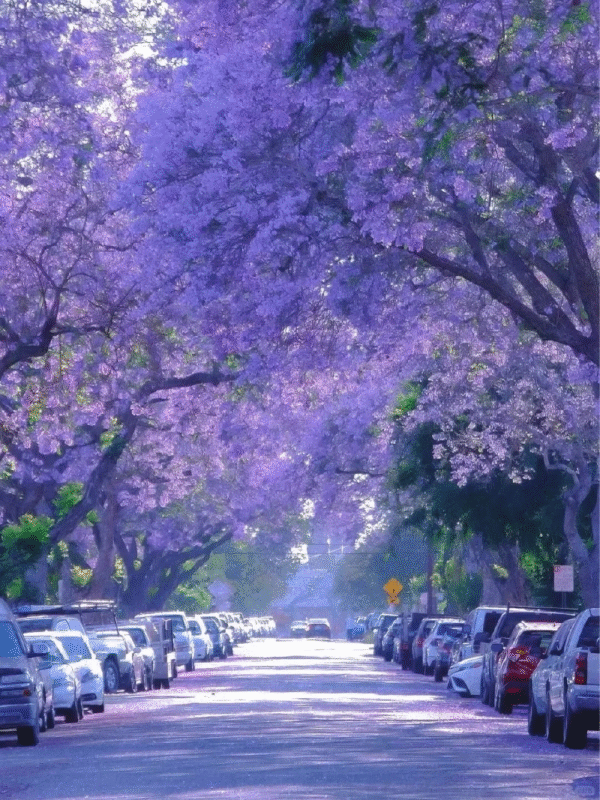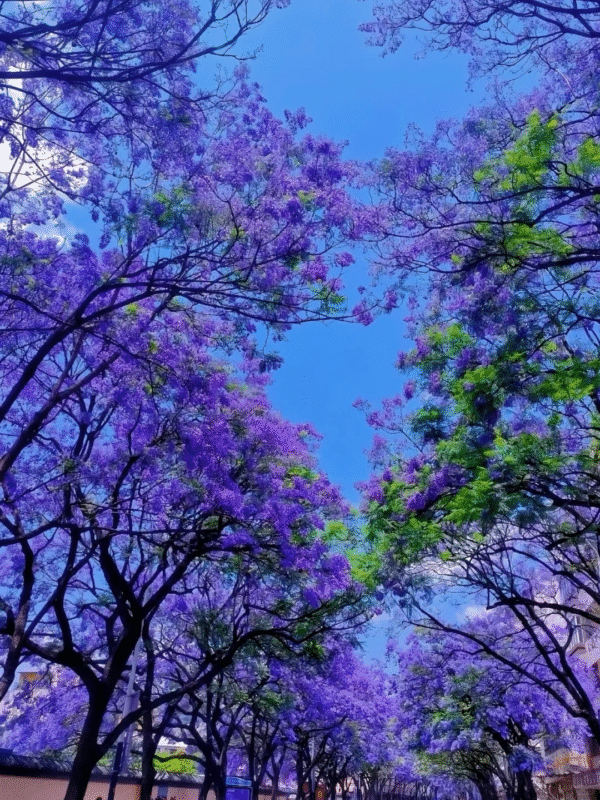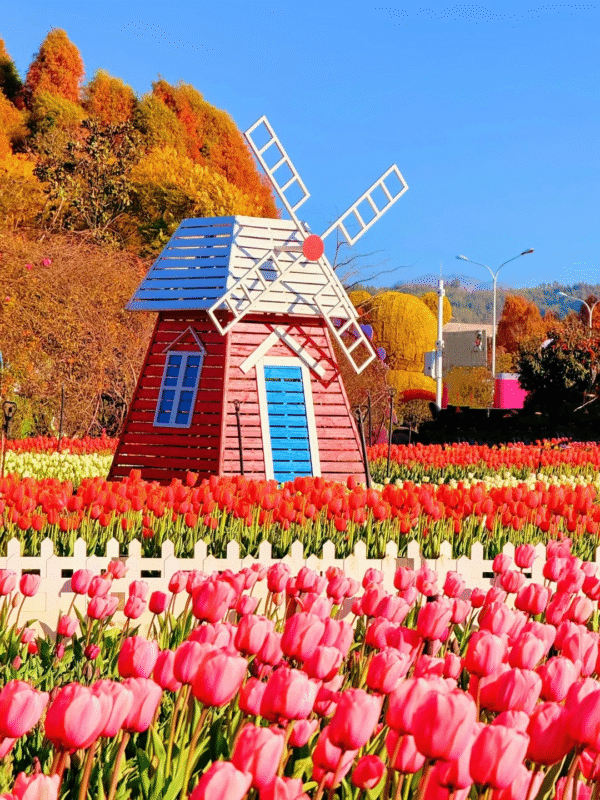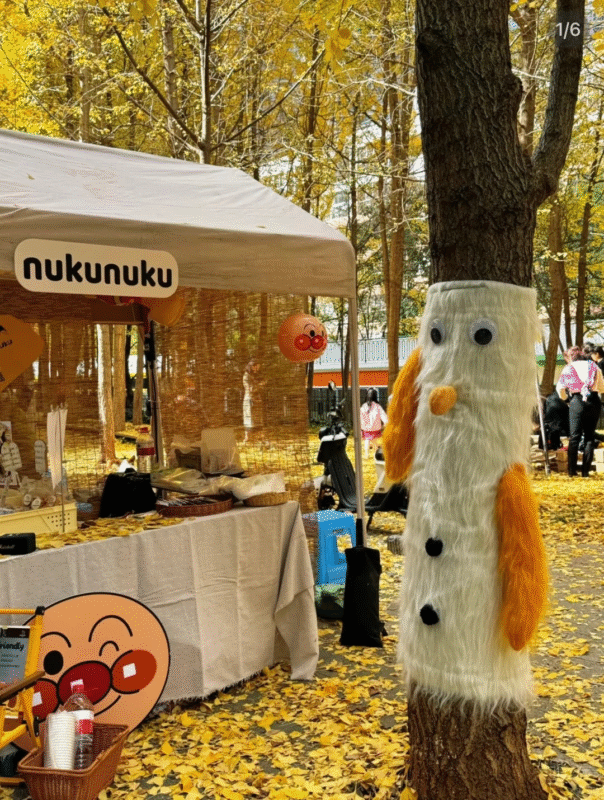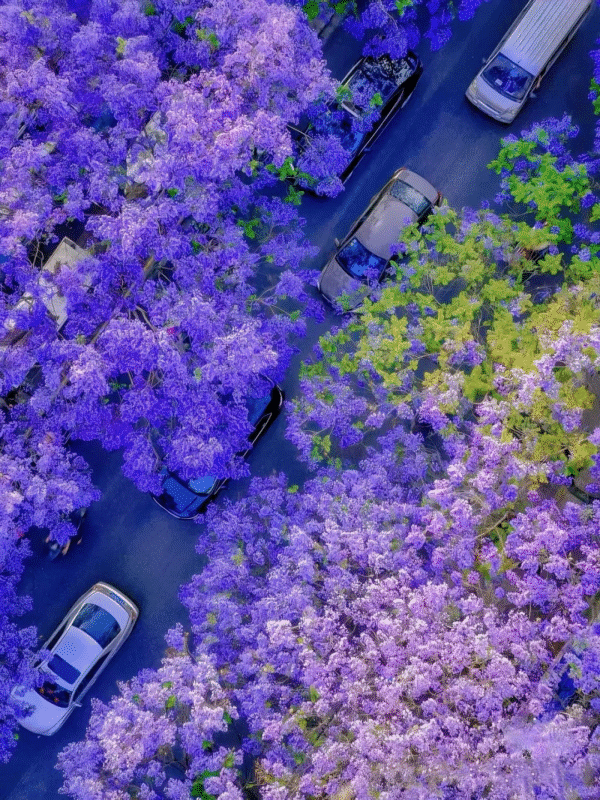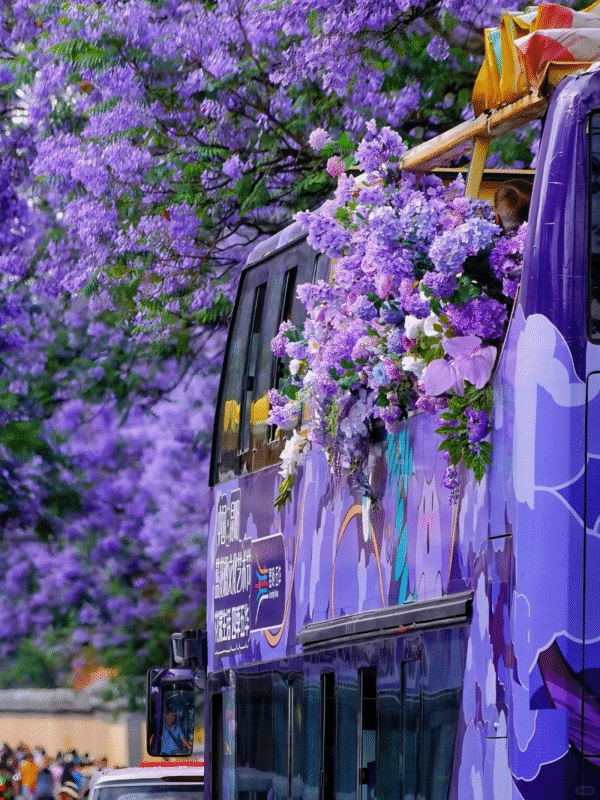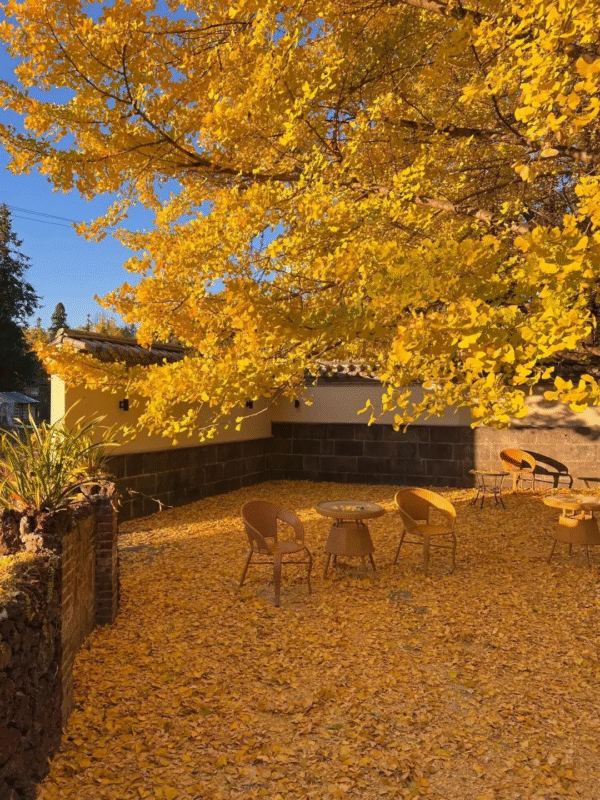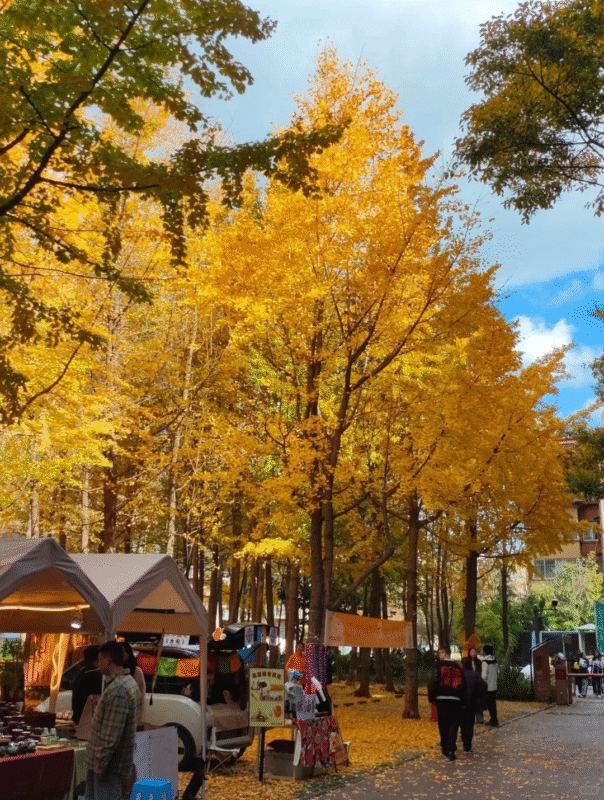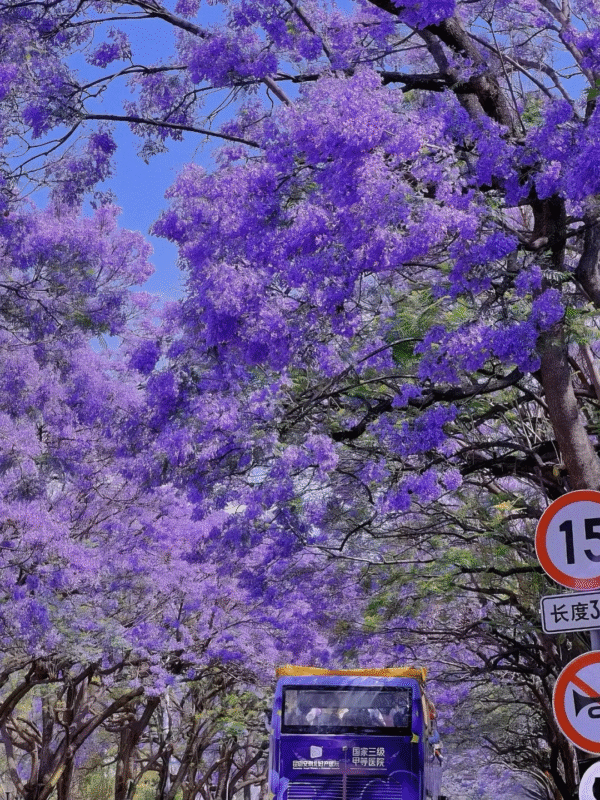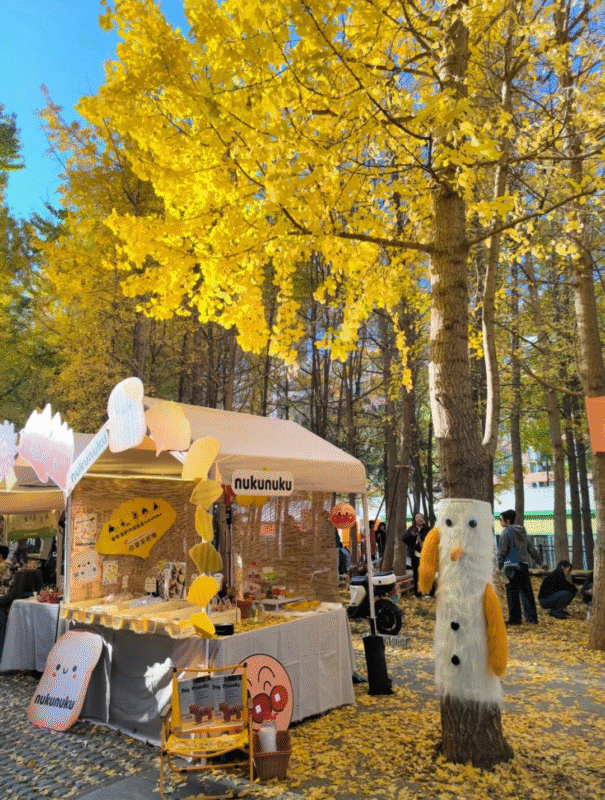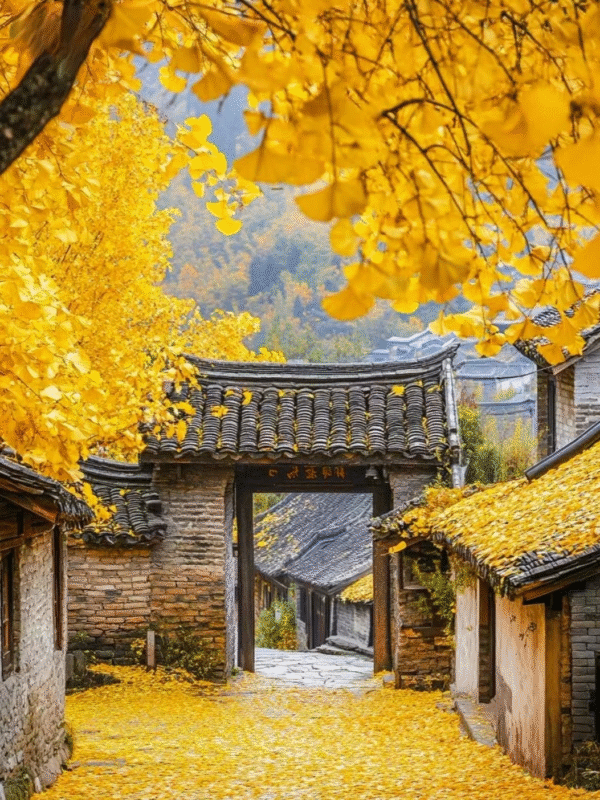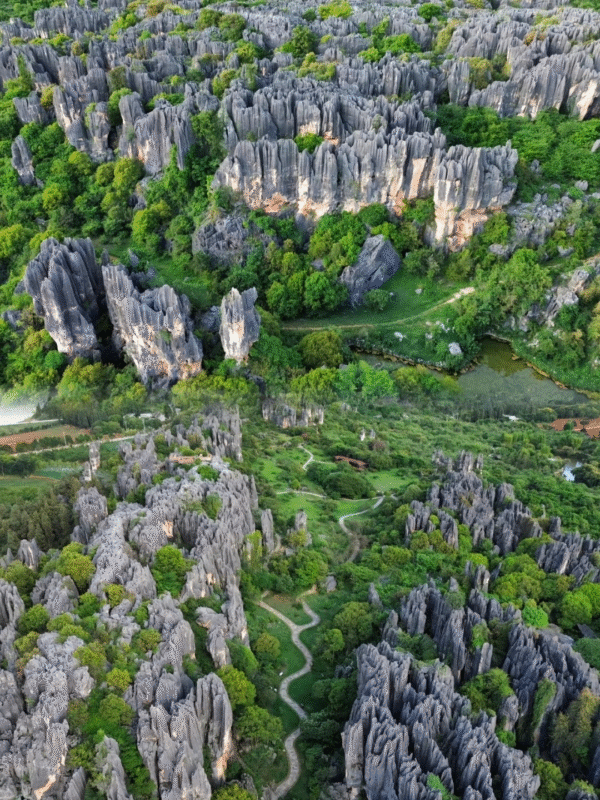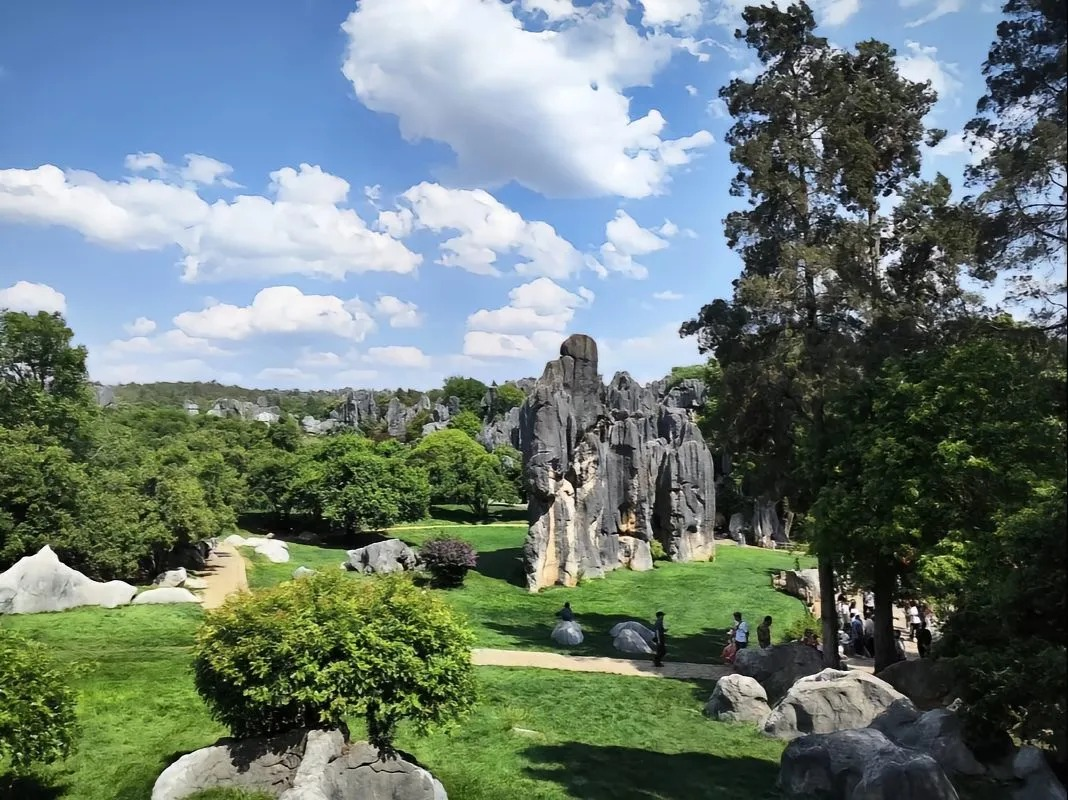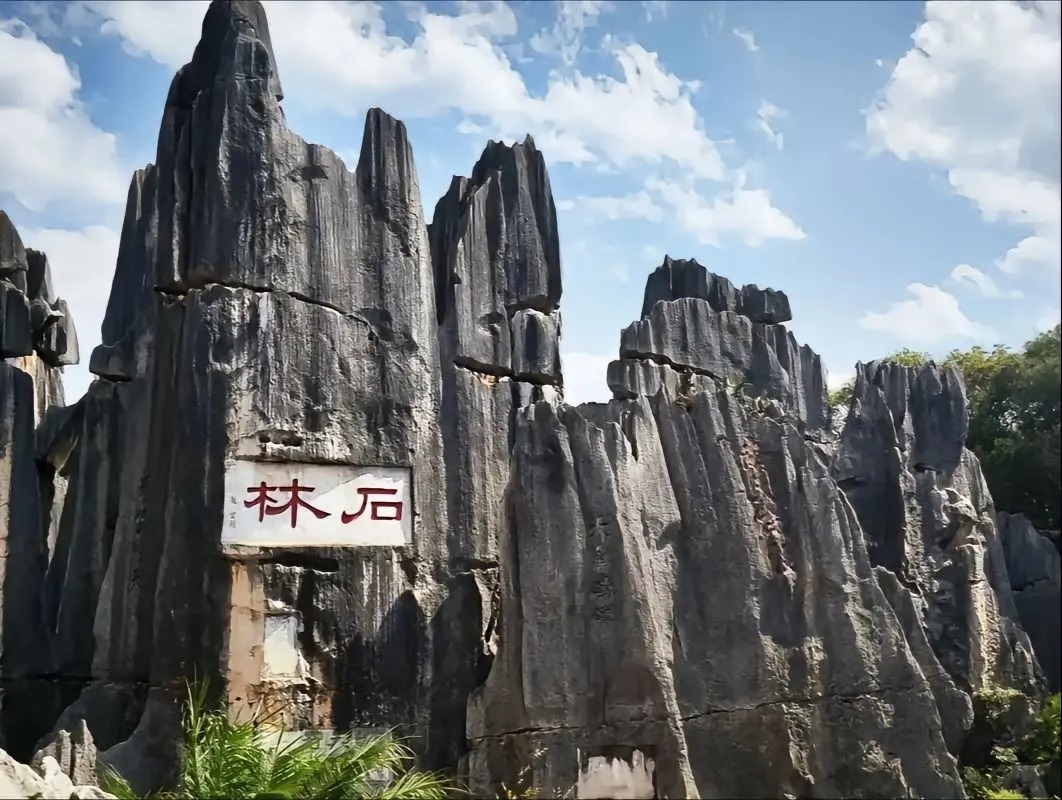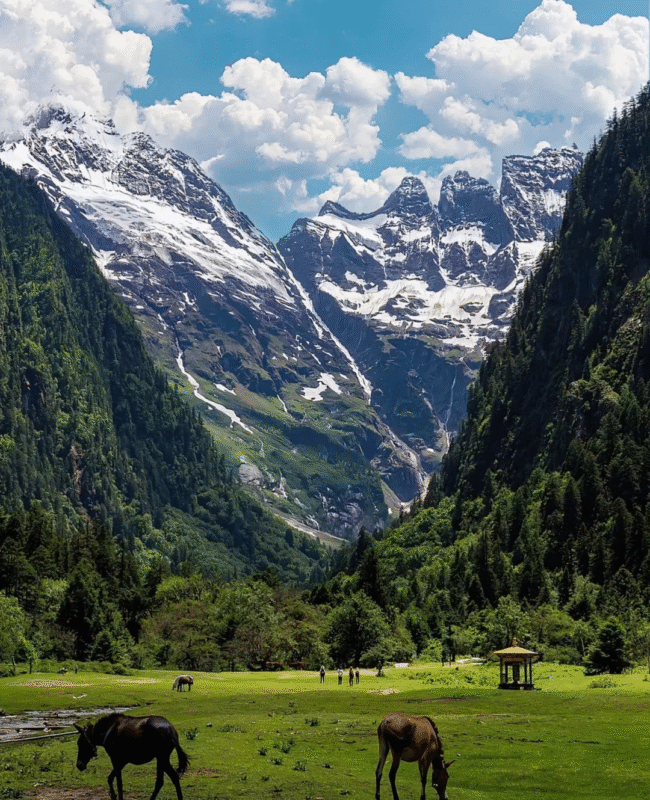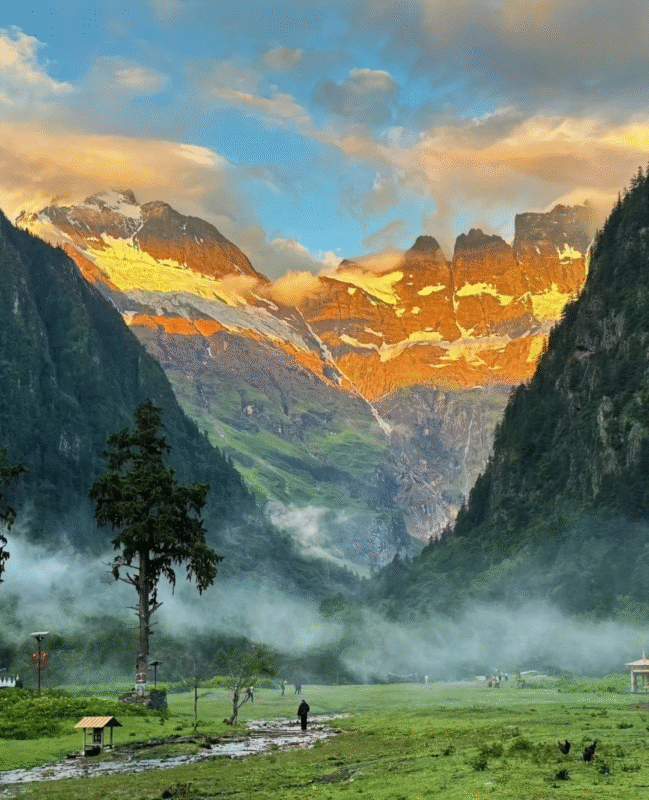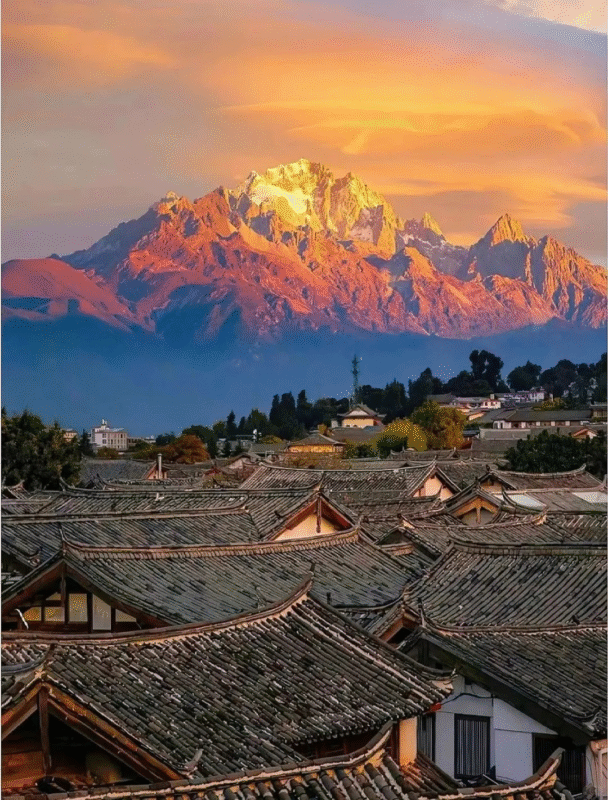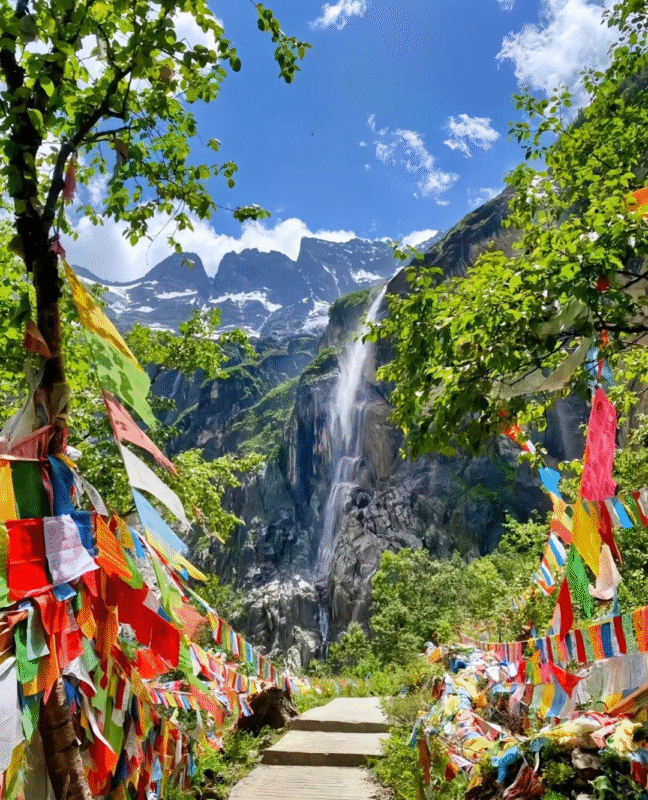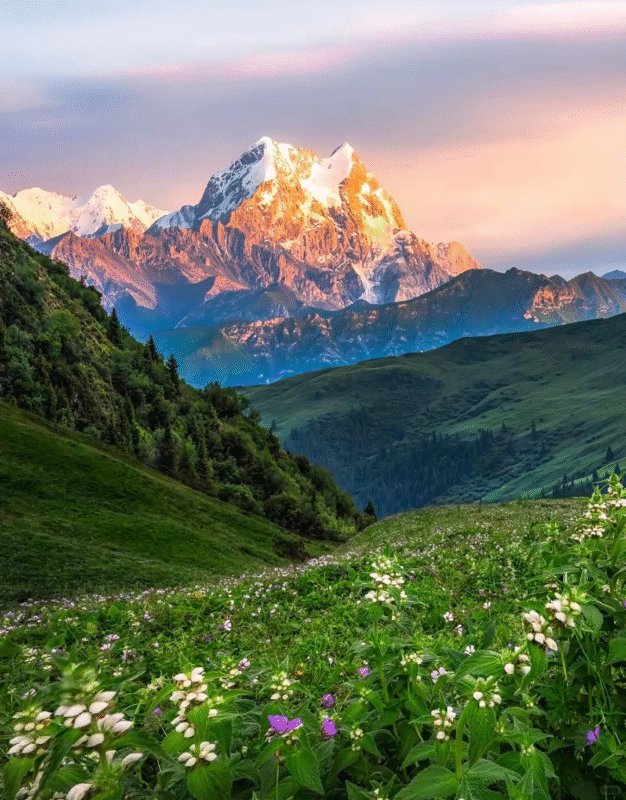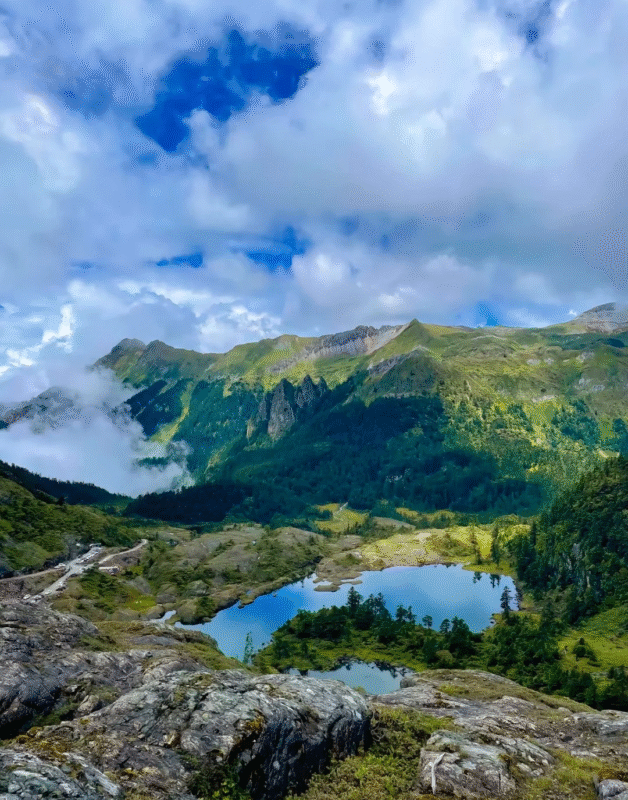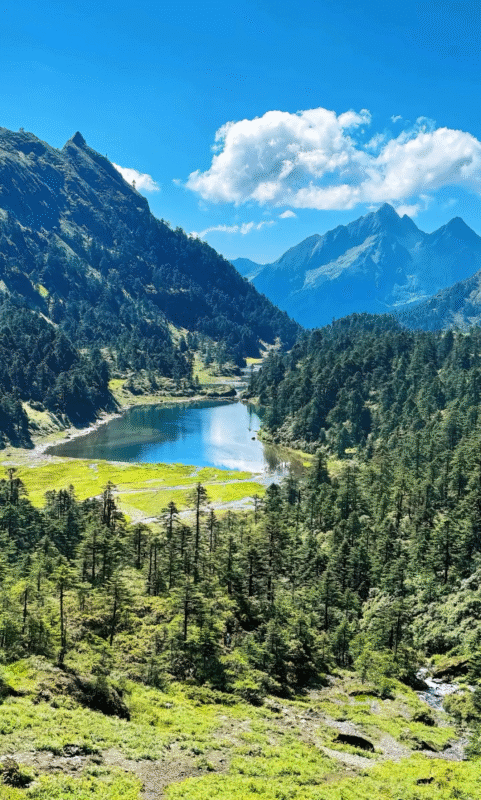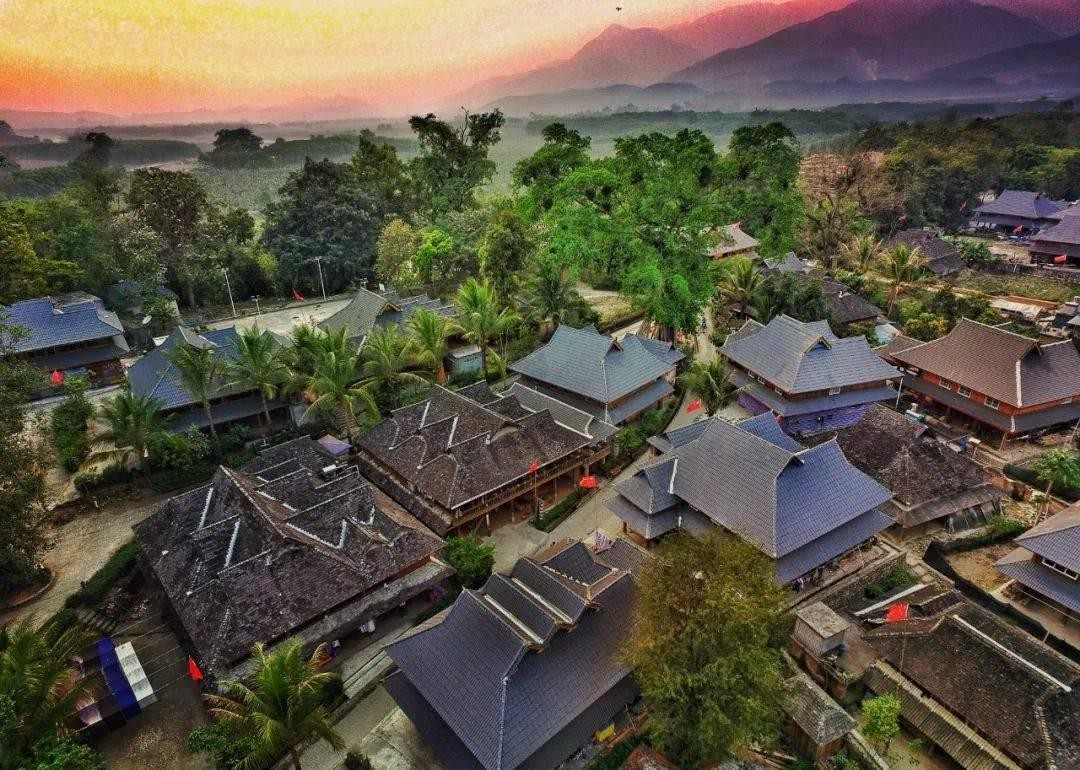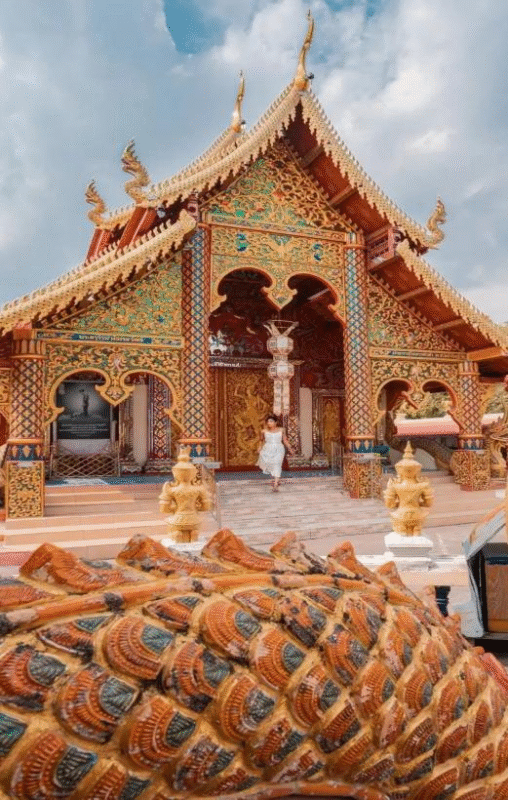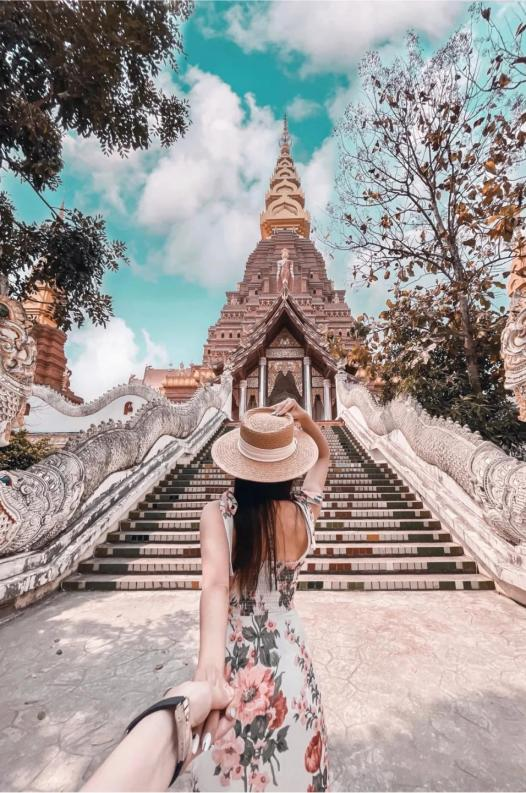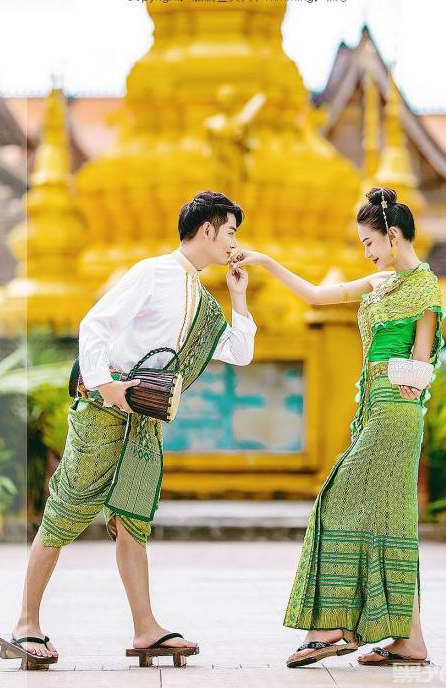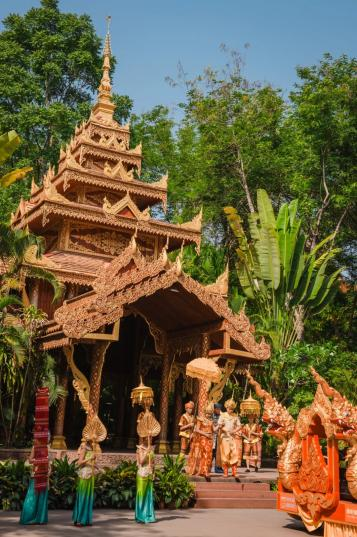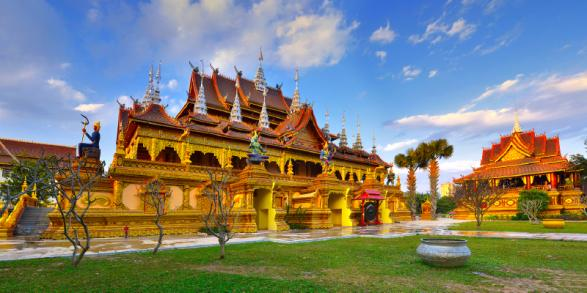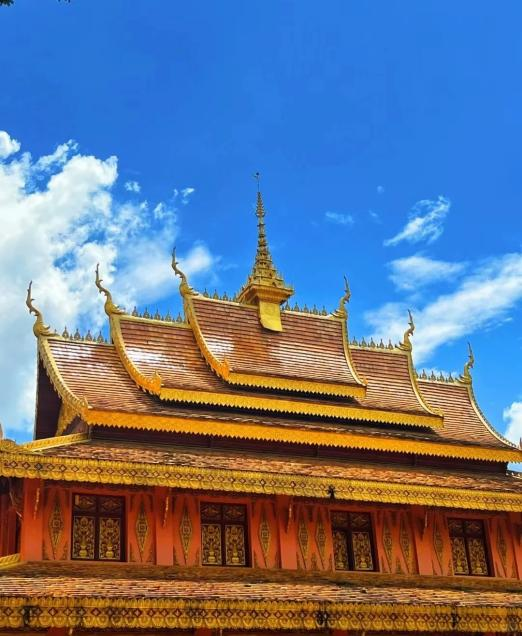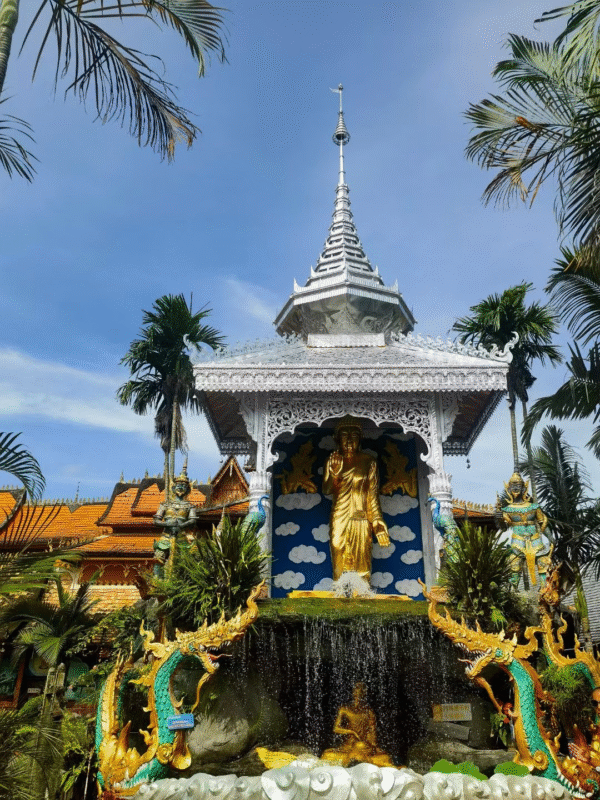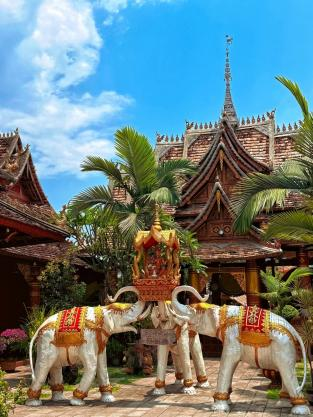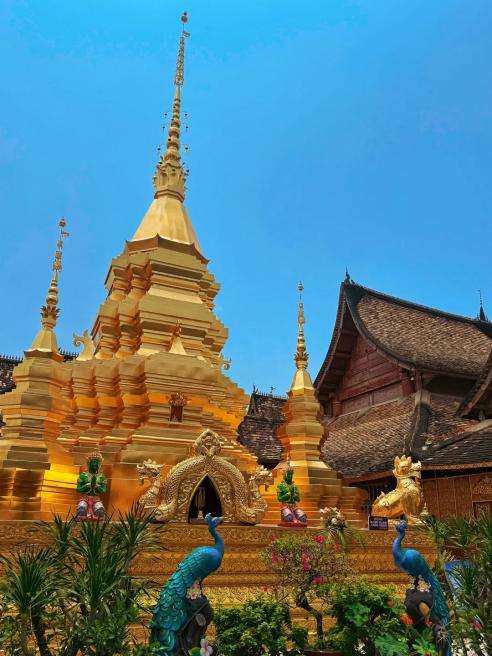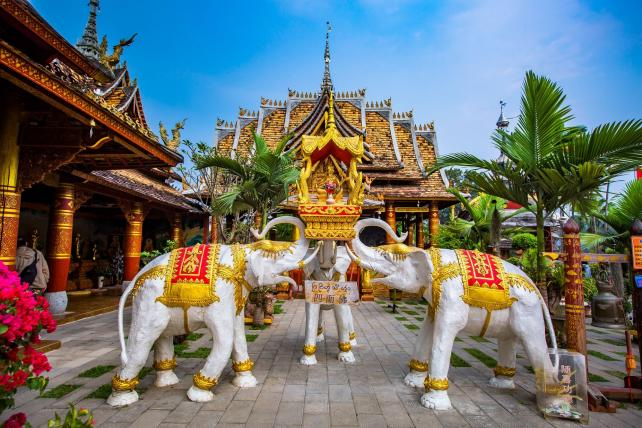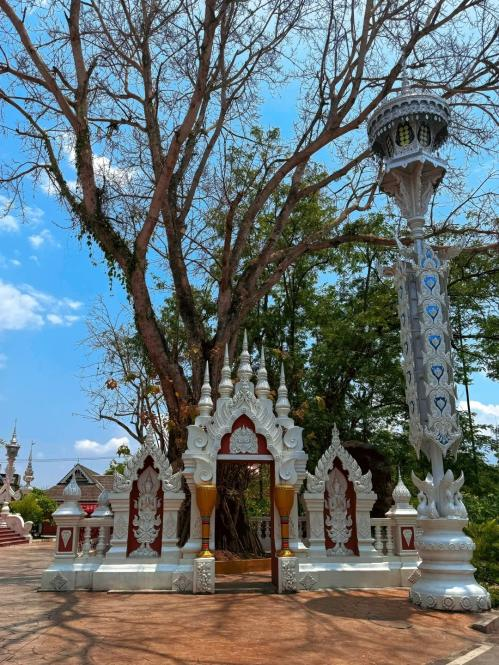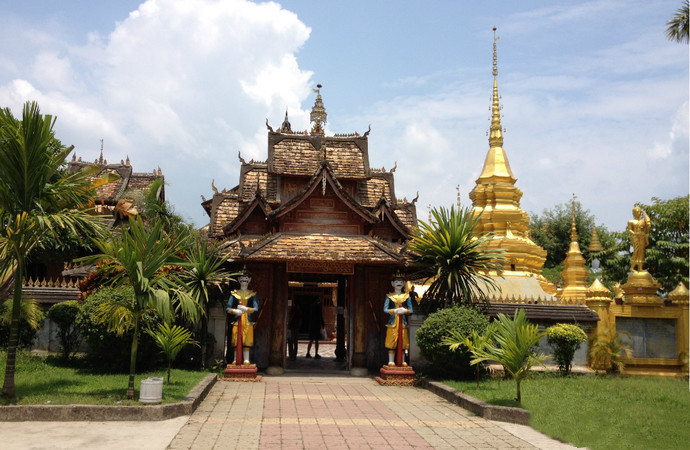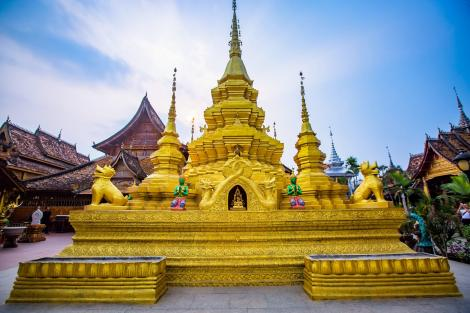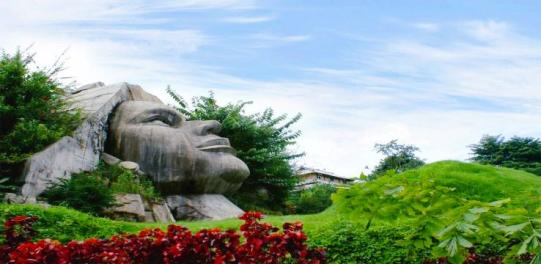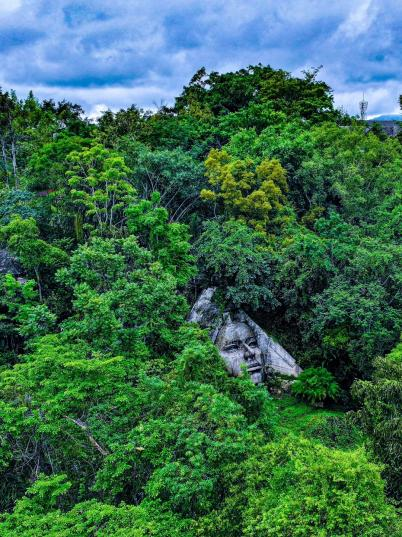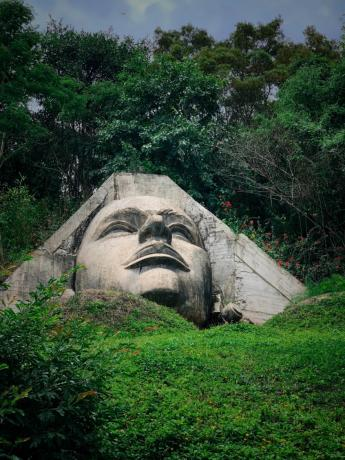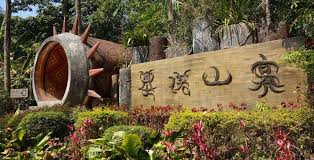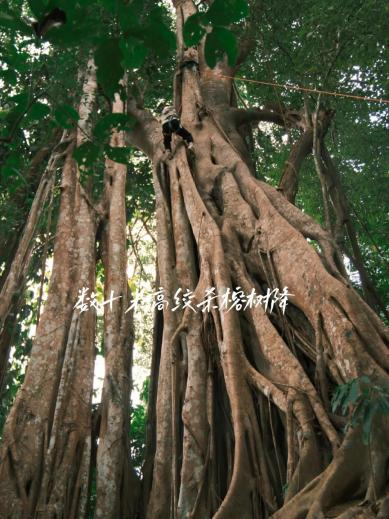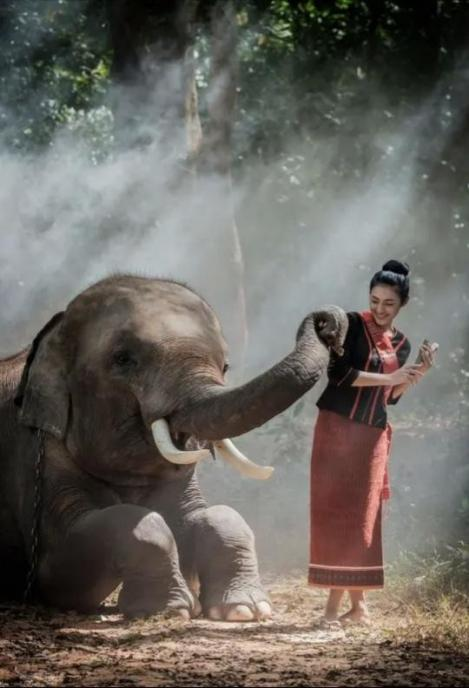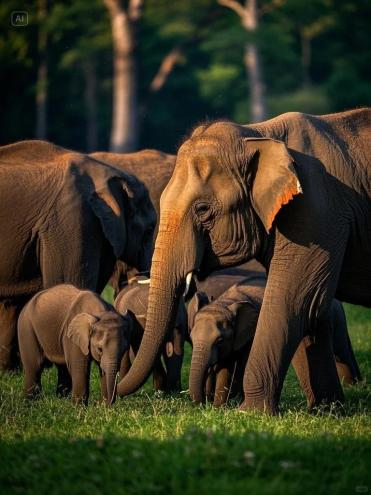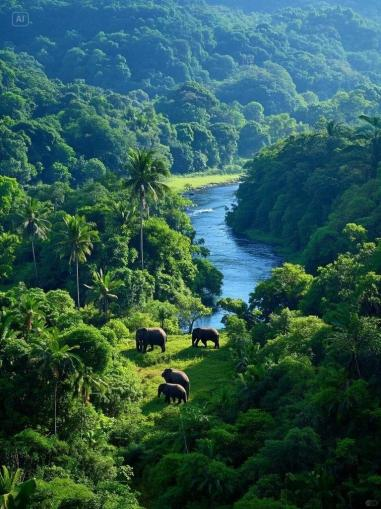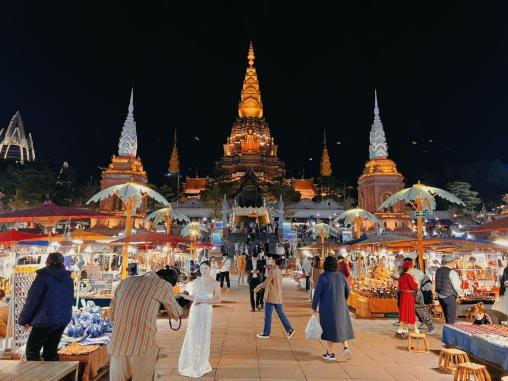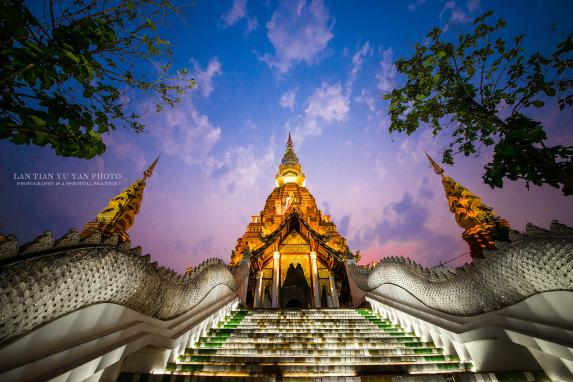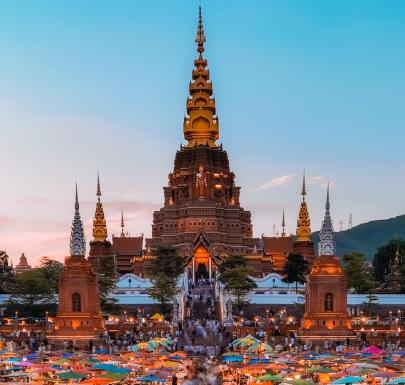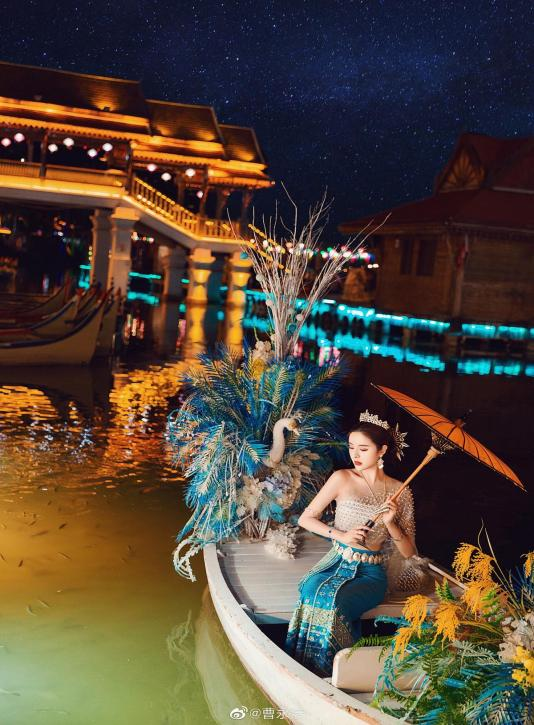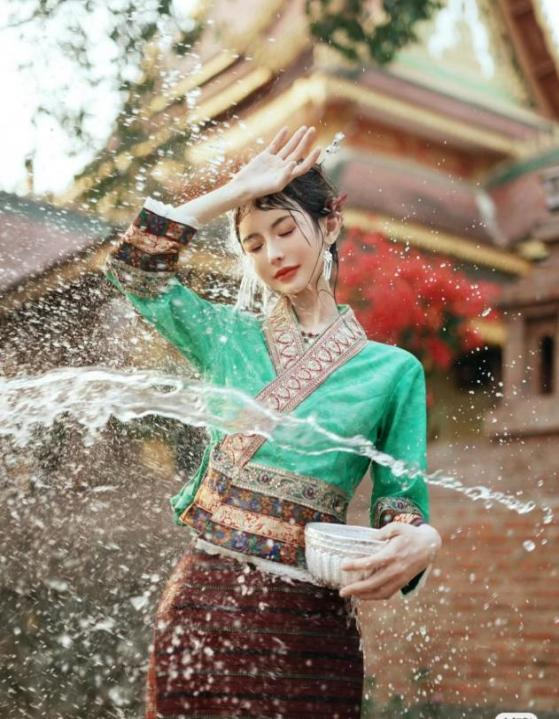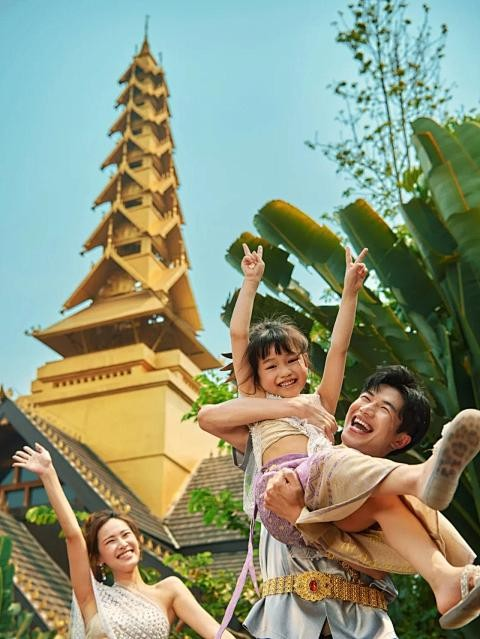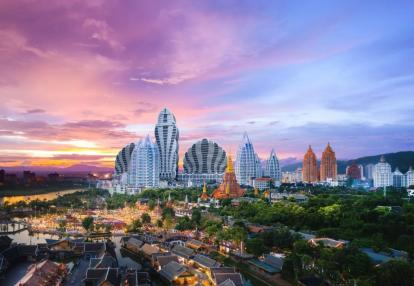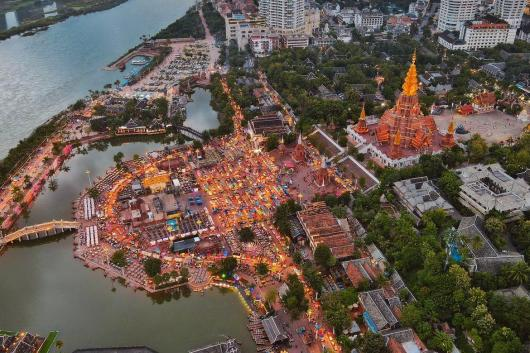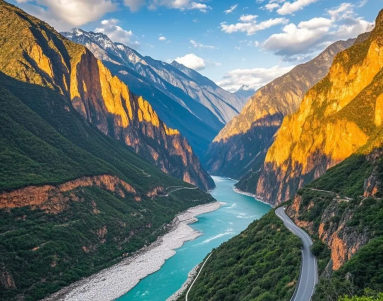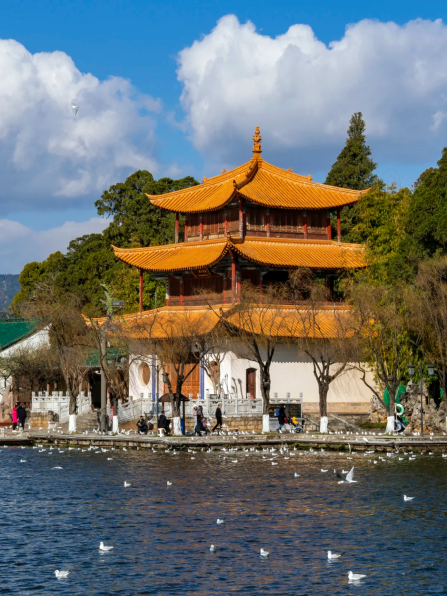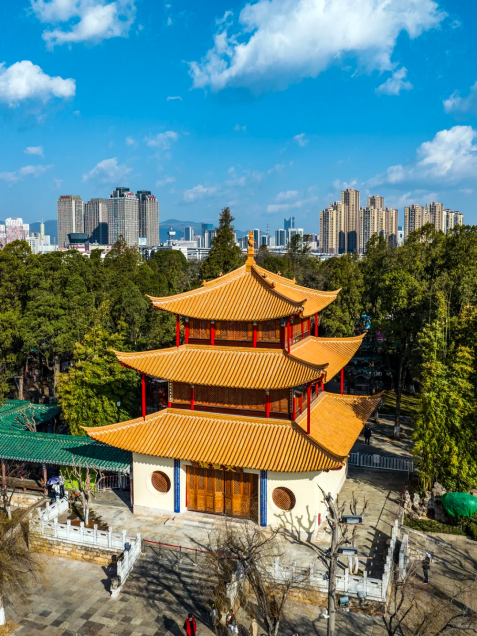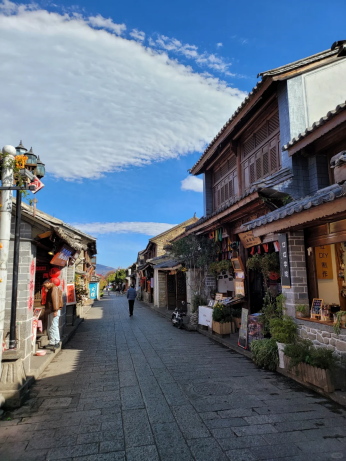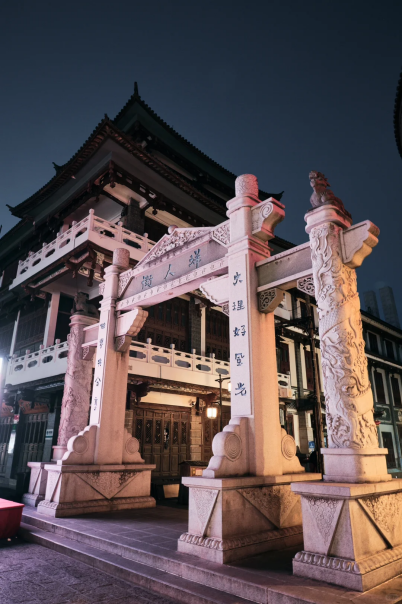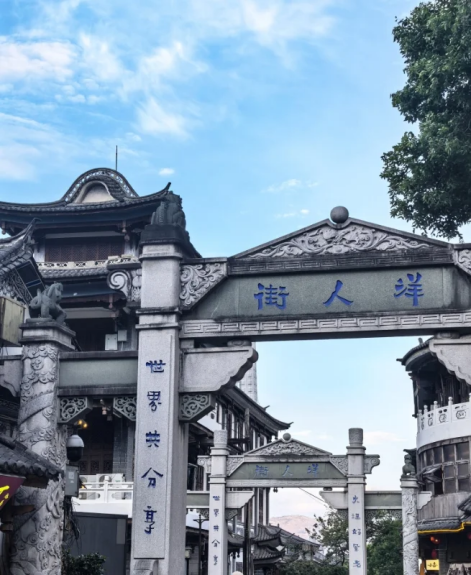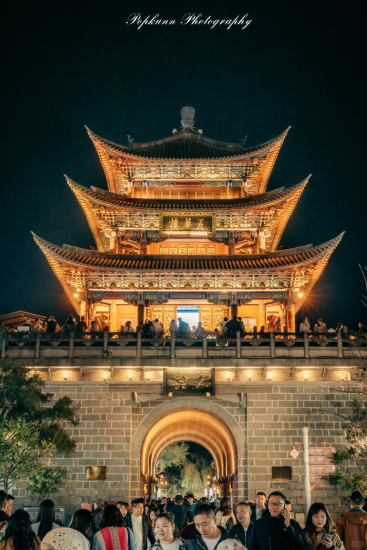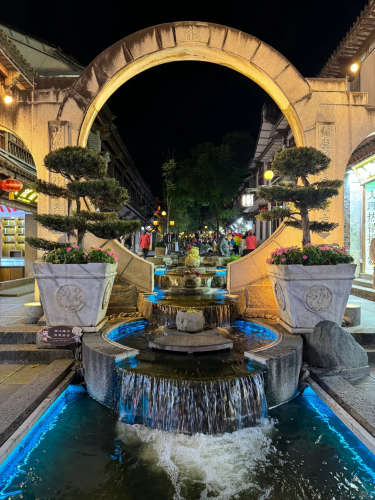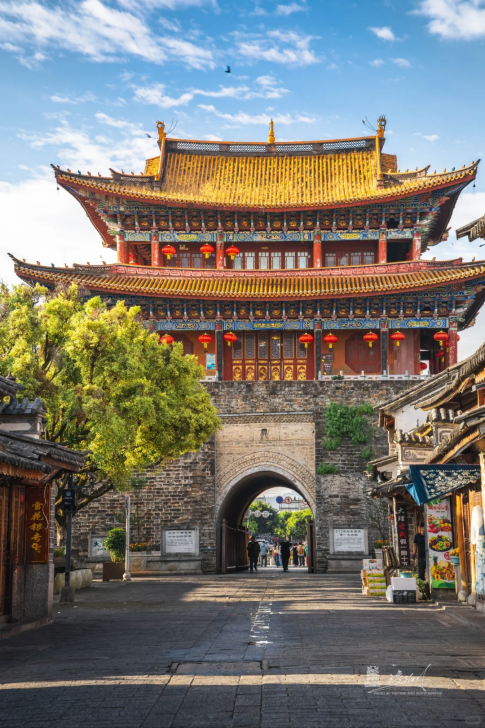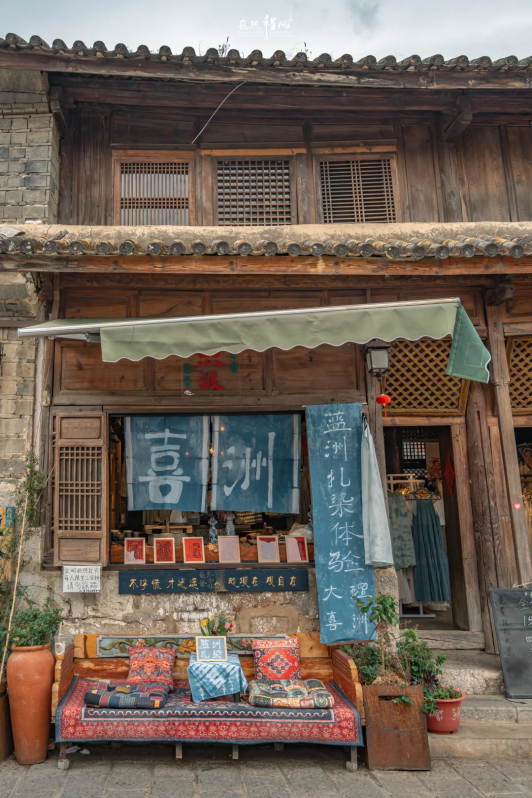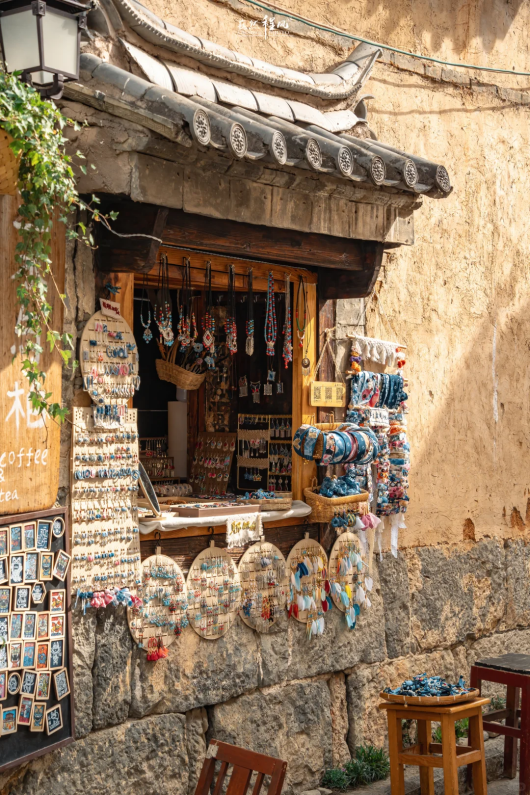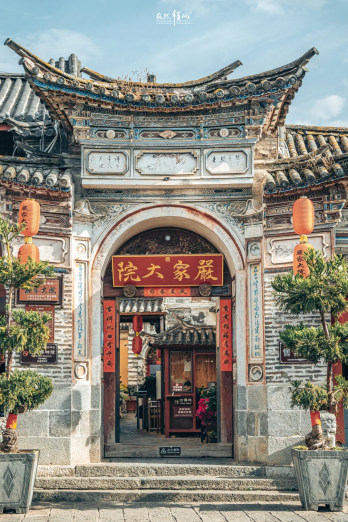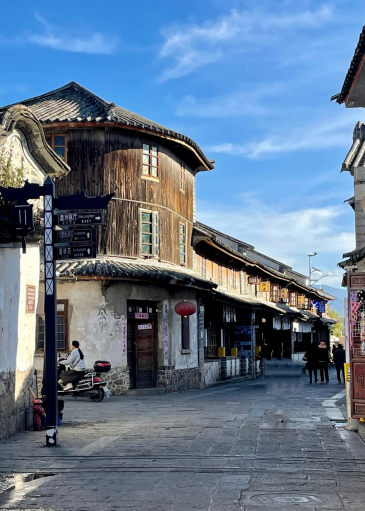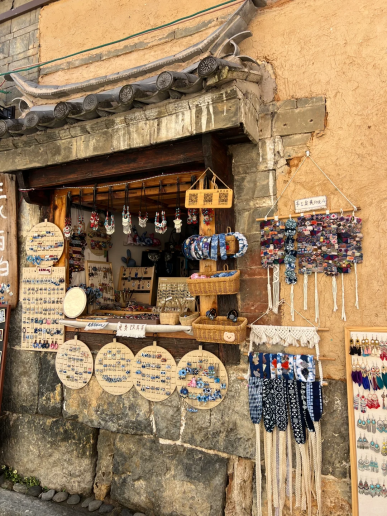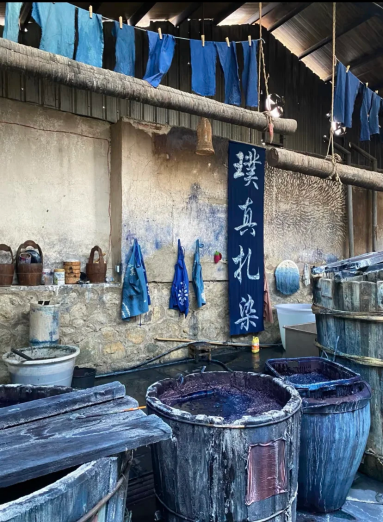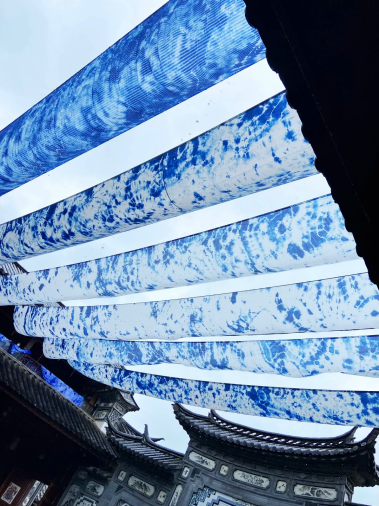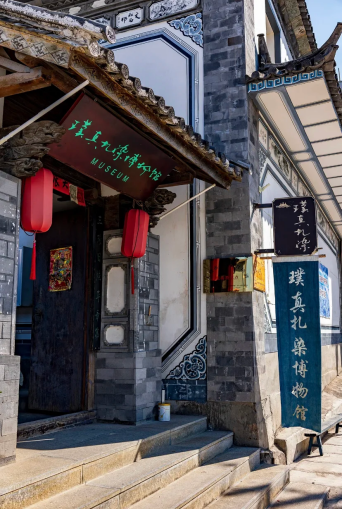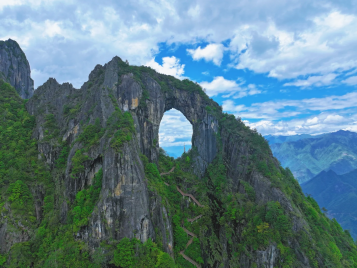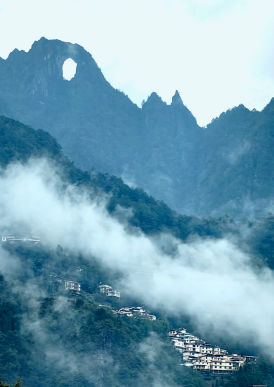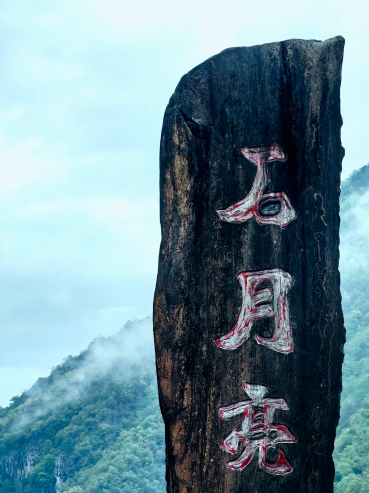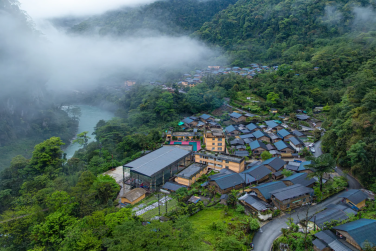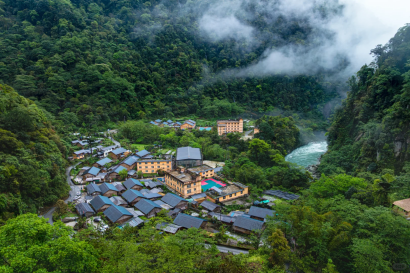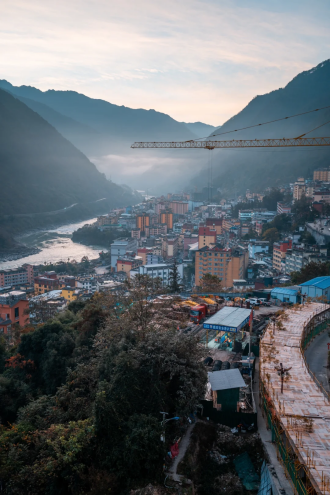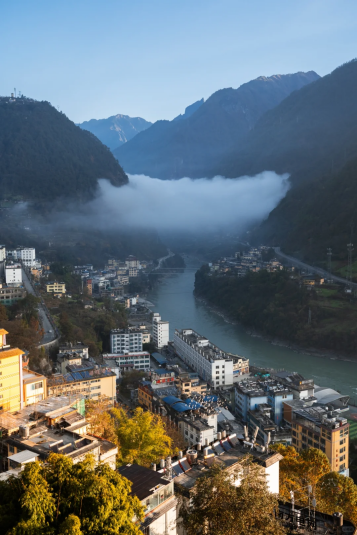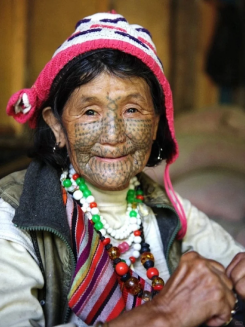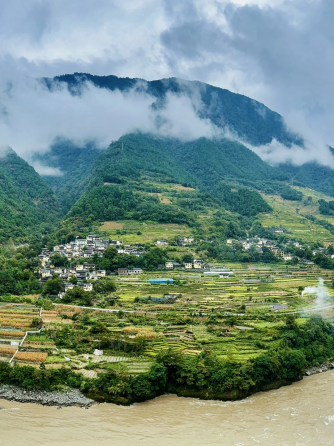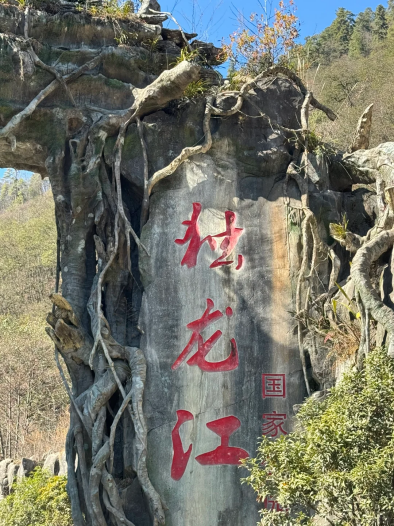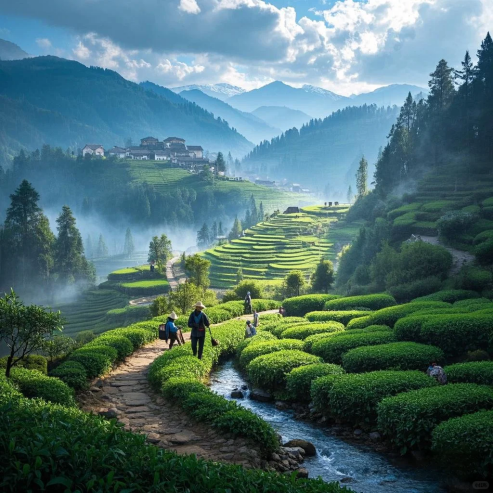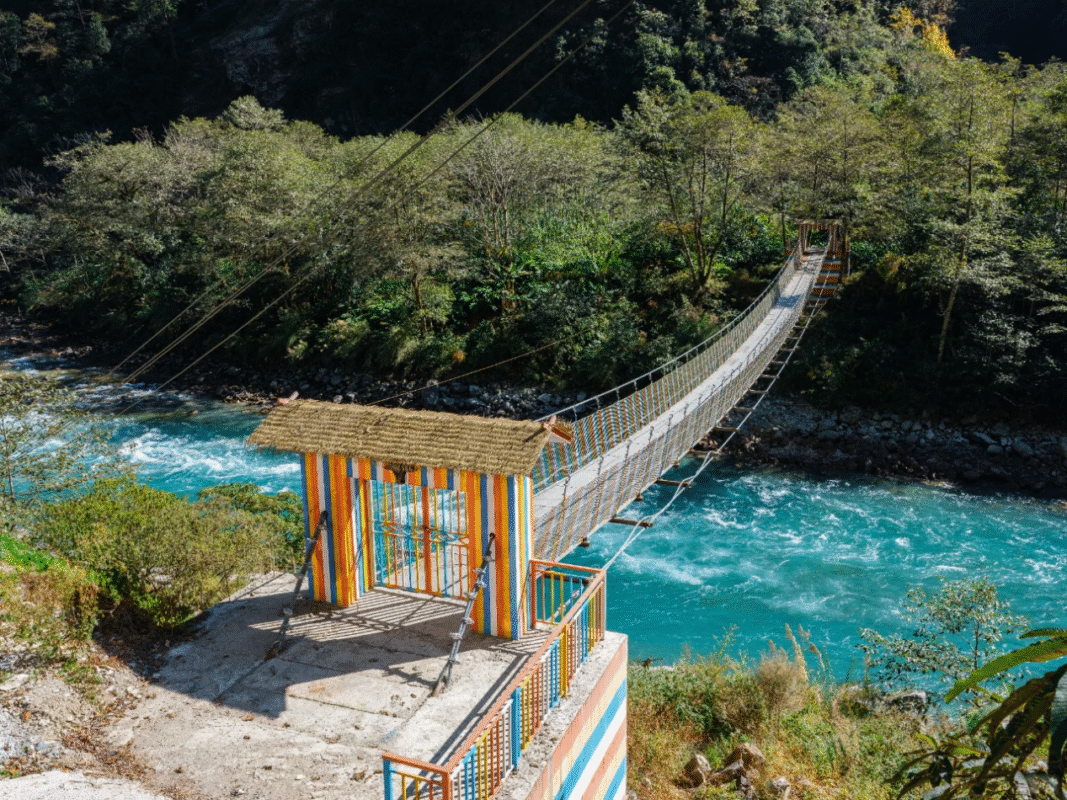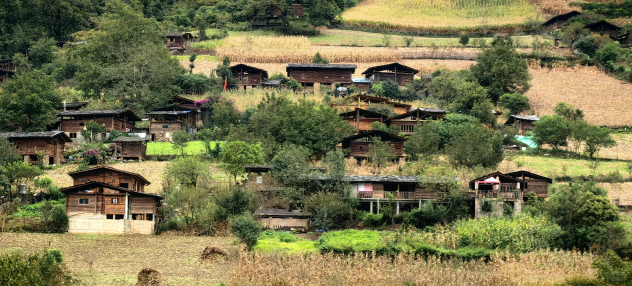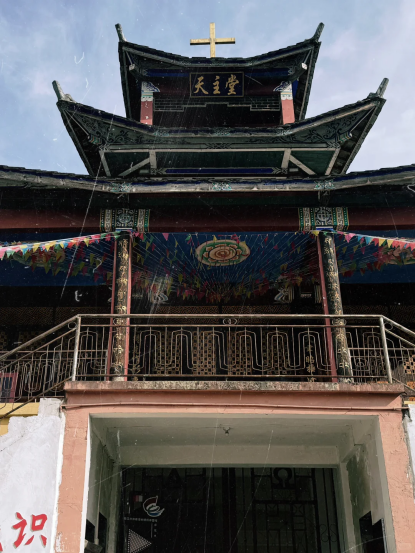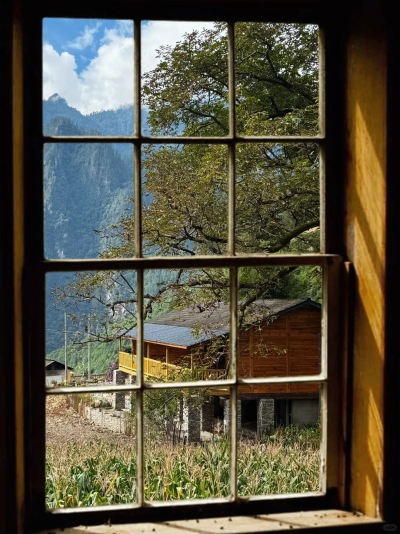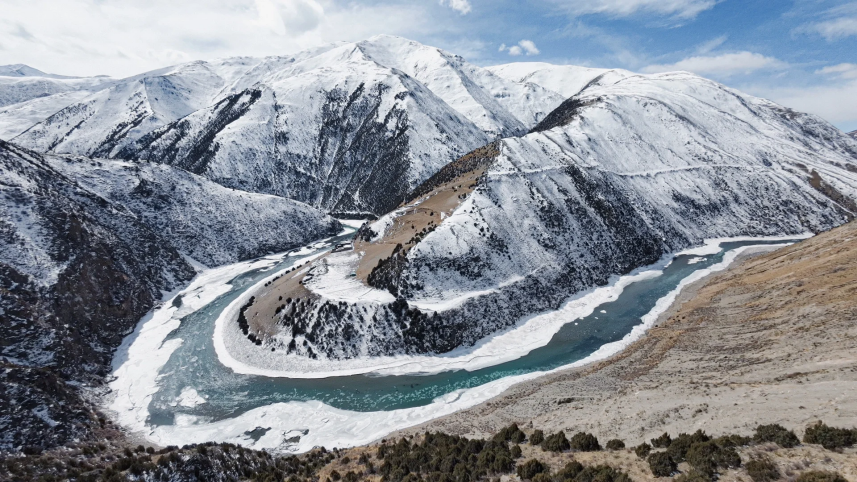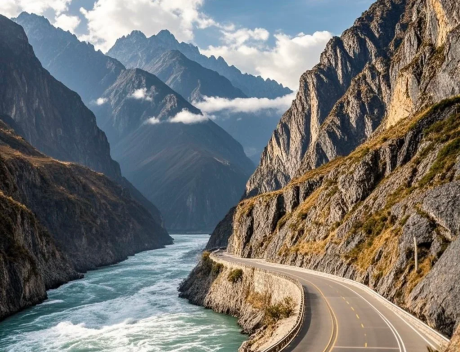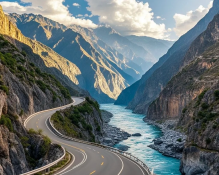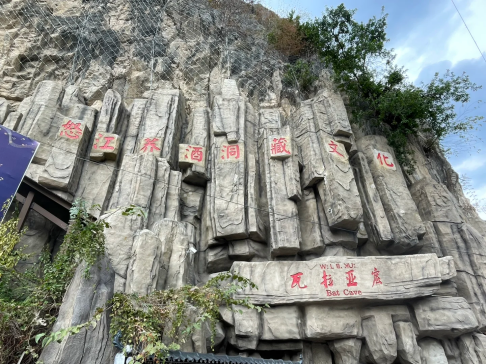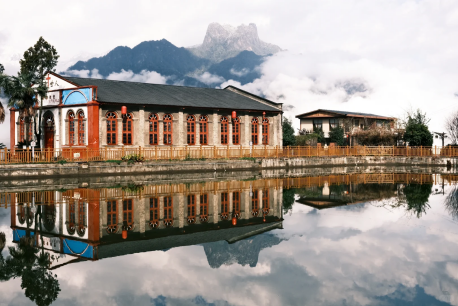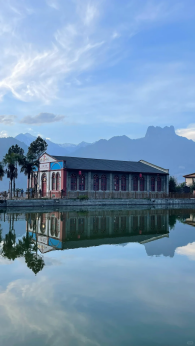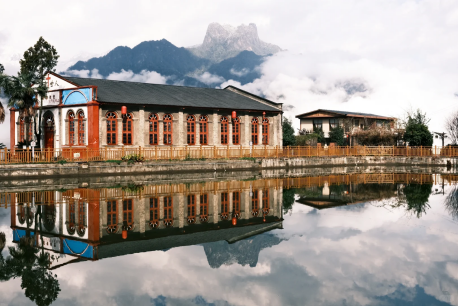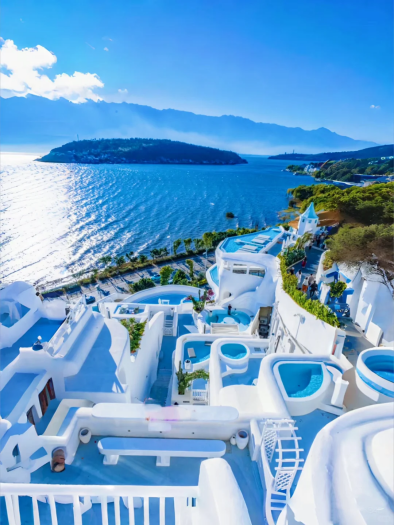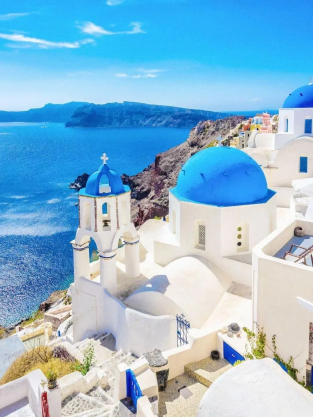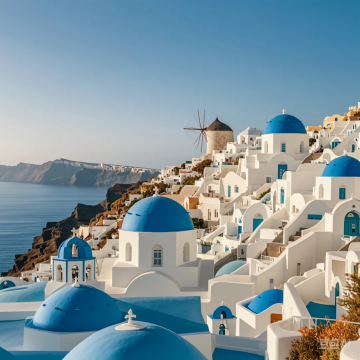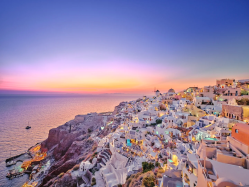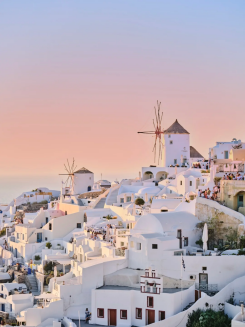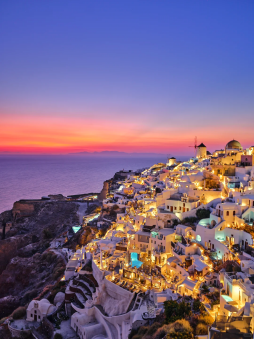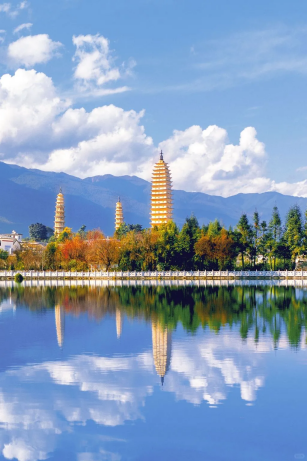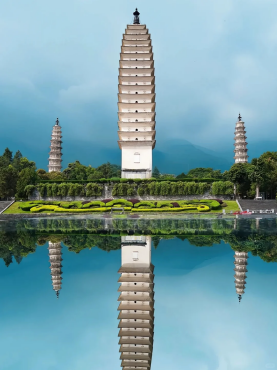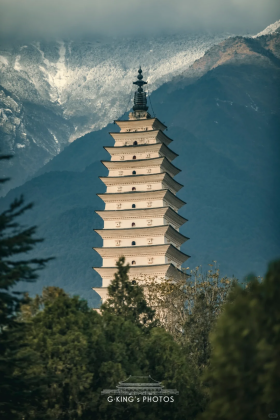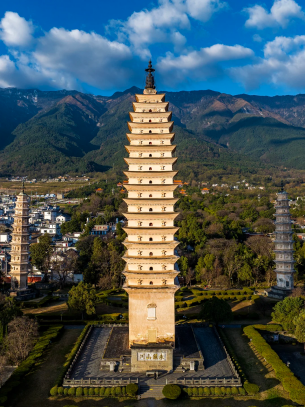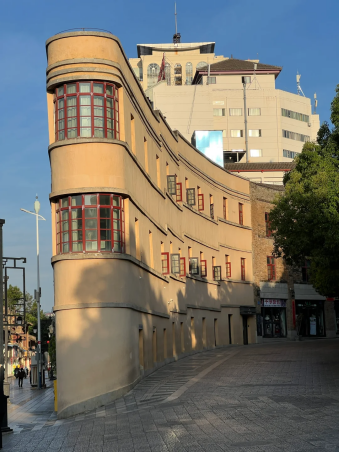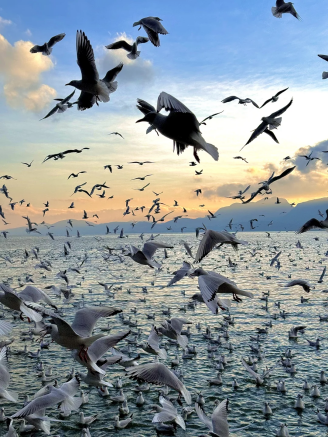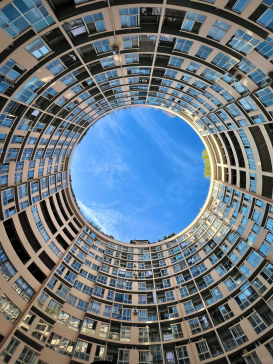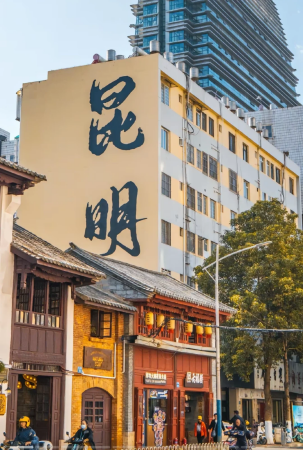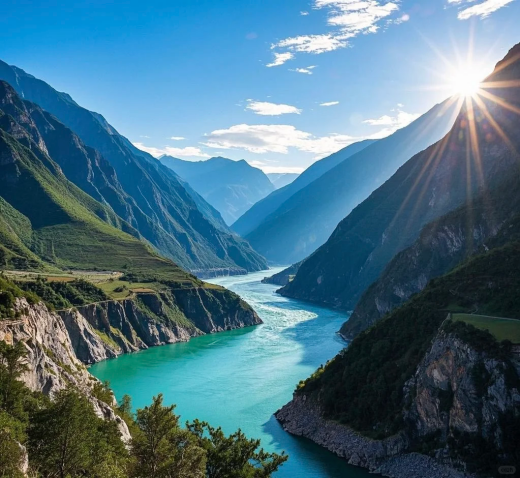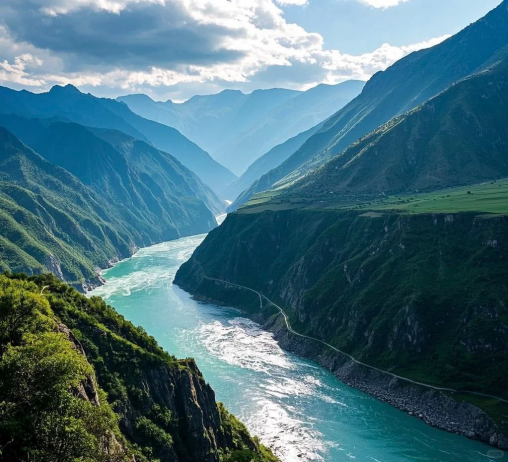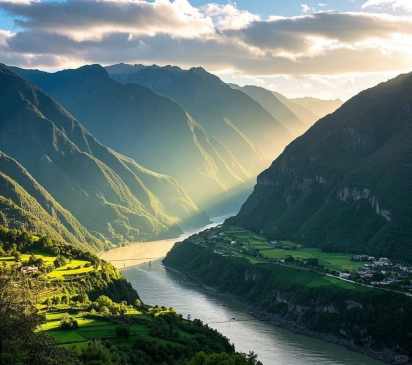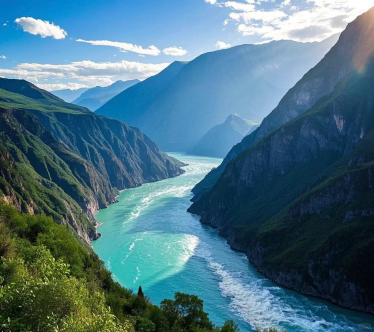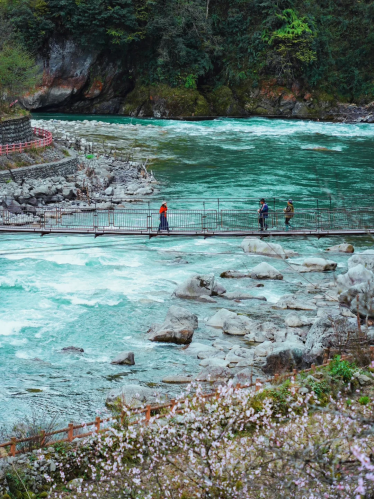Fireworks at the Pole: A National Poem of the Tea Horse Family on the Yunnan-Burma Corridor (6 Days 5 Nights)
6 Days 5 Nights- 24-hour butler service
- Transfer service
- Professional tour guide
- Star-rated accommodation
- Special cuisine
Overview
When the morning bell of the Shwedagon Pagoda in Mangshi startled the peacocks in the Treasure Garden, the tube skirt of the Dai family whistle swept over the century-old tree and turned into jade, and the morning mist on the border was soaked with the resonance of the Southern Buddha sound and the elephant’s foot drum. In Wan Town, the tracks of the China-Myanmar Friendship Bridge rubbed the footprints of the expeditionary force, and the giant banyan tree in the forest hung down to the noise of the country gate – the sour horn juice of the Dai “Xiao Bu Mao” hit the brown sugar cake of the Burmese traders.
The steel cable of the Longjiang Bridge cut through the sea of clouds, and the wooden drum of Simola Wa Village suddenly sounded: the bonfire of the “New Rice Festival” in front of the Niutou pile was lit, and the red rice stewed in the black clay pot hid the Wa password of “Simola” (happy place); The grandmother by the fire pit twisted the grains and woven the legend of “man and god living together” into the newly dyed homespun cloth. To the north deep into the extreme edge, the 10,000 acres of rape flowers at the head of the boundary flooded the volcanic platform, and under the eaves of Ginkgo Village, the Han family Ah Gong cut the shadow puppet play into a butterfly in golden autumn; The big boiling pot of Atami is steaming and the earth is pulsating, and by the laundry pavilion in Heshun Ancient Town, the Mabang Lei Xiang tea bursts out of the burnt fragrance in the clay pot – it is the Jianghu gas brought home by the men of the Yifang Fang.
Highlights
- You don't need to get up early with the group to catch up with the itinerary, you don't need to check the pit avoidance attractions by yourself, and you can customize the travel route and plan the itinerary reasonably.
- High standard hotel: Online review of four-diamond hotel Five-diamond hotel is up to you to choose, experience the comfort of comfortable stay, and carefully select light luxury hotels.
- Exotic cuisine: Peacock Banquet, Mengmao Banquet, Xidong Compound, Special Clay Pot Health Meal, Special Flavor Meal.
- In-depth experience: High-end small package group limited exclusive & Mabang Lei Xiang Tea / Yunnan Eighteen Monsters and national interpretation of "Dream Tengchong" performance.
Itinerary
Dining arrangement: All day at your own expense.
VIPs take the flight to Mangshi, and our concierge staff will welcome you! After the reception staff has completed the check-in procedures for the VIP, the airport will arrange a pick-up vehicle to be delivered to the hotel. After check-in at the hotel, guests are free to arrange the rest of the day.
Dining arrangement: breakfast - Hotel self service. Lunch: Peacock Feast. Dinner: Local cuisine.
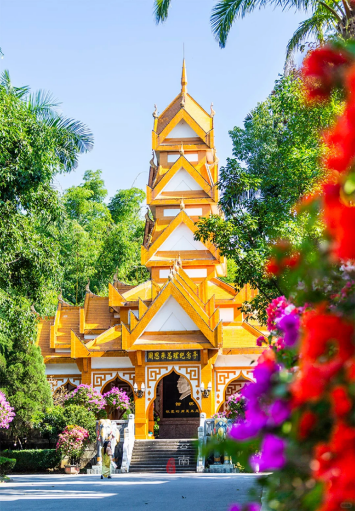
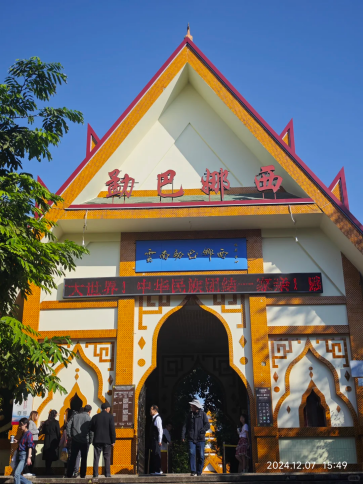
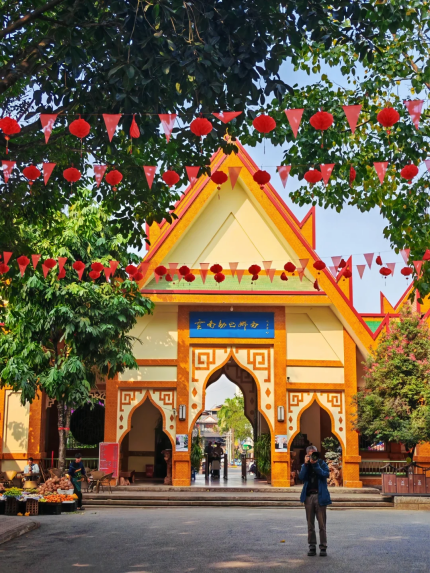
After breakfast, visit the Mengbanaxi Treasure Garden, located in the southeast of Luxi City, Dehong Prefecture (about 30 minutes by car, about 1 hour) is a national AAAA-level scenic spot, which is characterized by: rare, strange, ancient and strange, which can be called a tourist highlight of the collection of boutiques.
Mengbanaxi Treasure Garden (Dai language means "magical and beautiful place") is a cultural landmark in Dehong, western Yunnan, rooted in the Dai "Mengbala Naxi" of the ancient ideal country legend, its history can be traced back to the initial construction in 1986, after the official opening in 2001, the gradual integration of Mangshi National Cultural Palace resources, become a national AAAA-level scenic spot. The park condenses the "double epic of nature and humanity":
Natural wonders: Famous for the "four best in the country" - more than 500 century-old trees (such as thousand-year-old osmanthus and crape myrtle), thousand-ton tree jade and petrified wood (spanning 100 million years), giant root carving art (such as "Shuanglong Pillar"), and high survival rate transplantation technology of ancient trees, which can be called "subtropical plant gene pool" and geological living teaching materials;
Cultural blending: Southeast Asia's Dai-style gatehouse, the Dai Songkran Festival "White Dragon Pavilion" and the Jingpo "Eye Brain Song" sign stand side by side, Zhou Enlai Memorial Pavilion is engraved with the history of the 1956 China-Myanmar border people's party, and the white marble statue and trilingual inscription witness the border diplomacy;
Belief and ecological philosophy: Rare plants such as alder (living fossil of the dinosaur era) and "tree wrapped stone" and "plant strangulation" echo the Dai people's animistic beliefs, while ecological protection practices (such as saving endangered species) give it universal scientific value.
Here, the annual rings of ancient trees and the crystal veins of tree jade are engraved with the vicissitudes of the Hengduan Mountains; The Dai brocade-like sea of flowers and multi-ethnic totems weave a three-dimensional scripture of "natural awe and border symbiosis".
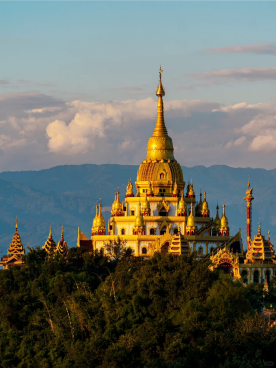
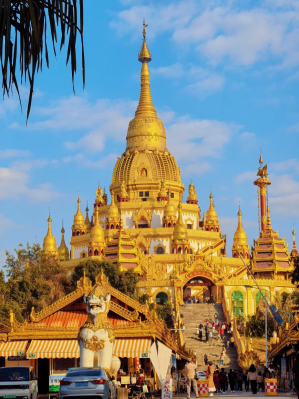
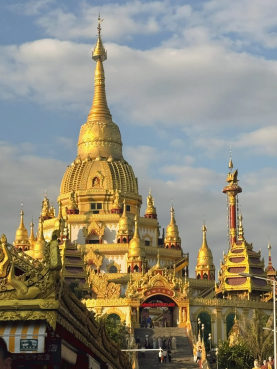
Visit the Shwedagon Pagoda (30 minutes by car, 1 hour) The Shwedagon Pagoda is located on the top of Leiyarang Mountain on the shore of Peacock Lake in the southeast of Mangshi, the capital of Dehong Prefecture, Yunnan Province. The "Menghuan Shwedagon Pagoda" between the green mountains and green waters is shining with golden light, dazzling, majestic and magnificent, and even more sacred. It is a landmark building in Mangshi, and it is also a holy place for the Dai people living here.
Menghuan Shwedagon Pagoda, located on the top of Leiyarang Mountain (1079.6 meters above sea level) in Mangshi, Yunnan Province, is the holy place of Dai belief and the landmark of Mangshi, carrying the epic of thousand-year-old Buddha and modern rebirth. Its history is rooted in the legend of the Dai people: Sakyamuni reincarnated as the golden rooster Aluan once lived in this mountain, hundreds of years after the Buddha was destroyed, the disciple called Handa to practice here when "the weeds and thorns retreated", the mountain is called "Lei Ya Rang" (the place where the weeds let go), and the tower was built in later generations as a holy place for Buddhism.
The original tower has undergone catastrophes - destroyed in 1942 by the flames of the Anti-Japanese War, and suffered another catastrophe in 1966; In 2004, the government rebuilt the two sites in one and spent 55 million yuan to rebirth as "China's first golden pagoda and Asia's first hollow pagoda". The tower is 76 meters high, the diameter of the base is 50 meters, and it integrates the style of the Dai palace in South Asia: in the hollow structure of the octagonal four gates, there are four Buddha statues in the main hall on the first floor, 16 white marble Buddha pavilions and 8 small towers in the second and third floors, covered with 2.3 tons of gold top, and the main pillar of the 13-layer bowl bell base points directly to the sky, symbolizing the harmonious coexistence of Dai Buddhism and nature.
Today, the golden pagoda and the silver pagoda reflect the shore of the Peacock Lake, the Van bell frightens the herons, and the lights light up the night sky of the frontier all night, and the oracle of "wild grass makes the mountain", the tenacity of the rebirth of the war, and the ingenuity of the hollow golden dome are cast into a "Dai spiritual totem" engraved on the canopy in southwest Yunnan.
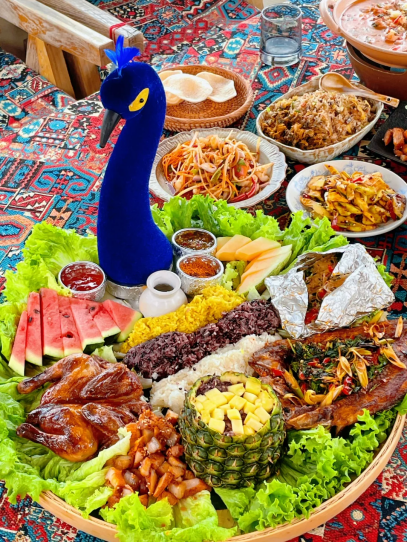
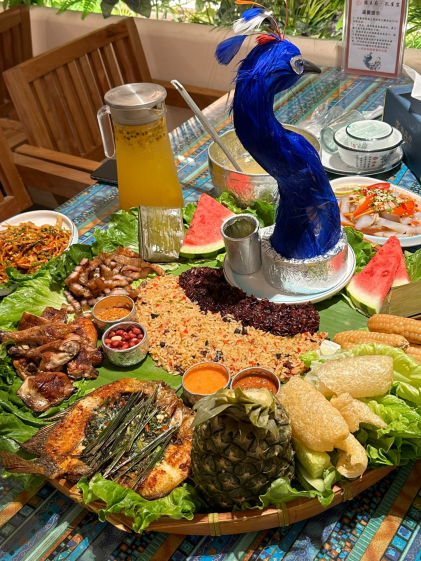
Chinese food to taste the Dai flavor banquet [Peacock Banquet] of the Mangshi people with national characteristics, feel the food on the tip of the tongue, let you feast your eyes and mouth.
The peacock feast is a cultural totem created by the Dai people in Yunnan Province in the tide of tourism economy, which not only inherits the ancient food genes of the Dai people, but also integrates the "peacock", a symbol of auspiciousness and holiness. With the development of modern tourism, it was systematically integrated in Xishuangbanna, Dehong and other places at the beginning of the 21st century: with banana leaves or dustpans as the table, the Dai sour and hot dishes such as roast chicken, roasted fish, chicken feet, and sour ant eggs are laid out in the shape of a peacock opening screen, and the imitation peacock head is placed in the center as the finishing touch.
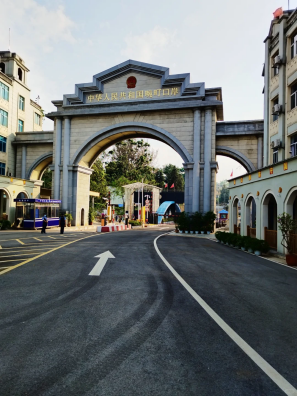
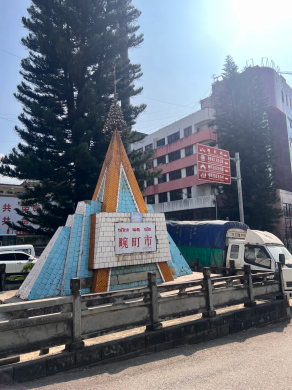
Take a car to Ruili (about 1.5 hours) to arrive at Wan Town, which has the reputation of the first town in the border pass and is also one of the most representative of your journey, Wan Town is the national port of the smallest border city in the country, with a local population of only more than 10,000 people. [Wan Town City], [China-Myanmar Friendship Bridge], view of the "China-Myanmar Boundary Monument" located at the intersection of Yunnan-Burma Highway and Stilwell Highway (about 30 minutes).
Wan Town (Dai language "the place where the sun is at the top"), this "pocket town" on the border of China and Myanmar, with a bridge and a river as the axis, carries the beacon fire and blending of the thousand-year-old border pass. It is the bloodline terminus of the Yunnan-Burma Highway - in 1938, the stone arch bridge flew over the Wanding River, where 3,200 Nanyang mechanics galloped day and night, rushing to transport 500,000 tons of anti-Japanese war materials in three years, and grinding out the lifeline of "one inch of highway and one inch of blood" with wheels; It is also the gate of the expeditionary force: 100,000 soldiers marched to northern Myanmar, where the smoke of the Battle of Black Mountain Gate in 1945 ended the history of the fall of western Yunnan, and the rivets of the steel bridge are still embedded with iron and blood.
In 1956, Premier Zhou Enlai and Burmese Prime Minister U Bar Rui walked side by side across the Wan Town Bridge and planted Burmese osmanthus trees in Mangshi, making this "diplomatic bridge" a symbol of peace for New China to break the international blockade. The Dai people, Jingpo, De'ang and other 15 ethnic groups live across the border here, intermarry and intermarry each other, and the Dai tune, Jingpo and Myanmar brown sugar incense by the fire pond are intertwined into the daily fireworks of "one city and two countries" - the cooking smoke on both sides of the boundary monument is finally boiled into an epic of border pass, national soul and friendship between the border and the waves in the years
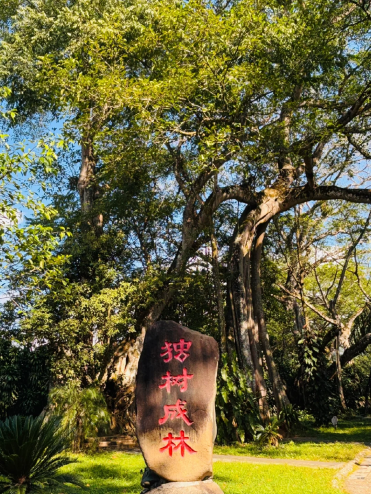
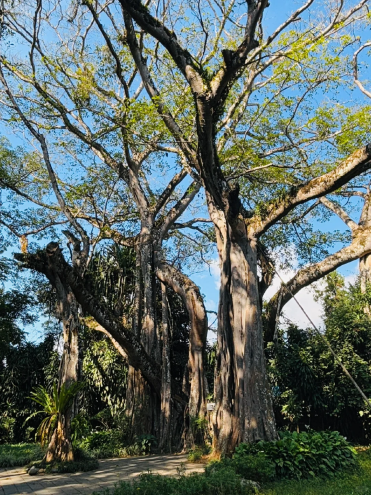
Go to visit the "Tree Forest" (tour time is about 45 minutes) This mature forest is a single tree, the tree is 28 meters high, the age of the tree is more than 200 years, it belongs to the tropics, subtropics of large-leaved ficus. The numerous aerial roots in the middle of the trunk of the tree descend the tree, intertwining with each other and coiling around the roots. On the main branches on the left and right sides, there are 32 aerial roots of different sizes that descend vertically and penetrate into the soil, forming clumped pillar roots with connected roots, creating a forest landscape with multiple trunks. After dinner, check in to the hotel.
Food arrangement: Breakfast - Hotel buffet. Lunch - Mengmao banquet. Dinner - local cuisine.
After breakfast, visit [China-Myanmar National Gate] China-Myanmar Sister Guomen Port is a state-level border trade port, which is one of the busiest areas of China's land trade with Myanmar. The port is divided into three magnificent buildings, built according to the border, the middle is the main national gate, the right is the goods channel, and the left is the personnel channel.
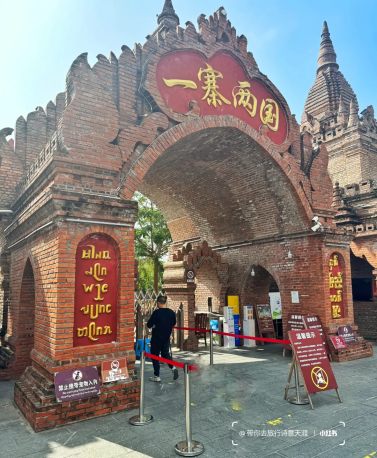
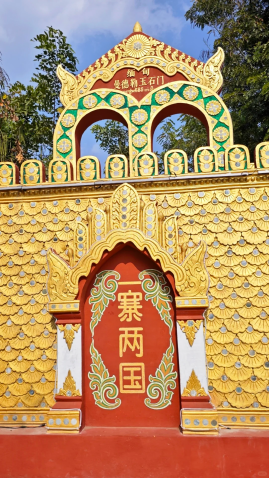
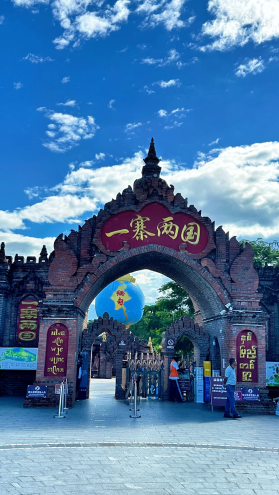
Go to visit the national AAA-level scenic spot, the famous Sino-Myanmar border No. 71 boundary monument is located [one village and two countries] to visit the Dai village, the national border divides a Dai village into two, becoming a typical "one village, two countries" geographical wonder;
After the tour, enjoy Chinese food at the [Mengmao Banquet] restaurant.
Mengmao Banquet, rooted in the cultural soil of the "Mengmao Ancient Kingdom" (Dai language "Fog City") of the Dai nationality in Ruili, Yunnan, was founded by entrepreneur Leslie Cheung in 2015 and is a living carrier of Dai culture in Dehong Prefecture integrating architectural art, ecological diet and non-genetic inheritance. Its architecture is characterized by gray-white Dai-style pavilions, avoiding the bright yellow of the traditional royal palace and echoing the simple aesthetics of the people; The small bridges and flowing water in the courtyard, the pavilions of the golden pagoda, integrate the South Asian style ornaments, and reproduce the artistic conception of the rainforest paradise of "Mengbara Naxi".
The core food culture is marked by the insect feast, digging deep into the ecological wisdom of the Dai people's "eating 100 insects in summer": more than 60 kinds of insects such as bamboo insects, bee pupae and ant eggs are included in the cuisine, and innovative dishes such as "boiled ant eggs with sour grass" and "eggs in auspicious eggs" have been developed, sublimating the source of mountain protein into a cross-border food symbol; At the same time, the ritual of hand pilaf is inherited - yellow and white rice spread with banana leaves, surrounded by 17 sour and hot game, and the "bowl of pure blessing" conveys natural awe.
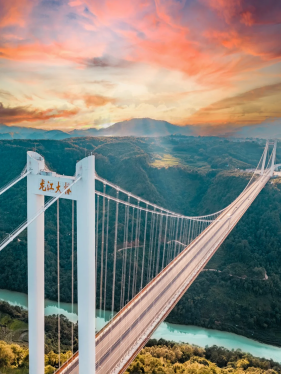
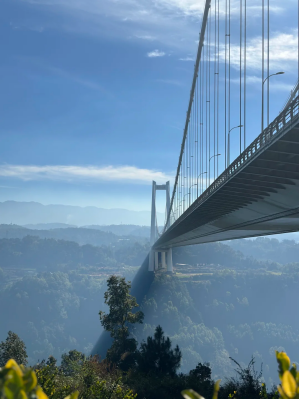
Take the car to Tengchong (about 3 hours), pass through the first bridge in Asia [Longjiang Bridge] (stop for 15 minutes to take pictures).
Longjiang Bridge (also known as Longjiang Bridge), the "cloud project" between Baoshan and Tengchong in Yunnan, is a modern miracle of the Hengduan Mountains in western Yunnan, carrying the symbolic significance of the epic of frontier transportation and national rejuvenation. In 2016, the largest span steel box girder suspension bridge (main span of 1196 meters) in the mountainous area of Asia was completed and opened to traffic, flying over the Longchuan River Gorge with a dragon posture of 2471 meters, the bridge deck is 280 meters away from the valley floor, and the twin towers stand like a door god (Baoshan Bank Tower is 169.7 meters high), and it is like "rainbow across the Cangjiang River and Longteng Cloud Peak" in the clouds and mist, and has become the core hub of the three major corridors of "history and culture, natural landscape and international channel" of Baoteng Expressway.
Go to Simola Wa Village, the place of Xi Jinping's investigation (13 kilometers, about 30 minutes by car, including battery car, stay time of about 1.5 hours).
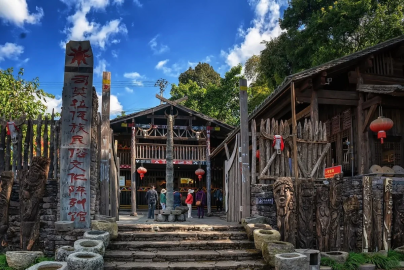
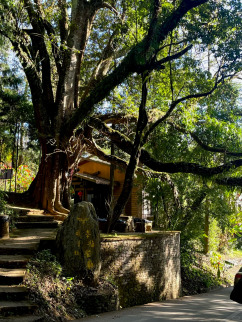
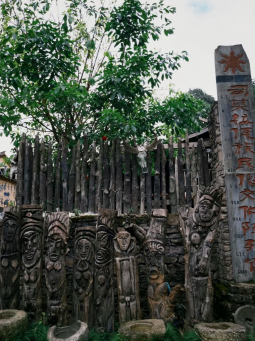
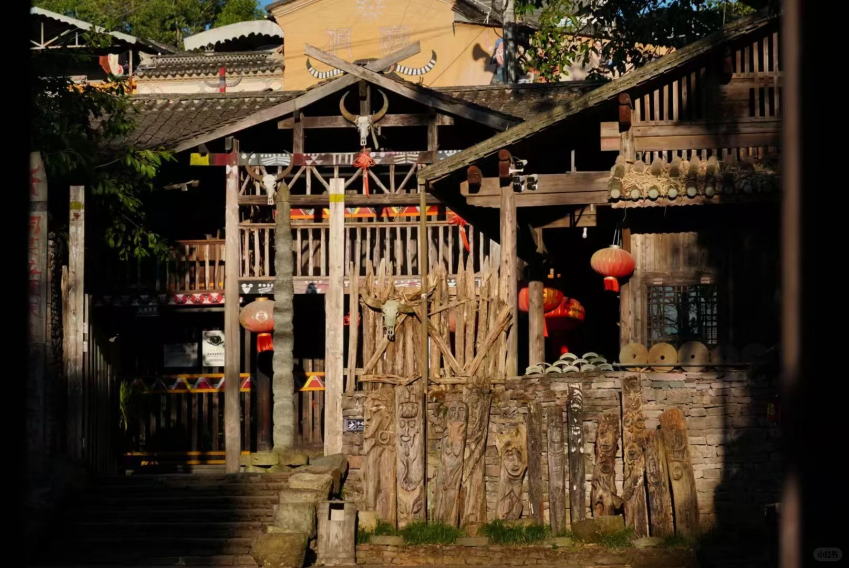
Located in Sanjia Village, Qingshui Town, Tengchong, Yunnan Province, Simola Wa Village (Wa "Land of Happiness") has completely preserved the traditional cultural genes of the Wa people, such as totem worship (ox head pile), wooden drum sacrifice, wedding and funeral ceremonies, as well as ancient festivals such as the New Rice Festival and the Ox Cong137. The Tengchong Wa people, also known as the "land guards", are one of the indigenous people of Tengchong and one of the first people to communicate and integrate with foreign Han people. The heart pile in the village symbolizes the ancestors of mankind, the Qiziquan nourishes the terraced farming, and the water mill house and laundry ditch record the ecological wisdom of the Wa people's "human and god cohabitation"; The Folk Customs Exhibition Hall, the ruins of the Wa Wangfu and the Wooden Drum House have become living witnesses of the Wa people's transition from primitive clan society to modern civilization.
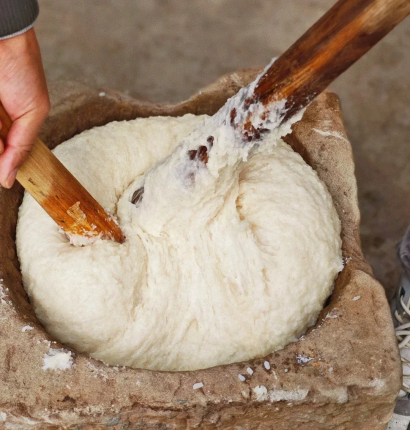
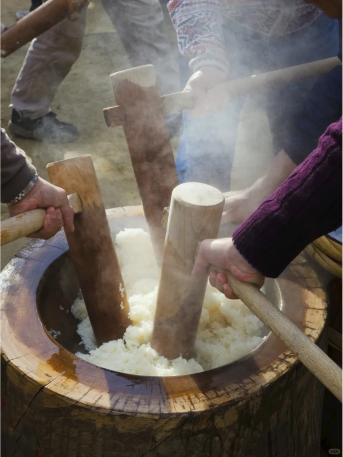
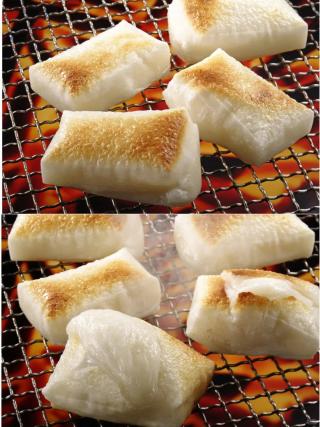
Special arrangement: [Experience Chung Ba Ba] Rice Ba Ba is the favorite traditional food of the Simola Wa people, which is made of rice as raw materials; Experience the traditional tools of scooping and pressing poop; Savor the taste of fresh rice poop.
As a rice food totem inherited by the Dai people in Yunnan for thousands of years, it is rooted in the farming belief and festival culture of the Dai people. Its history can be traced back to the rice civilization of the ancestors of the Dai nationality - every year from the eve of the Spring Festival of the Han nationality to the New Year of the Dai calendar (about half a year cycle), the Dai village will enter the "baba season", the village village sounded the sound of the wooden pestle hitting the stone mortar, the steamed glutinous rice is under the backdrop of the banana leaves, after repeated pounding and fusion of lard, condensed into a flexible rice ball, and then decorated with salt and black soybean seeds to enhance the fragrance, or directly with purple rice as a blank, the achievement of hundreds of different flavors of the baba form.
This skill is not only the embodiment of the Dai people's ecological concept of "symbiosis between heaven and man" (banana leaf wrapping, bamboo and wood utensils processing), but also carries the function of social bonds: during the New Year's Festival, baba is given to relatives and friends, symbolizing blessing and reunion; During the sacrifice, it is made as an offering and prays for the soul of the valley to protect the harvest. In recent years, with the integration of culture and tourism, the traditional family ritual of "self-promotion and self-production" has evolved into an industrial landscape of "one village and one street" - on the "Baba Street" in the old city and countryside, the rice fragrance made by the Dai aunt in the ancient method is rubbing the thousand-year-old Dai rhyme into the memory of tourists, so that this "flexible as years, innocent as the original heart" of the tip of the tongue intangible cultural heritage, from the fire pond to the world.
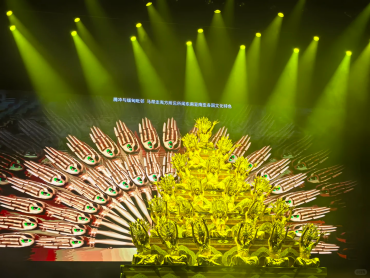
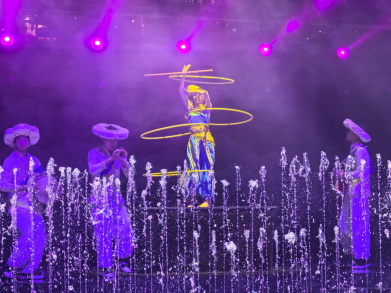
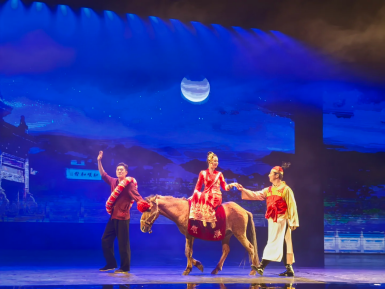
Special gift: watch the large-scale singing and dancing visual feast after dinner ➱ "Dream Tengchong" (B ticket, worth 198 yuan / person, the performance time is about 90 minutes, remarks: gift items, if you can't arrange it for special reasons or give up for your own reasons, no fee can be refunded!! This play is based on the passion of the volcano, the gentleness of Atami, the legend of the caravan, the madness of the jade, the bloody battle of the homeland, the picture scroll of folklore, the revival of the Silk Road, and the reconciliation between man and nature. After that, check in to the hotel and rest.
Food arrangement: Breakfast - Hotel buffet. Lunch - Xidong Courtyard. Dinner - Local cuisine.
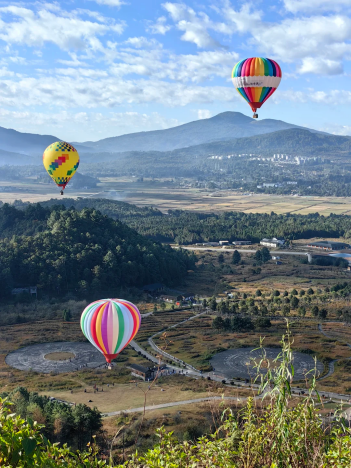
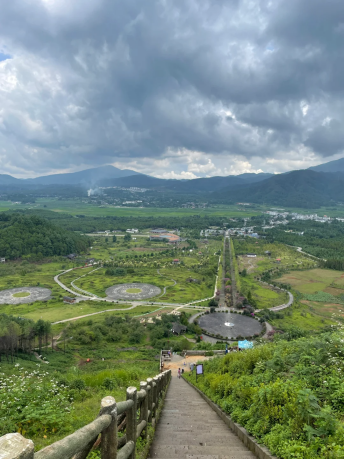
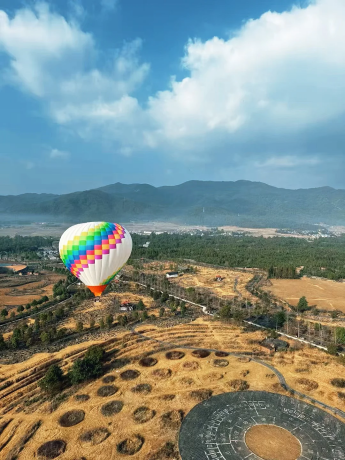
After breakfast, proceed to Volcanic Geothermal National Geopark (2 hours, battery car included; Note: Rape flowers will be arranged in February, and Dongshan grassland will be arranged from May to September; From October to December, we will arrange a walk among the volcanoes in Xingcun, Jiangdong, enjoy the magical landforms, climb to the top of the mountain, and see the peculiar craters; You can also choose to take a hot air balloon ride to the sky at your own expense to overlook the volcanic landscape.
Volcanic Geothermal National Geopark (Tengchong, Yunnan) is rooted in the "scar of the earth" of the collision of the Indian plate and the Eurasian plate, and carries the geological epic of the Hengduan Mountains for hundreds of millions of years. There are 97 volcanic cones scattered in the park, 25 of which are intact, confirming the wonder of the folk proverb "ten mountains and nine headless" - the truncated crater of Xiaokong Mountain, the basalt giant array of columnar joints, and the volcanic dark river of Heiyu River, which together write the history of volcanic activity from 3.4 million to 10,000 years ago.
It is also a living archive of humanistic investigations: Xu Xiake of the Ming Dynasty detailed the "remnants of the ashes" of the volcano in the "Diary of a Journey to Yunnan", and Li Gengen's "Records of the Martyrs' Relics" recorded many eruptions from Chenghua to Wanli in the Ming Dynasty; The boiling spring (96.6°C) in Atami's "Big Boiling Pot" is still steaming today, and the local people continue to use ancient wisdom such as straw hat steamed eggs and sulfur spring healing to turn geological energy into a ritual of life. After becoming a national geopark in 2002, it has become a frontier natural epic of "unextinguished fire and endless civilization" as a "volcanic geology museum", smelting popular science exploration, intangible cultural heritage skills and ecological beliefs.
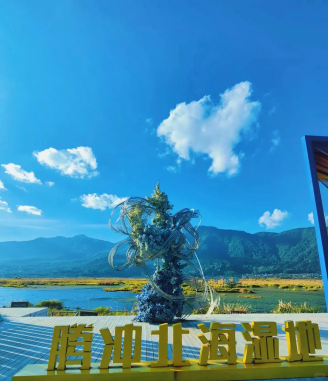
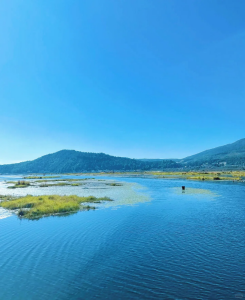
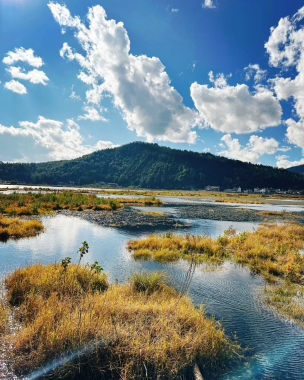
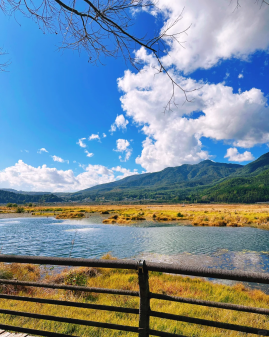
Take a car tour of [Beihai Wetland] (26 km/drive about 40 minutes, including one-way cruise, recommended stay time of about 2 hours).
The history of the Beihai Wetland, the only subtropical volcanic dammed lake swamp wetland in southwest China, dates back to a volcanic eruption about 600,000 years ago, when magma blocked underground waterways and gave birth to this "floating grassland". In 1994, it became one of the first 33 national key protected wetlands in China, known as the "kidney of the earth", with a unique grass row landscape (floating carpet-shaped moss layer up to 2 meters thick) and weak acidic water quality, nourishing endangered plants such as Ulva and iris orchid, as well as rare birds such as black storks and golden eagles, constituting an ecological wonder of "mountain-lake-grass-bird" symbiosis.
It is also a living epic of the integration of humanity and nature: ancient fishermen used to row grass rows for rafts and open holes for fishing, deriving the survival wisdom of "floating carpet fishing"; The Bai village lives around the lake, integrating the wetland into the "main faith" and agricultural festivals, and the project of returning farmland to wetland continues to write a chapter of modern ecological restoration. Today, the sea of iris orchids in spring, the migratory birds in autumn, and the Dai cooking smoke on the plank road are engraved with a dual ecological and cultural heritage that transcends time and space.
Go to the most famous Atami Scenic Area (12 km/30 minutes by car, including battery car, 2 hours).
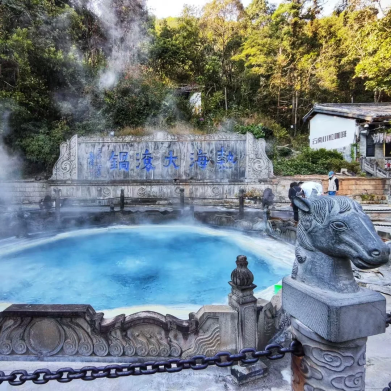
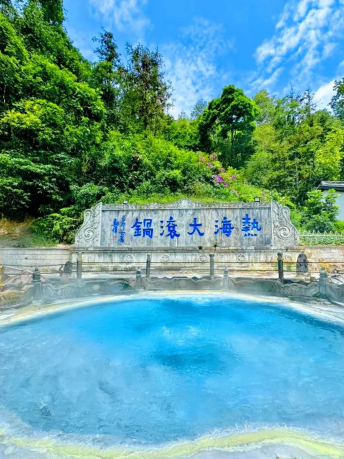
Atami Scenic Area (Tengchong, Yunnan) is rooted in the "Earth Pulse" of the Indo-Eurasian Plate Collision Zone, and is one of the three major geothermal areas in China, carrying a geological epic of 100 million years and a cultural legend of 600 years. As early as the Ming Dynasty, Xu Xiake engraved the majesty of Atami in the "Diary of Yunnan Travel" with the exclamation of "looking at the steaming gas in the gorge, like thick smoke and mist"; There is also a myth of "turning into a dragon and spitting out a spring" in the local area - a good man turns into a dragon with pearls, and hot springs gush out of the resting place to end the severe cold of the border land, giving the natural wonder a saving warmth. Nowadays, this is the only volcanic hot spring dual-resource 5A scenic spot in the country, with the "Sulfur Spring in the Bath Valley" and "Beauty Pond Hot Waterfall" to continue the tradition of health care in the border area, and with the aroma of eggs steaming in the steam and the story of the dragon passed down by word of mouth by the fire pond, the energy of the earth, the wisdom of the border people and the poetry of mythology are boiled into a "boiling but not boiling" living classic of the extreme civilization.
Gift experience: Explore the eighteen strange eggs in Yunnan and sell them on grass strings, and use straw hats as pot lids (Note: Gift items, if you can't arrange it for special reasons or give up for your own reasons, no fee can be refunded); After dinner, check in to the hotel for rest.
Food arrangement: Breakfast - Hotel buffet. Lunch - Special earthen pot. Dinner: healthy meal.
After breakfast, go to [Heshun Ancient Town] (3 km / about 10 minutes by car, including one-way battery car, the recommended tour time is 3 hours).
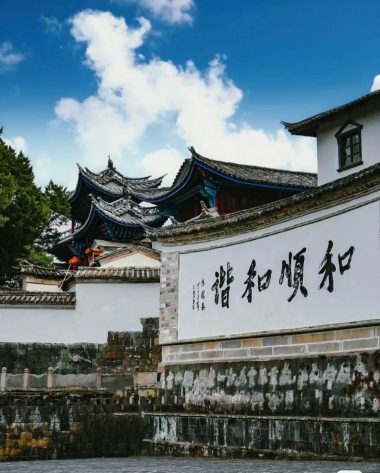
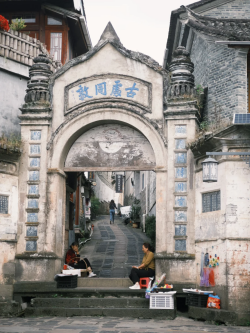
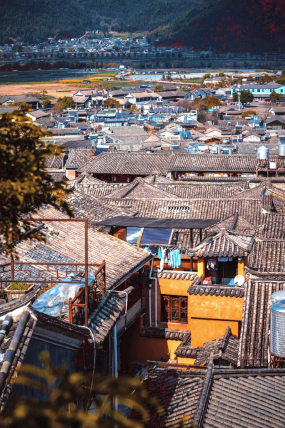
Heshun Ancient Town, a 600-year-old hometown of overseas Chinese lying quietly in the southwest of Tengchong, Yunnan Province, is known as "Shihe Minshun", which has cast the unique heritage of the Han culture of the Central Plains, the traditions of the border peoples and the exotic customs of Southeast Asia on the Southwest Silk Road. 30,000 overseas Chinese have footprints in 13 countries, but the soul of their homeland is deeply rooted in the whitewashed courtyards of the Hui School, the charm of the south of the Yangtze River with small bridges and flowing water, and the fireworks in the market beside the laundry kiosk. The wind of advocating literature and education continues - more than 400 talents have been brought out in the Ming and Qing dynasties, and the business legend of the jade king Zhang Baoting, the enlightenment spark of the philosopher Ai Siqi's "Popular Philosophy", and the cultural ties of the Burmese national teacher Yin Rong have all been nurtured here. The Heshun Library (with a collection of 130,000 books) donated by overseas Chinese has been filled with the fragrance of books so far, and the villagers have become a living totem of "China's first rural library" by "washing their feet in the fields and reading with books". After being listed as a national 5A-level scenic spot in 2024, this "living ancient town" will continue to write the harmonious poems of border civilization with the aborigines not moving and the fireworks in the ancient alleys as usual.
Walking through the old roads and alleys that ordinary tourists will not step into, and listen to the stories of those beautiful small buildings. I walked into the hometown of Shunqiao, but arrived at a different ancient town. Heshun Ancient Town, with its closed, traditional and stable environment, has completely retained the characteristics of Chinese Ming and Qing Dynasty culture, and is known as a living fossil of ancient Chinese architecture. Li Gengen, acting premier of the Republic of China, has a poem praising and shun: "Absolutely better than Xiaosu and Hangzhou". Today's Heshun life is still tranquil and untainted with modern atmosphere. During the Ming and Qing dynasties, ancestral halls, archways, ancient towns, etc. were all over the ancient towns, like a legendary paradise.
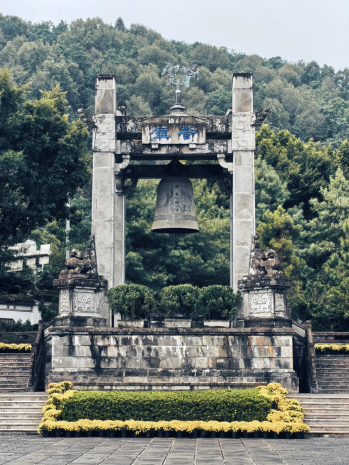
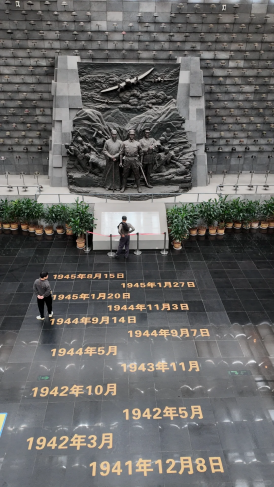
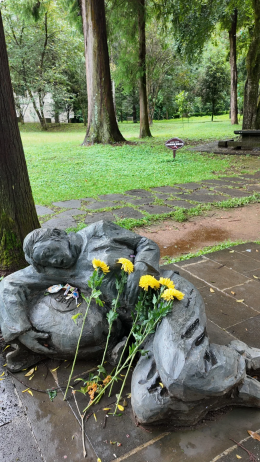
Go to the [Yunnan West Anti-Japanese War Memorial Hall] (3 kilometers / about 10 minutes by car, the recommended tour time is 60 minutes), more than 70 years ago, the tragic state of the war here has been impossible to see, only the forest and the green mountains left the heroic soul, stirring the patriotic enthusiasm in the chest, our generation should be self-reliant, do not forget the old times (this is a gift project, closed every Monday, you can choose to give up, no fee can be refunded).
The Western Yunnan Anti-Japanese War Memorial Hall (formerly the National Memorial Cemetery) was built in July 1945 to commemorate the 9,168 soldiers and victims of the 20th Group Army of the Chinese Expeditionary Force in the counteroffensive in western Yunnan. The main building includes the martyrs' shrine, the memorial tower and the martyrs' tombs, and the 3,168 steles under the memorial tower are arranged in a radial shape, inscribed with the names and ranks of the martyrs, forming a strong contrast between aggression and justice with the "widow mound" on the side of the door.47 The museum has more than 100,000 pieces of anti-Japanese war objects, including the iron chain of the Huitong Bridge, the fragment of the Sino-Indian oil pipeline, the "black killing knife" and other cultural relics that witnessed the bloody war between the military and the people. In 2013, the new museum was expanded into a "V" shaped symbol of victory, with seven battle exhibition halls and a 133-meter-long Chinese Expeditionary Force list wall, systematically reproducing epic chapters such as the confrontation on the Nujiang River, the bloody battle of Songshan, and the recovery of Tengchong's scorched earth. As one of the first batch of national-level anti-Japanese war commemorative facilities and "cross-strait exchange base", it is engraved with the only monument of China's frontier anti-Japanese war that completely annihilated the Japanese army and recovered the lost territory with iron-blooded relics and peace prayers, and has also become an eternal holy place that condenses the national spirit and cross-strait consensus.
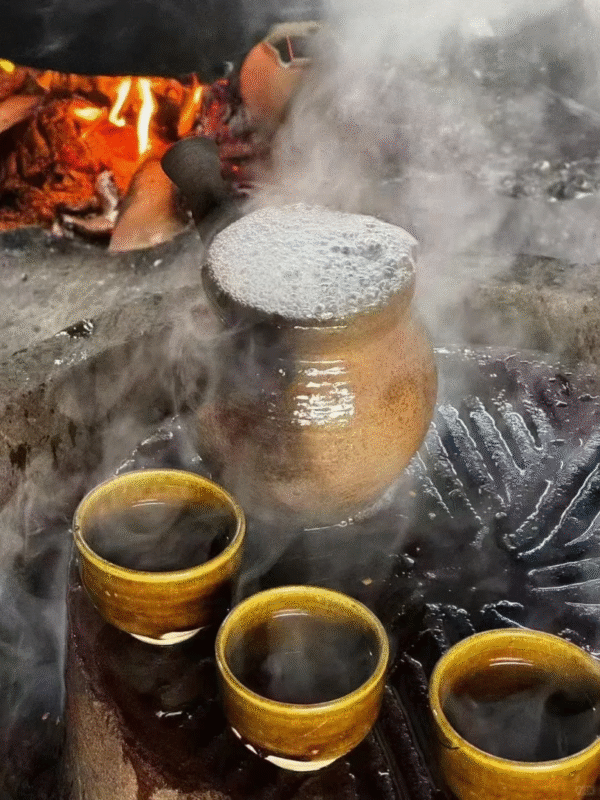
Gift experience: [Mabang Thunder Tea] Use the traditional way of the caravan to start a wood fire, boil water with fire, charcoal roast tea leaves, and then brew a pot of Thunder Tea, Wear a sense of tranquility, listen to the story of tea and tea mountain introduced by the tea artist, and spend the afternoon in the most comfortable way (Note: Gift items, if you can't arrange it for special reasons or give up for your own reasons, no fee can be refunded); After dinner, check in to the hotel.
Mabang Leixiang tea, is a living cultural symbol bred by the ancient tea horse road in western Yunnan, originated from the ancient caravan style meal when sleeping in the open "fire pond tea" - caravan overnight fire, roast Yunnan large-leaf tea and glutinous rice in clay pots, when the burnt fragrance overflows, rush into the boiling water, heat stirring the jar to send out "goo" thunder (like spring thunder faint sound), implying the recovery of all things, business fortune prosperity, so renamed "thunder tea". It carries the survival wisdom and spiritual sustenance of the caravan: the rough roasting tea skills (roasting rice, boiling tea, boiling water and canning) to dispel the cold and relieve fatigue, and the thick tea soup is quenched in the smoke and fire, and the hookah "grunt" is used to suck and drink, which has become a unique rest ritual of the Silk Road Station; Its sound is like thunder, and it also implies the prayer of the business traveler to "thunder and prosperity", and integrate the power of nature into the livelihood of the rivers and lakes.
Gastronomy arrangement: Breakfast - Hotel buffet. Lunch - at your own expense. Dinner: at your own expense.
According to the flight time to Mangshi Airport, take the flight back to the warm home, here, all the service staff of our company wish you a safe journey, look forward to your coming to Yunnan again!!
Includes/Excludes
Cost Includes
- Accommodation standard: Mangshi Ctrip 4 diamonds, Ruili Tengchong Ctrip 5 diamond hotels.
- Dining standard: hotel with breakfast, 5 breakfast, 8 p.m., meal standard 50 yuan/person/positive; Meals are not included for groups of up to 6 people.
- Ticket standard: the first ticket for the scenic spots listed in the itinerary, volcano two-way battery car, Atami two-way battery car, Beihai one-way cruise; Heshun one-way battery car, Simola two-way battery car, experience Baba Baba.
- Gift experience: Dream Tengchong B ticket, Yunnan Eighteen Monsters - eggs are sold on strings, and Mabang Lei Xiang tea.
- Car standard: according to the number of people to arrange the car, 2-3 people 5-seater car, 4 people arrange 7-seater business car, 6 people arrange 9-seater business car, 8-12 people arrange 18 tour bus, to ensure that one person is one seat.
- Transportation standards: Round-trip tickets are not included.
- Tour guide standard: This product has less than 6 people (including 6 people) and guide services, and more than 8 people (including 8 people) will arrange excellent tour guides to explain the whole process.
- Safety standards: Travel agencies purchase Yunnan travel package insurance for tourists, please purchase travel accident insurance by yourself, or entrust a travel agency to purchase.
- Children's Description: Children aged 2-12 years old do not occupy a bed, do not include breakfast, do not include tickets, only include local parking fees, Yunnan travel package insurance, ultra-high tickets, breakfast and other expenses such as extra beds, please parents are responsible for themselves.
Cost Excludes
- Expenses incurred due to personal needs during the free and easy period indicated in the itinerary (including transportation and meals during the free and easy period). Guests can choose their own personal consumption items.
- Single room difference or extra bed.
- Key plate deposit for hotel check-in.
- Meals and transportation during free time.
- Additional costs due to unforeseen events such as traffic delays, cancellations, or force majeure such as wars, strikes, natural disasters, etc.
- Personal expenses: including telephone, fax, laundry, pay TV, beverages, etc. Laundry, haircut, telephone, drinks, tobacco and alcohol, pay TV, personal expenses such as porterage; Visa-related fees such as notarization, legalization and other related fees for minors.
- Baggage custody or excess weight charges.
- Travel Accident Insurance: Travel Accident Insurance and Aviation Accident Insurance (recommended for tourists).
- Additional expenses due to personal and property losses caused by the tourist's breach of contract, own fault, or own illness.
Additional Tips
Pay attention to the flight time, considering unpredictable factors such as traffic, please check in at the airport in advance to avoid delaying the flight.
Please pay attention to the weather conditions of the destination on the day, and prepare to add or remove clothes before getting off the plane.
In case of special circumstances, according to the itinerary time, the tour guide can arrange the order of the visit itinerary.
- Best Price Guaranteed
- No Booking Fees
- Professional Local Guide
Trip Info
-
Vehicle
-
Tengchong/Mangshi
-
Tengchong/Mangshi
-
English
Related trips you might interested in
Hong Kong Huafang Culture & Technology Co., Ltd.
A Deep Travel Guide to Help the World Perceive China, Embarking on a Cultural Exploration Journey.
